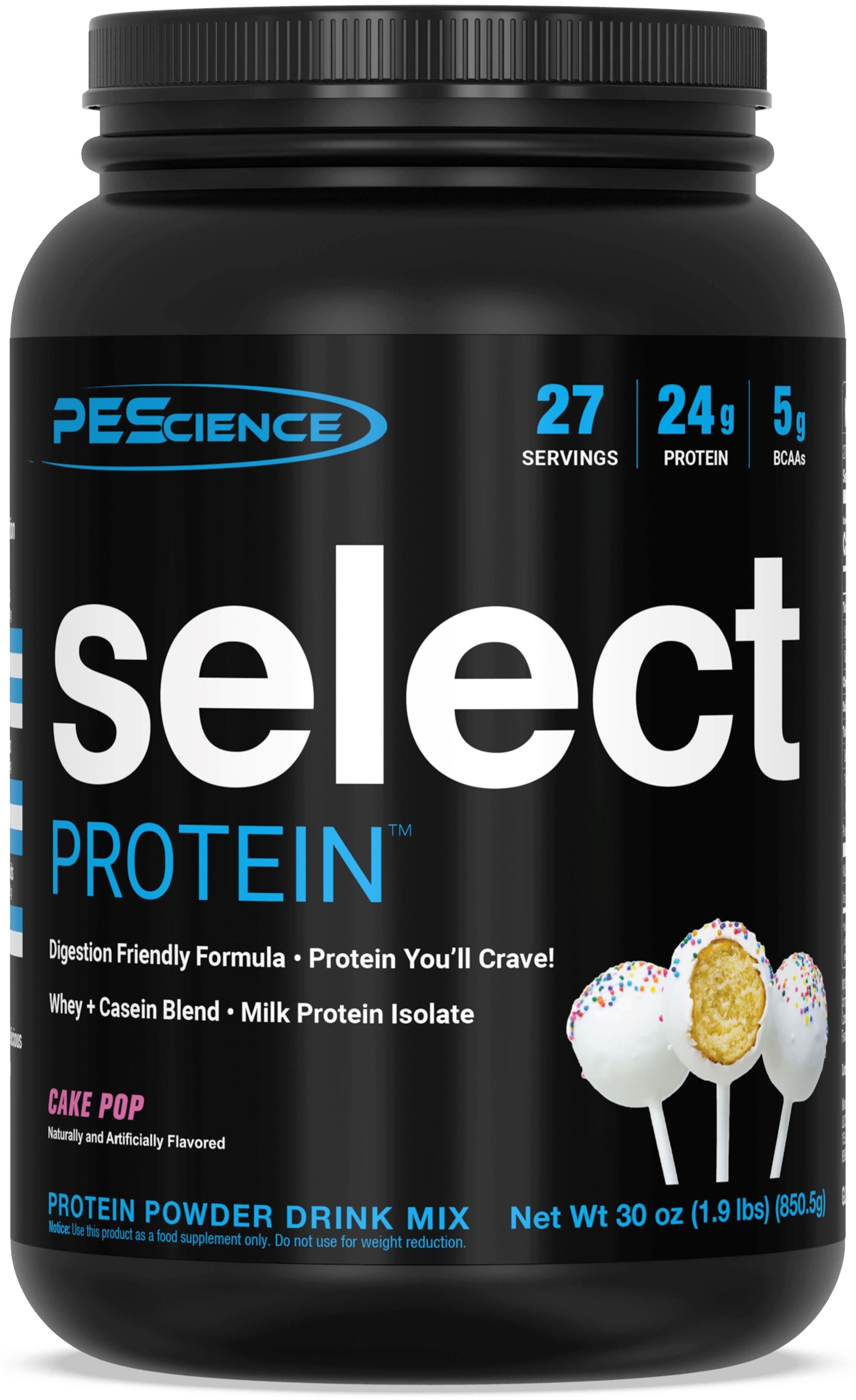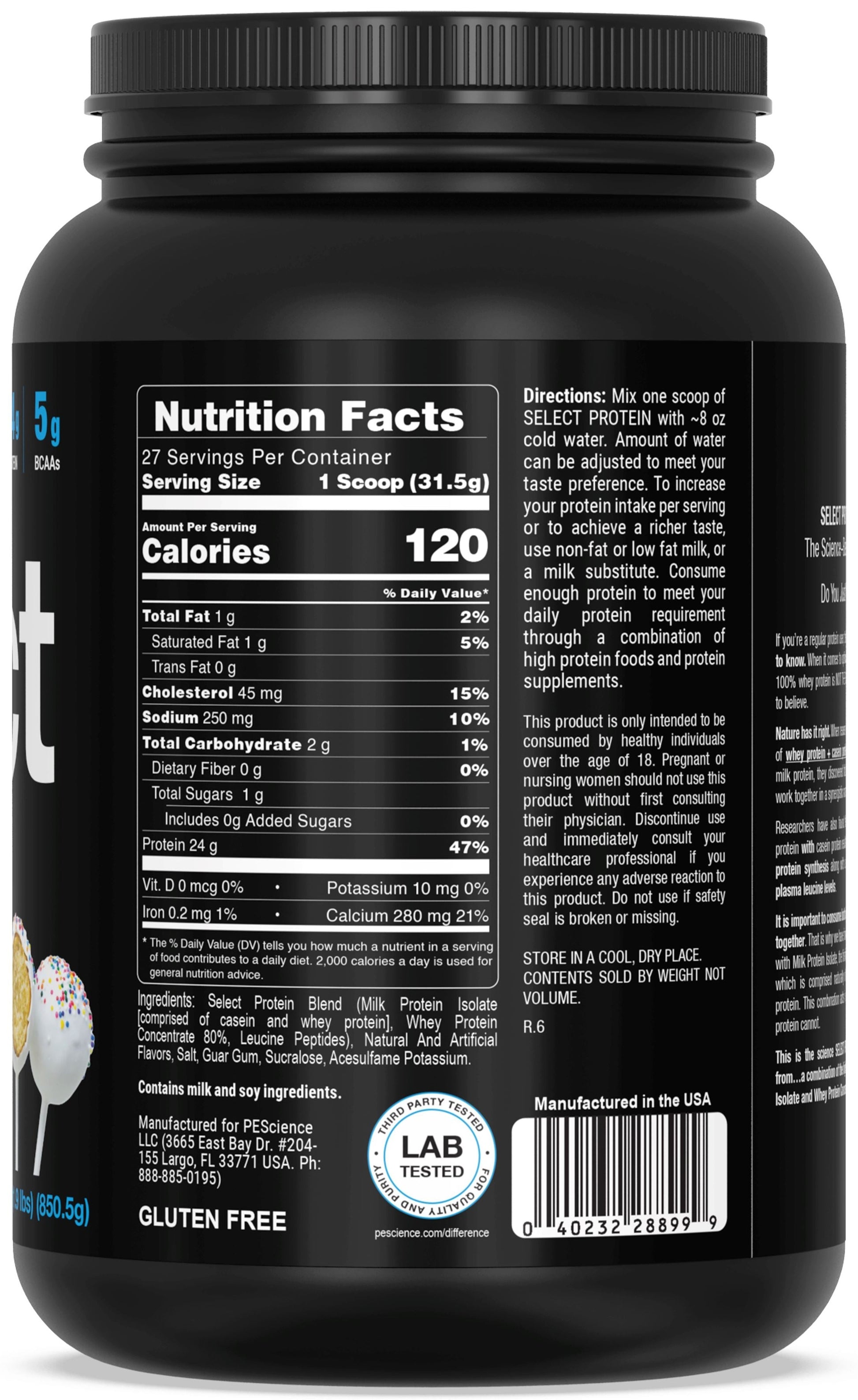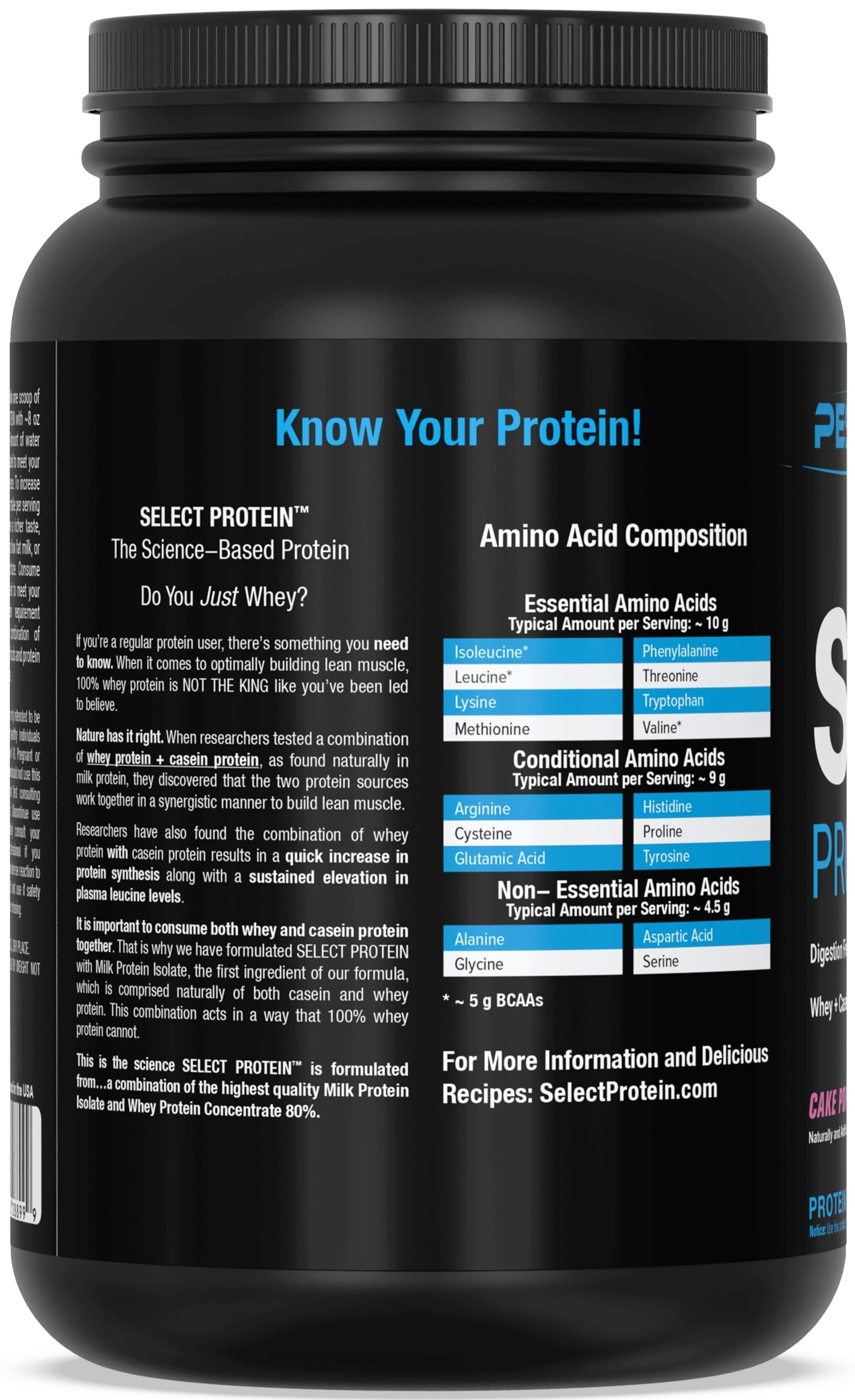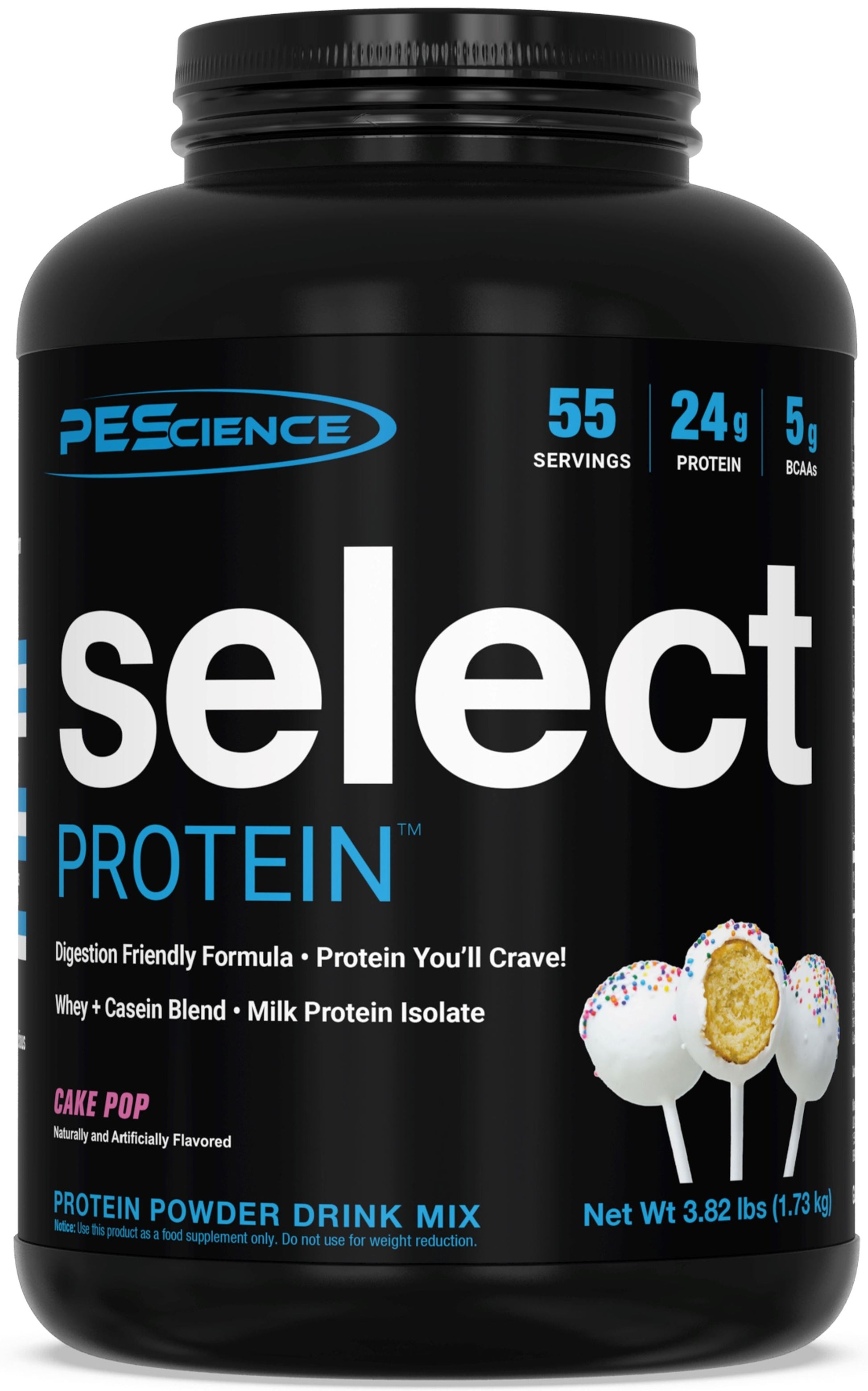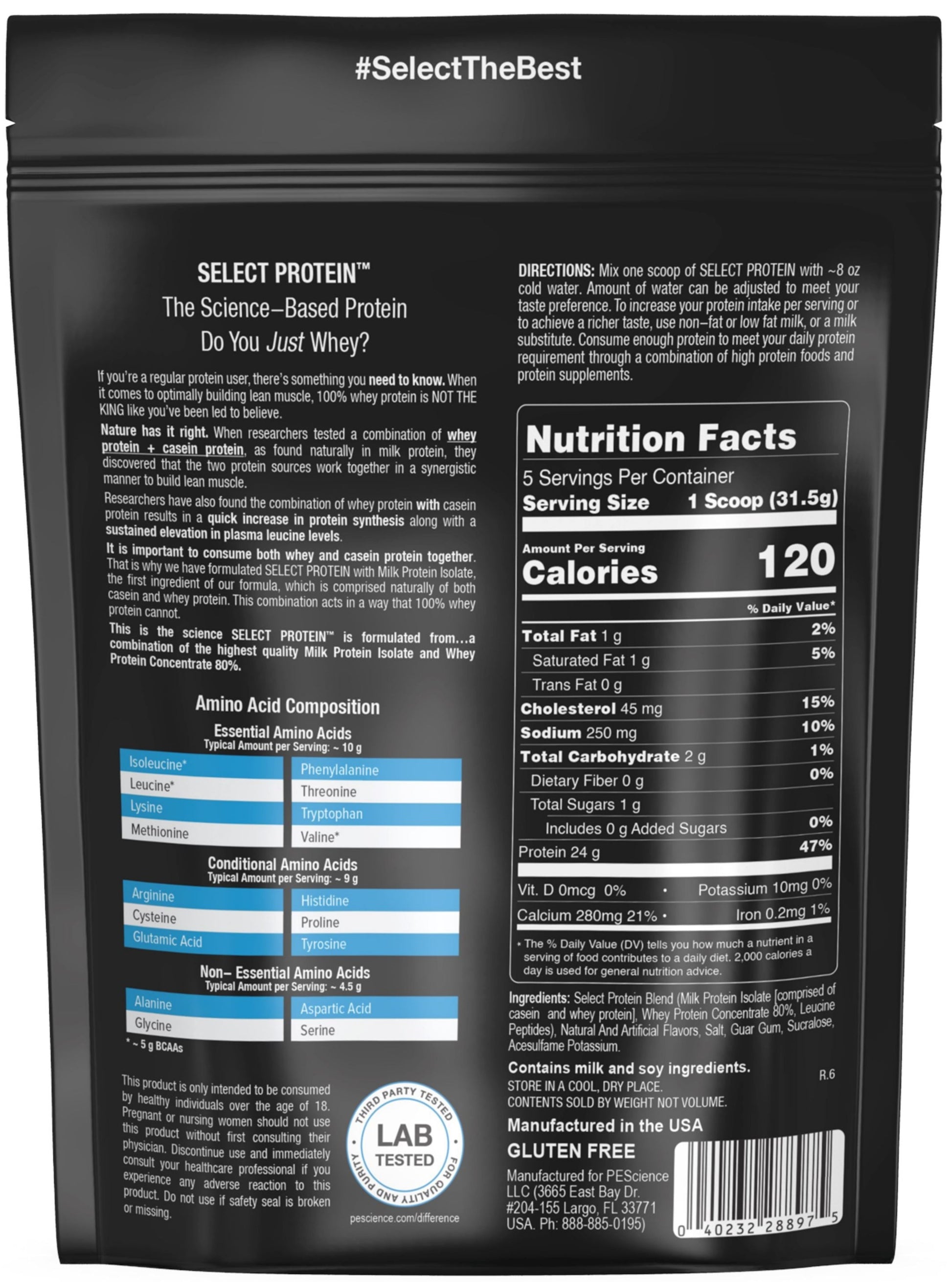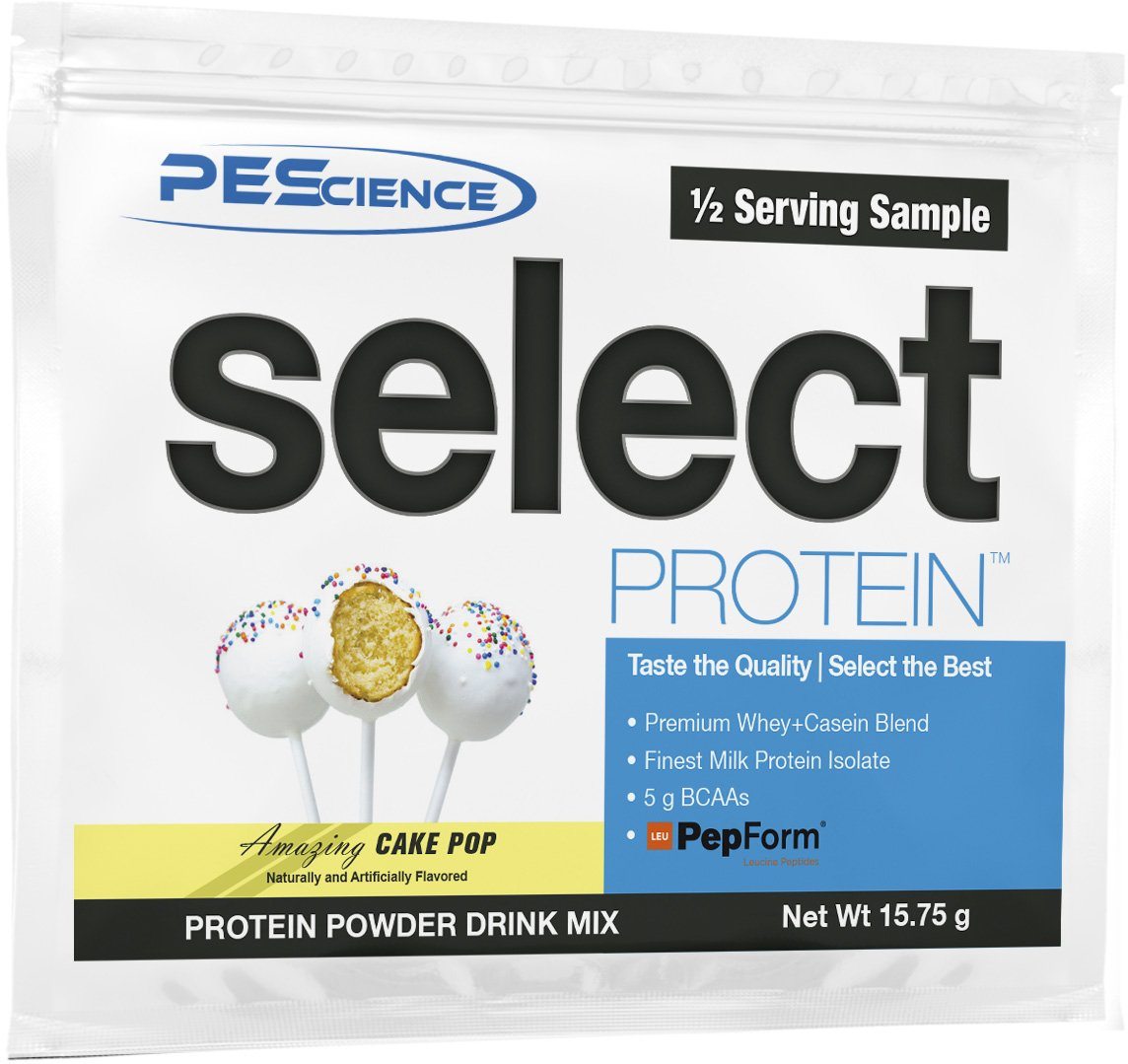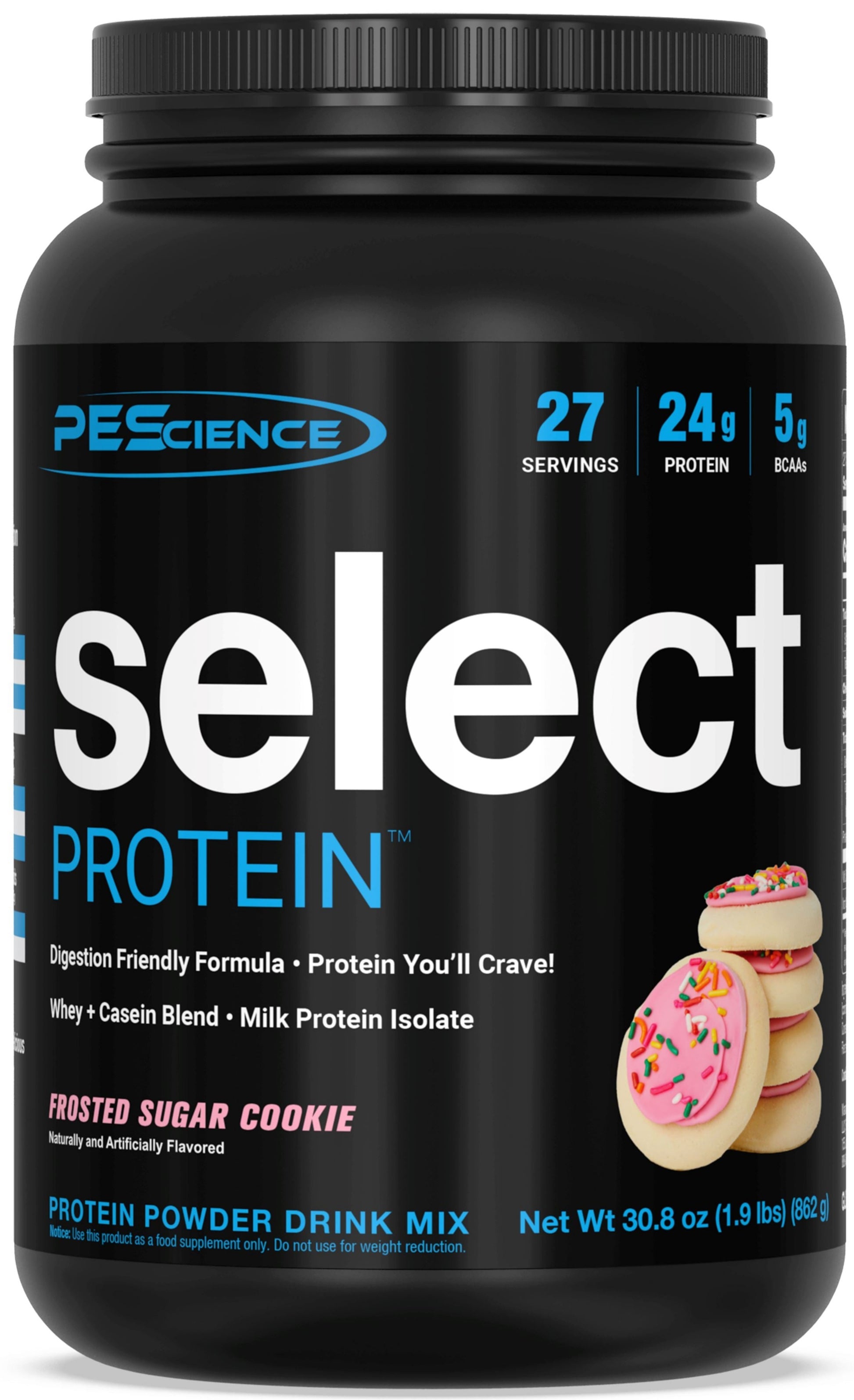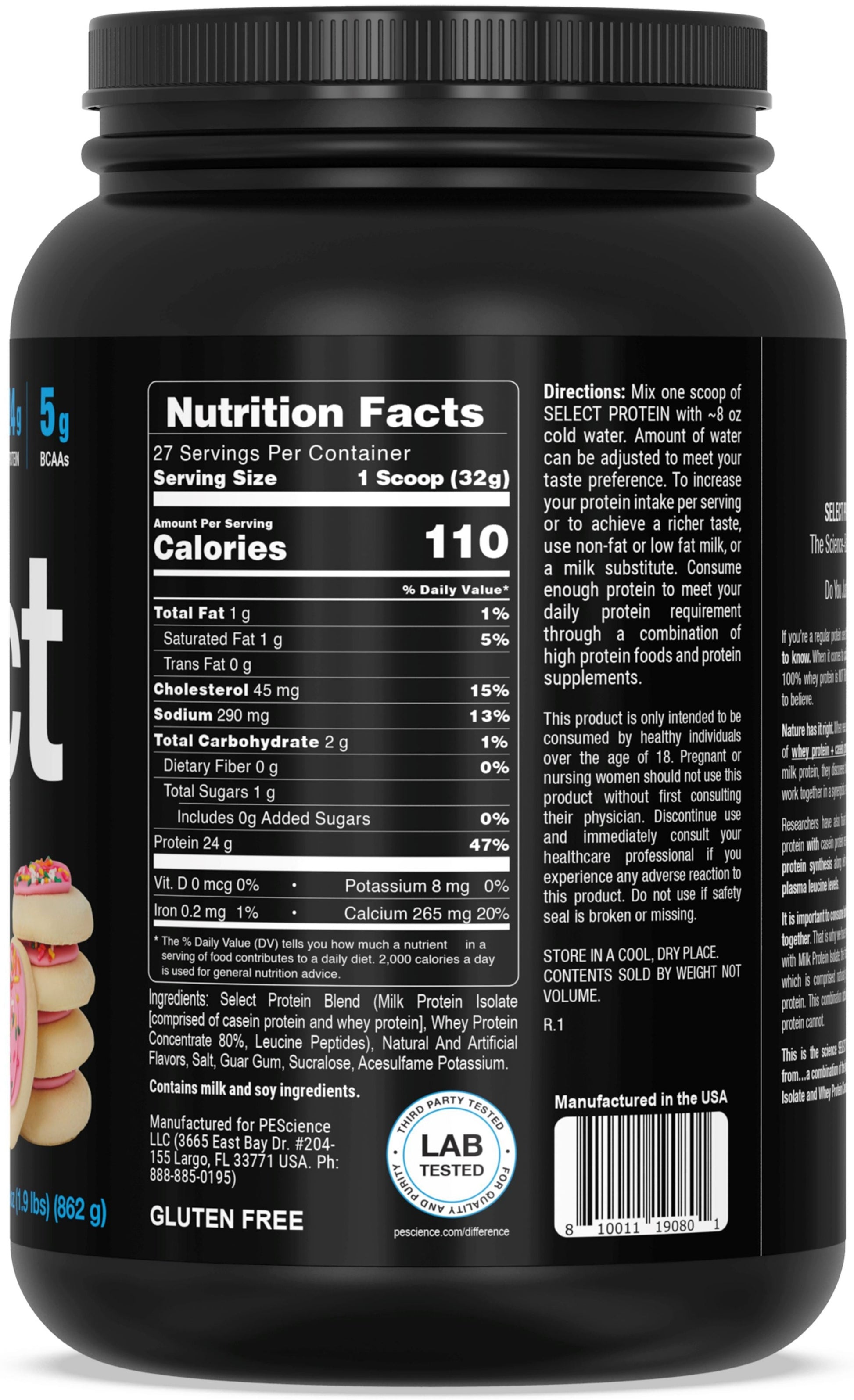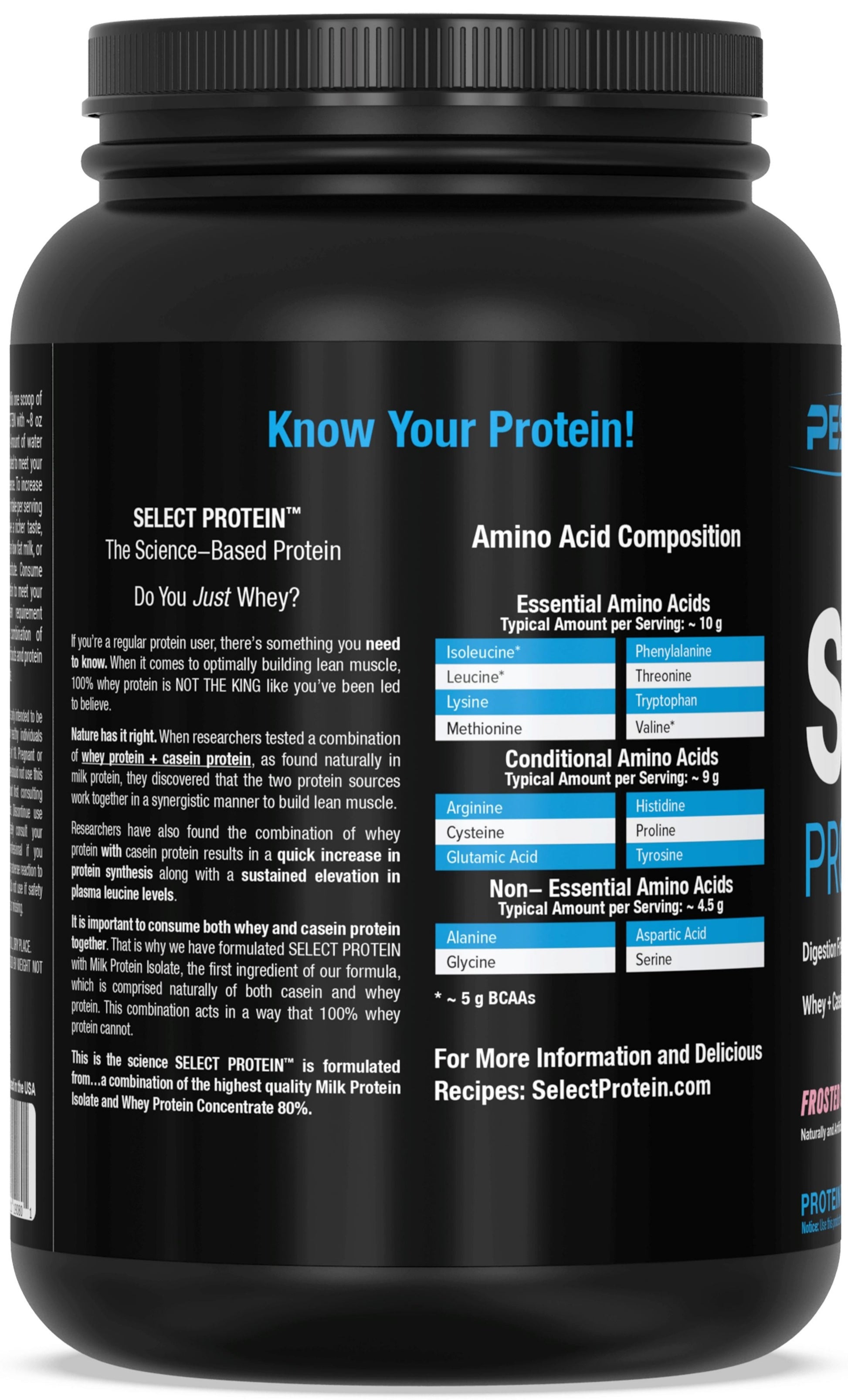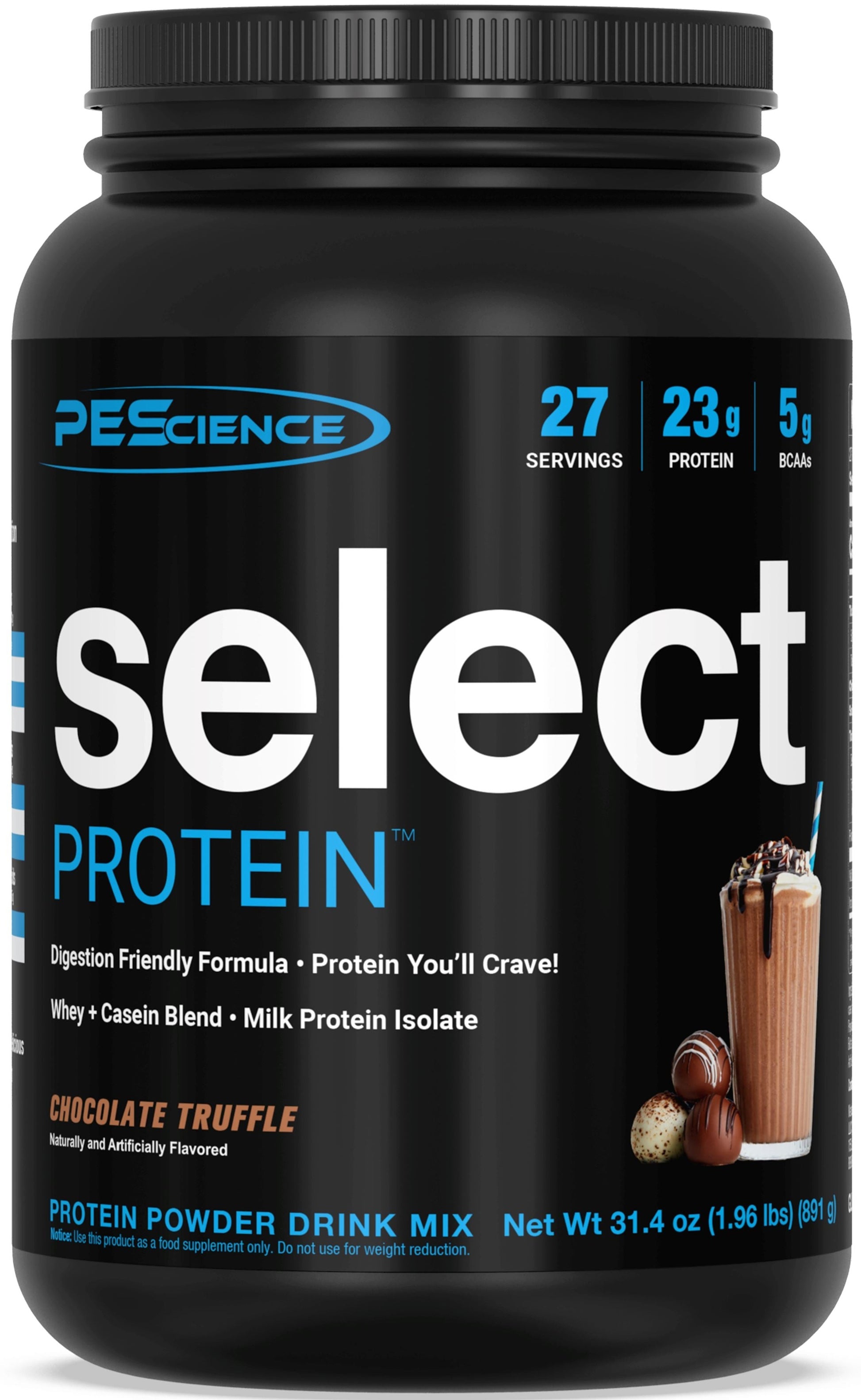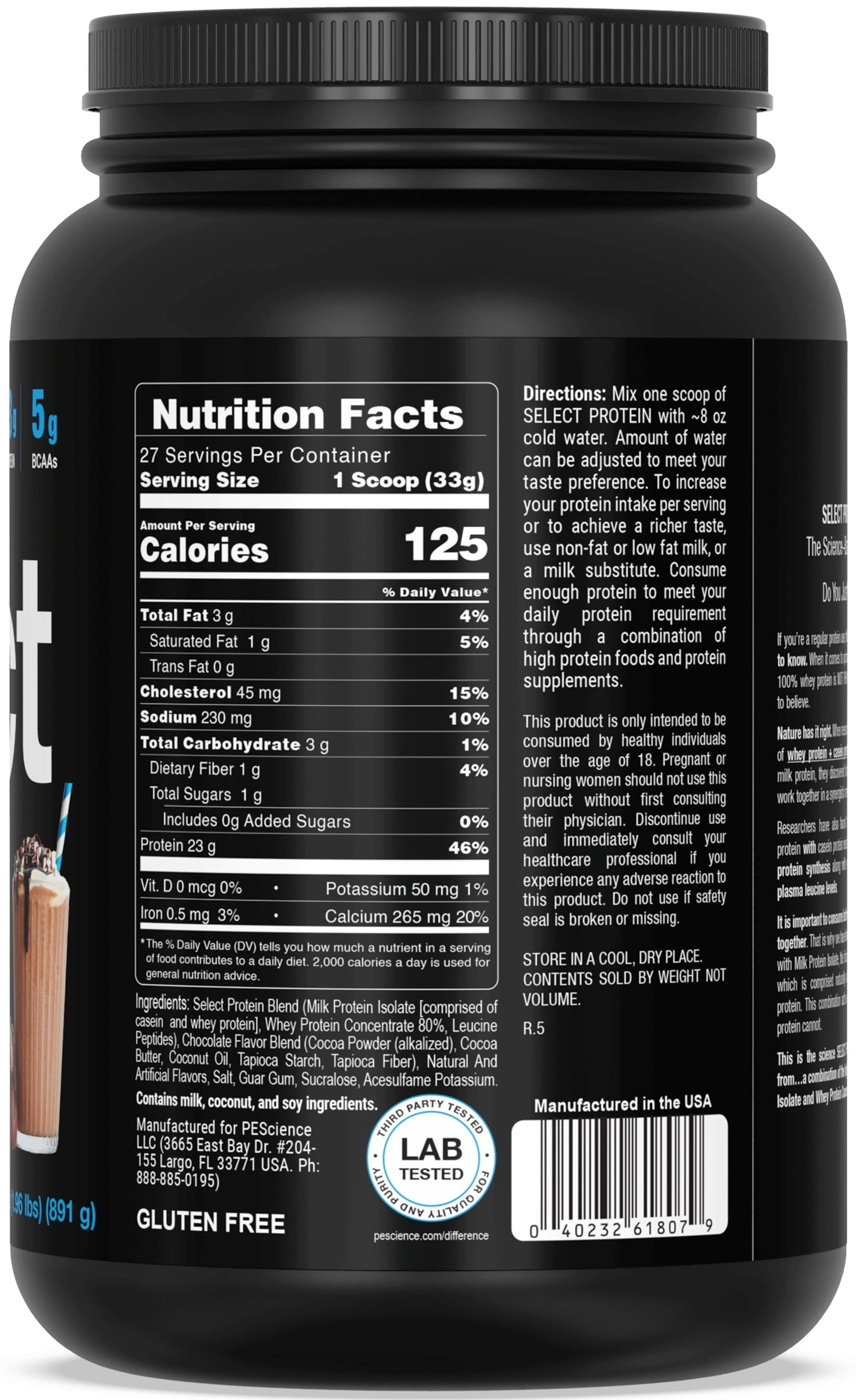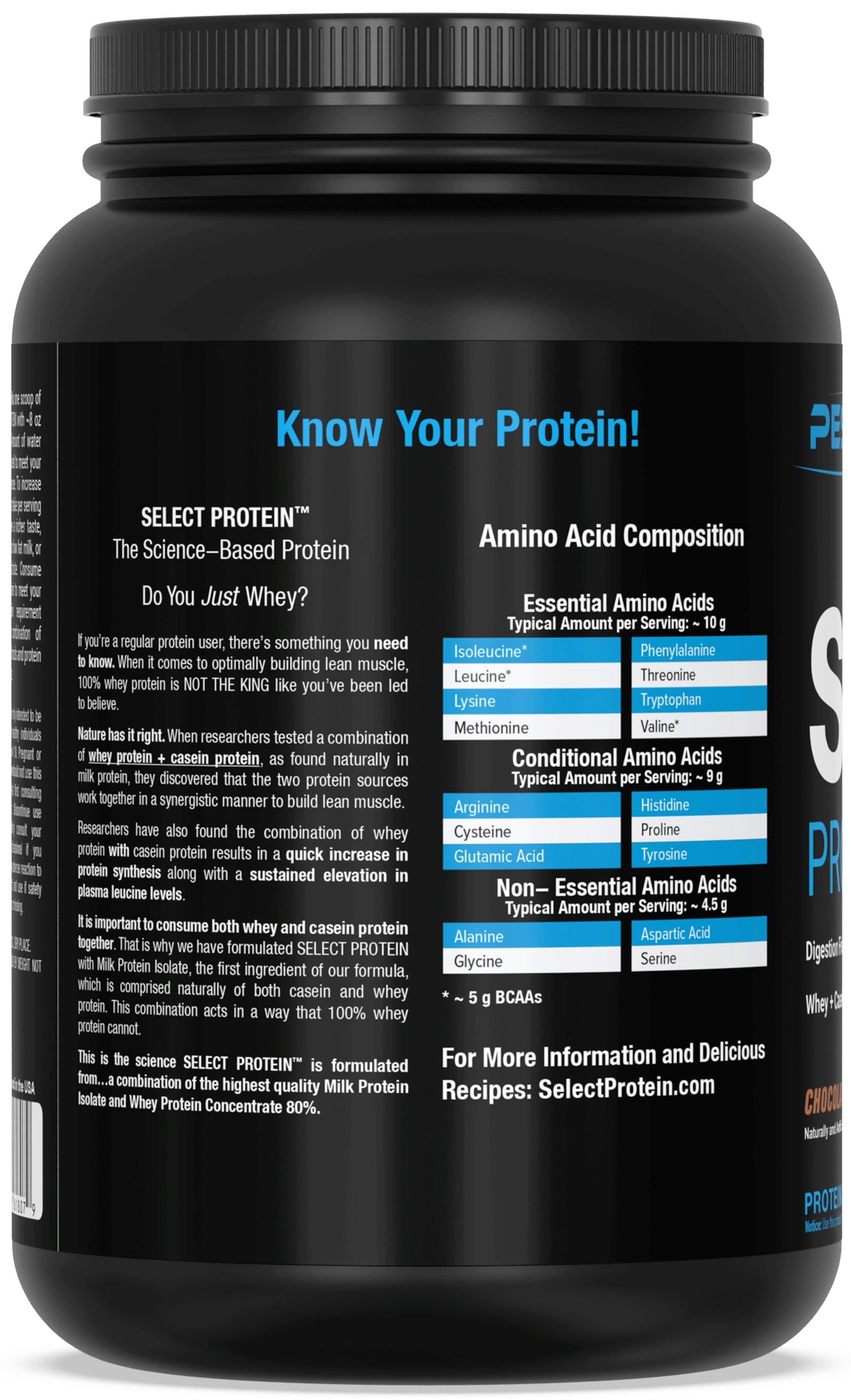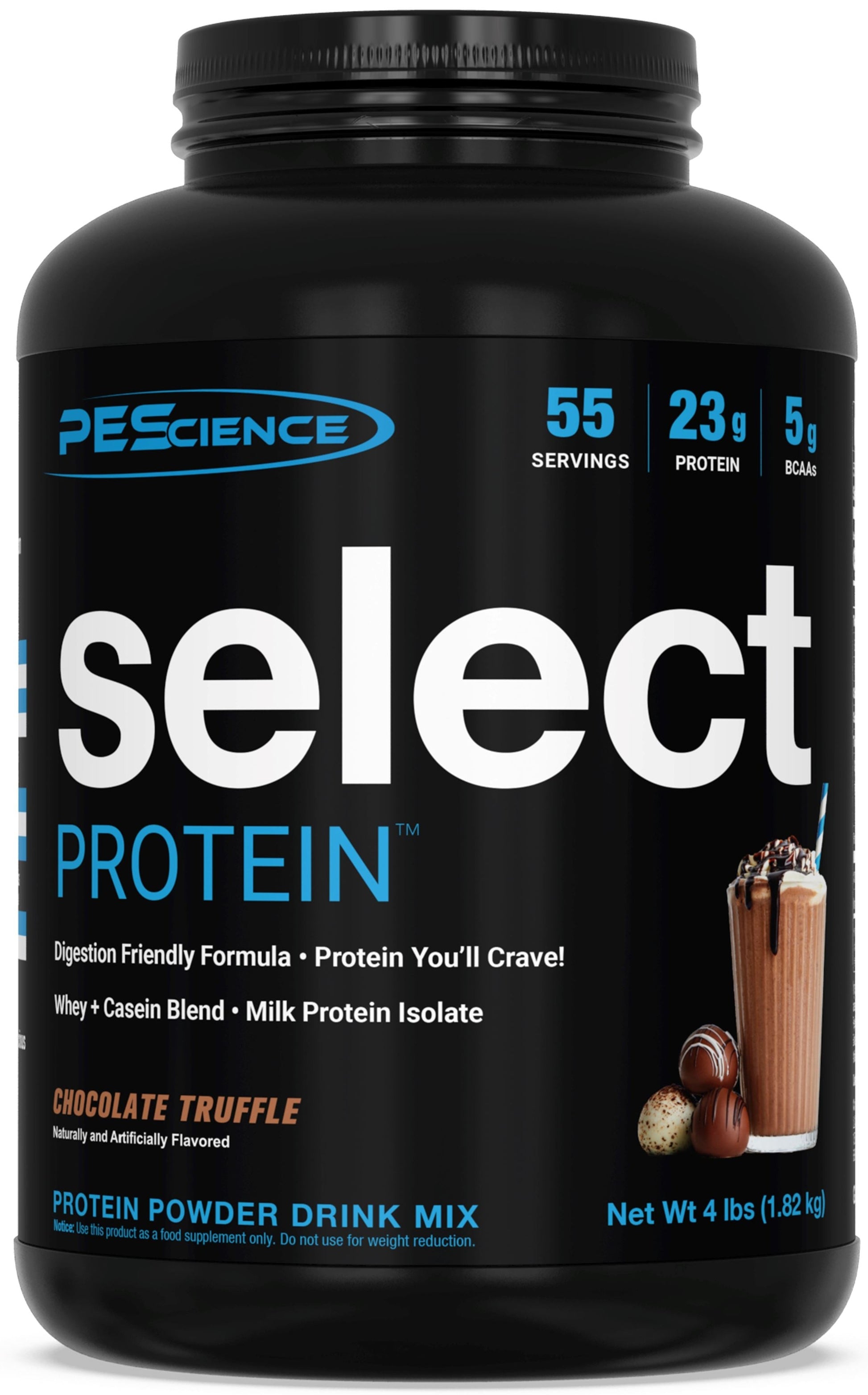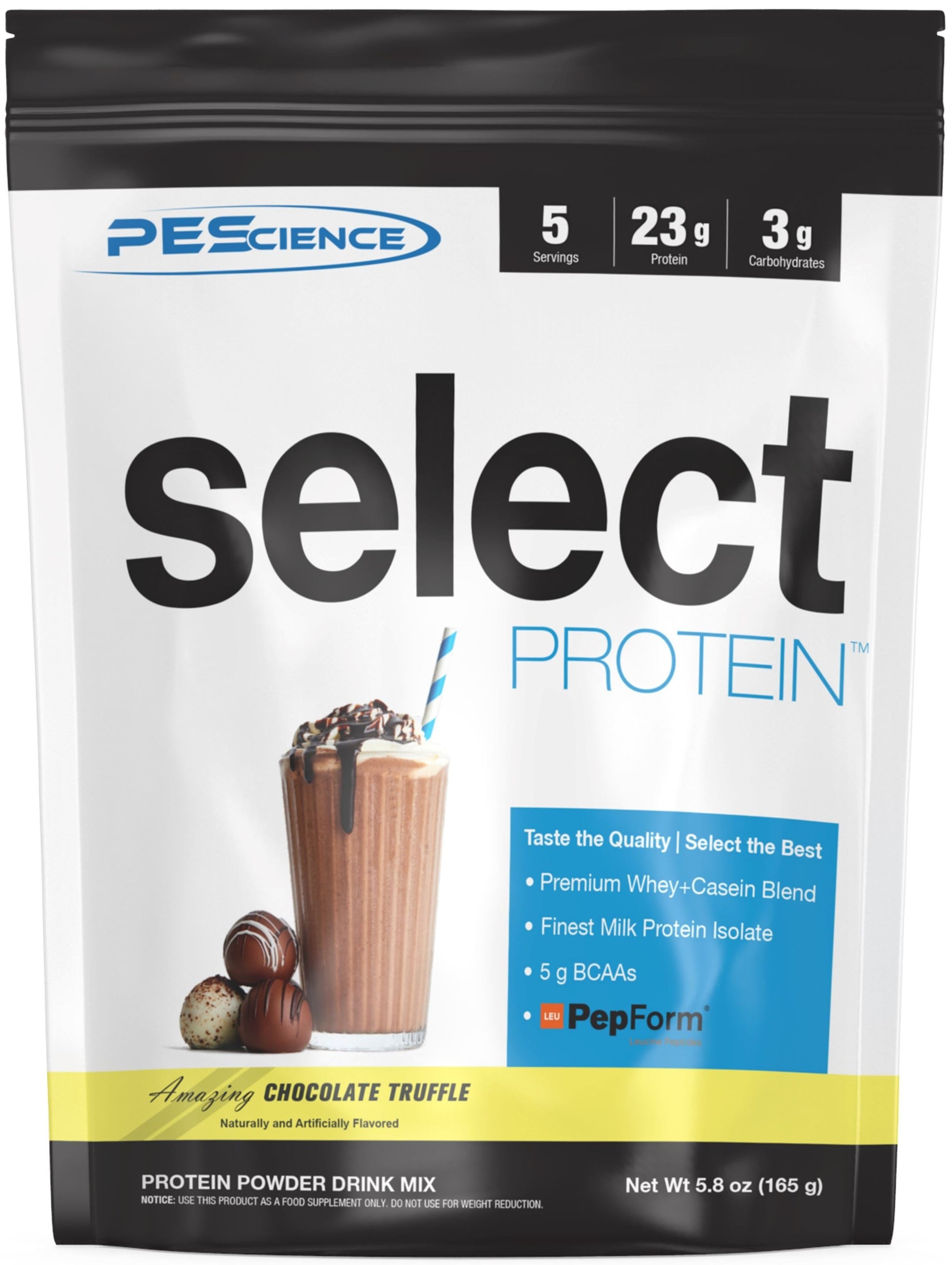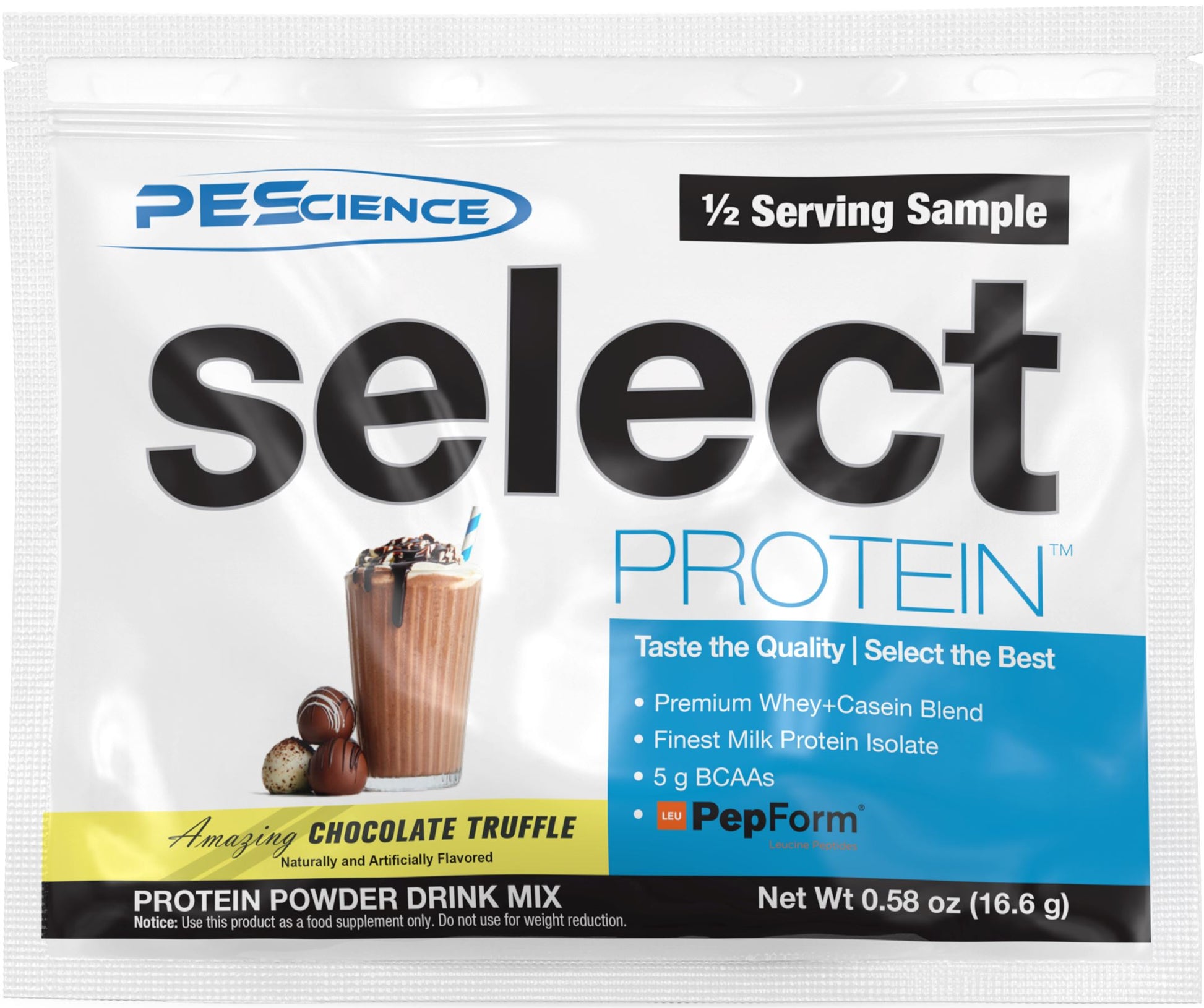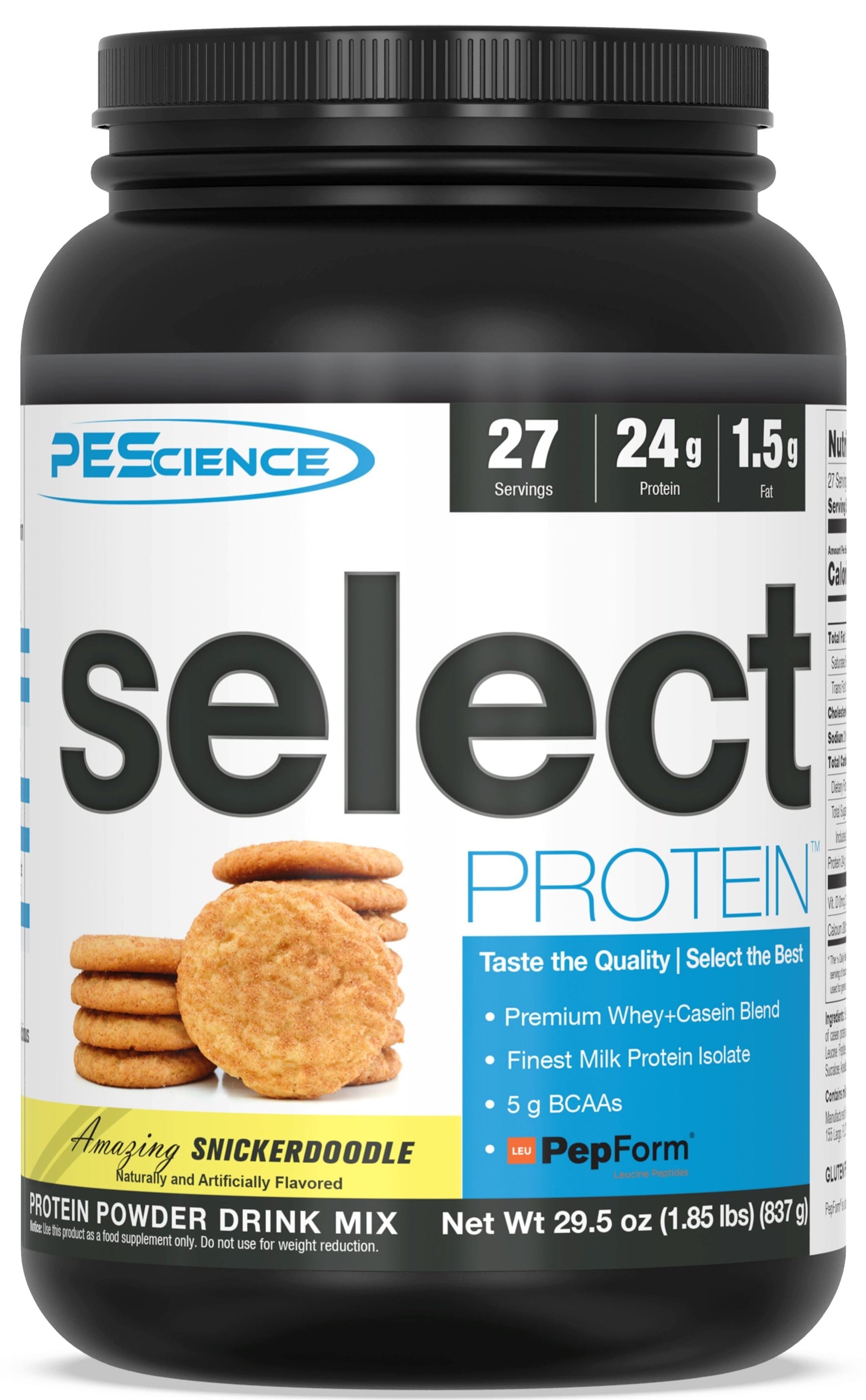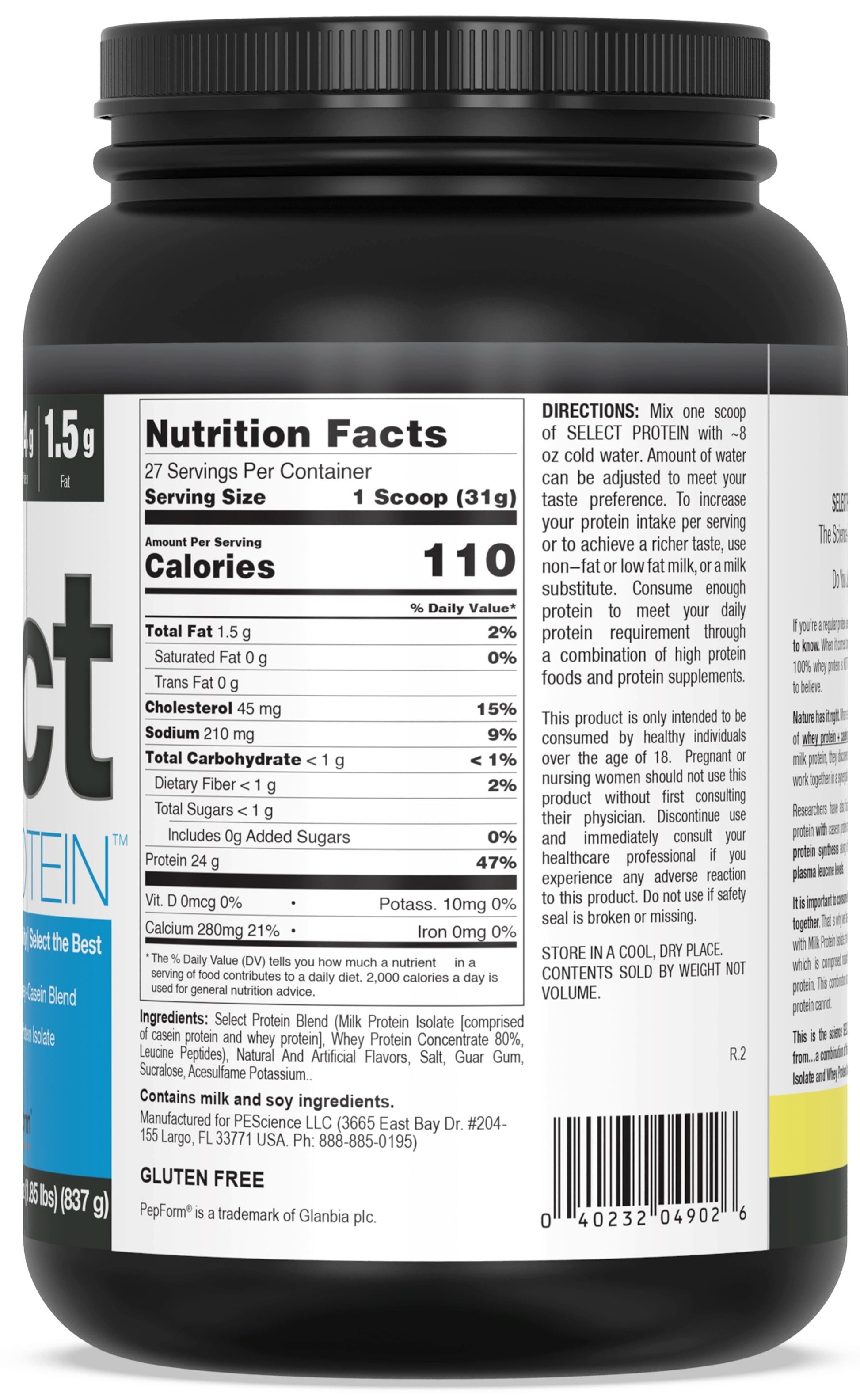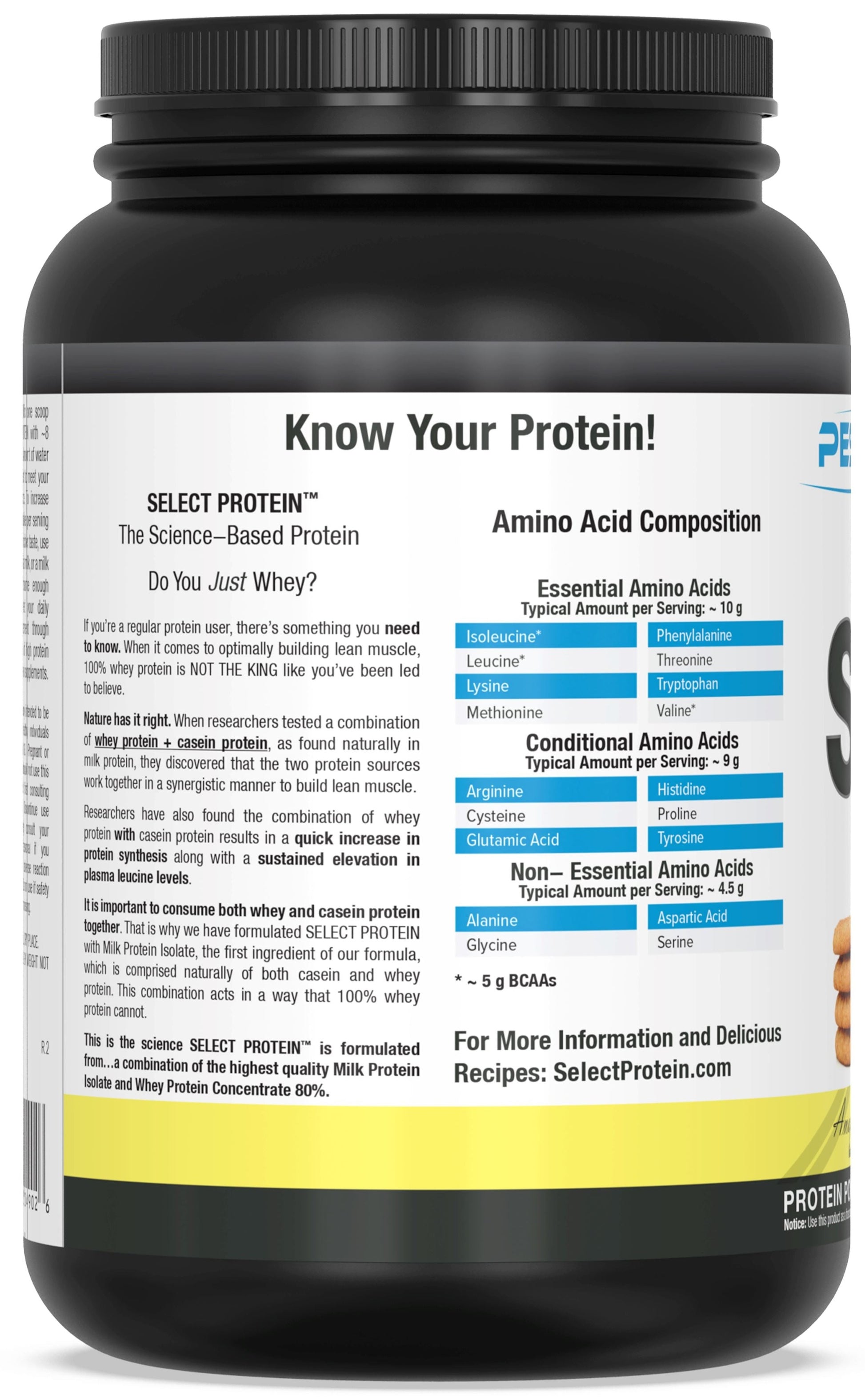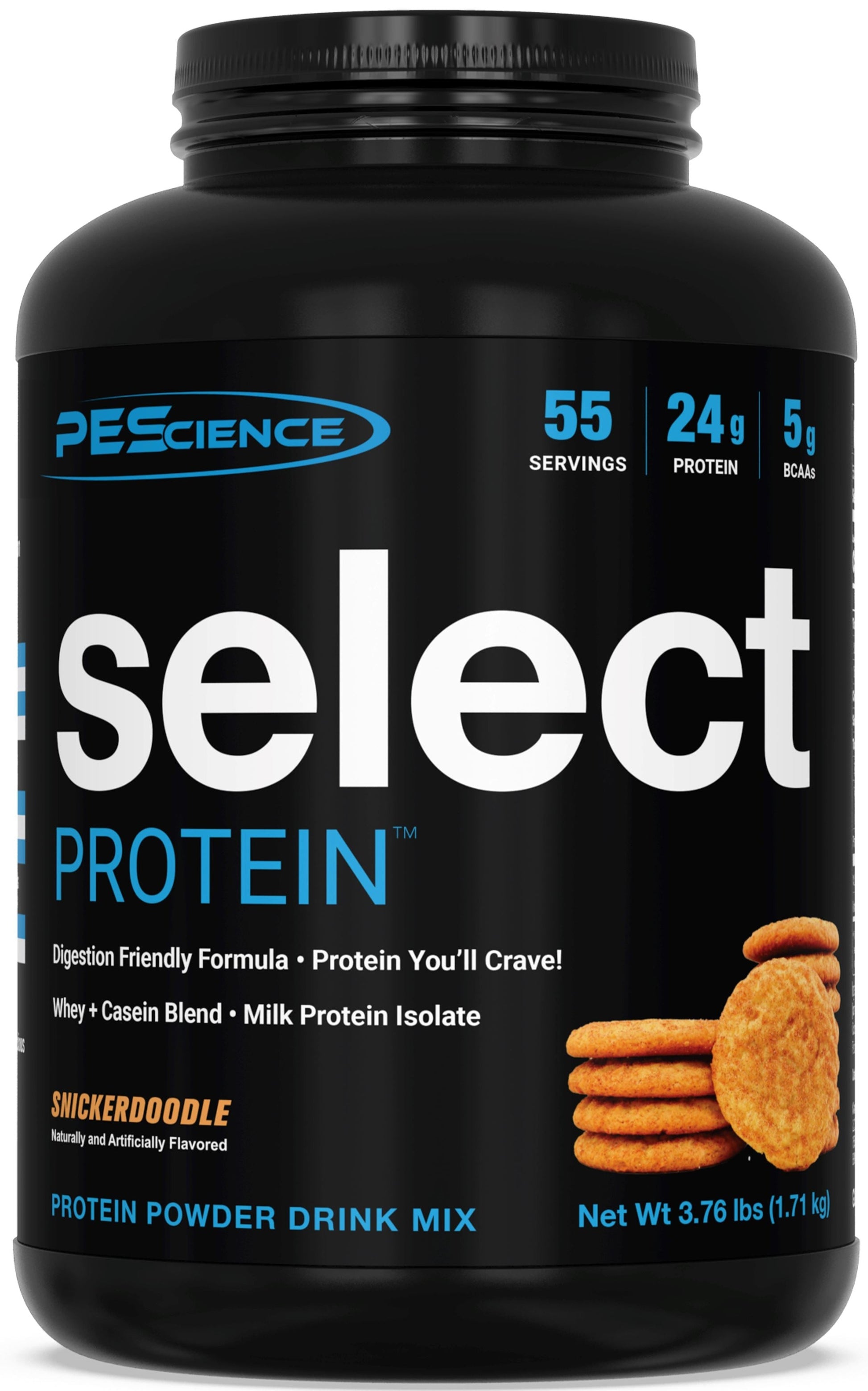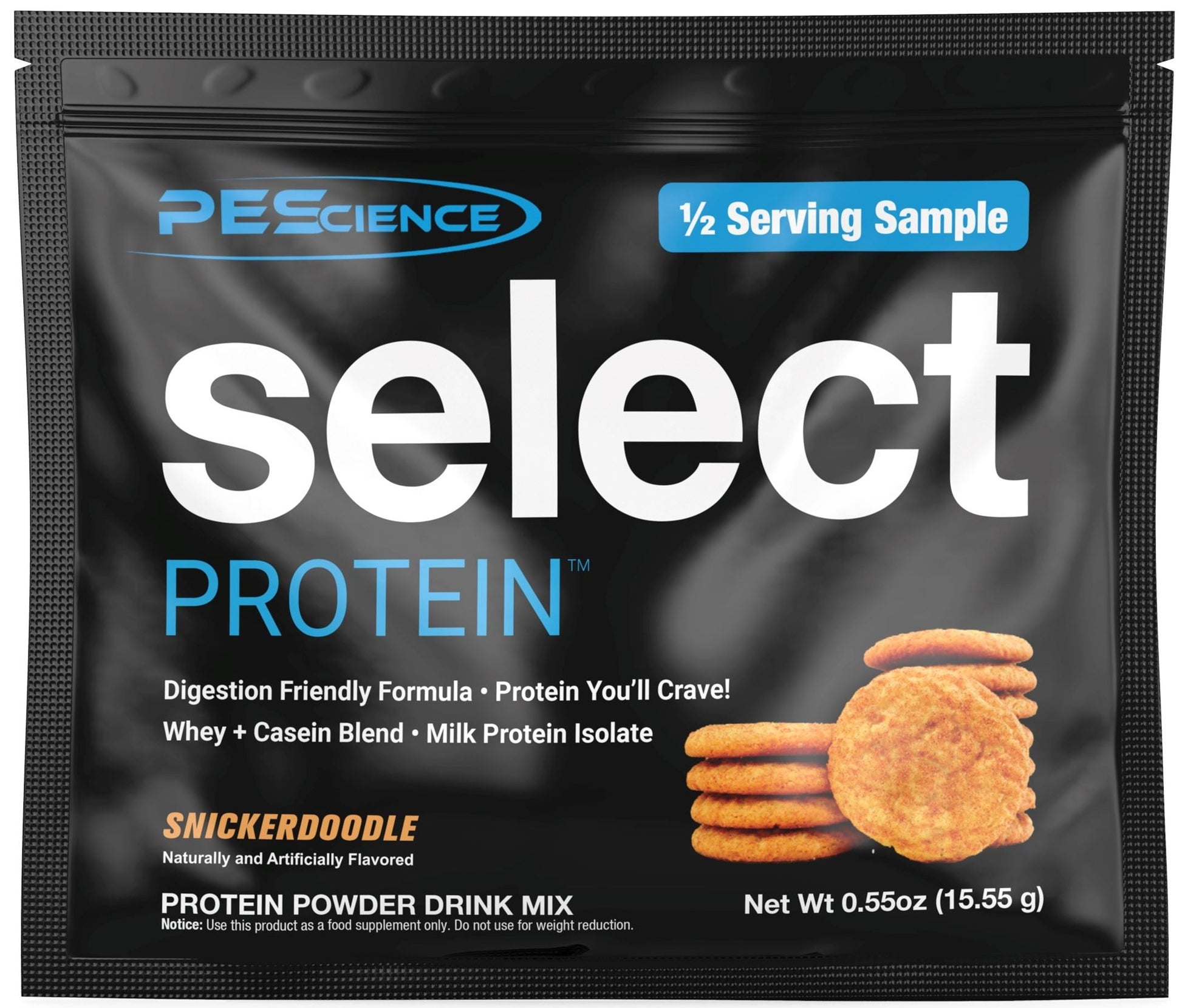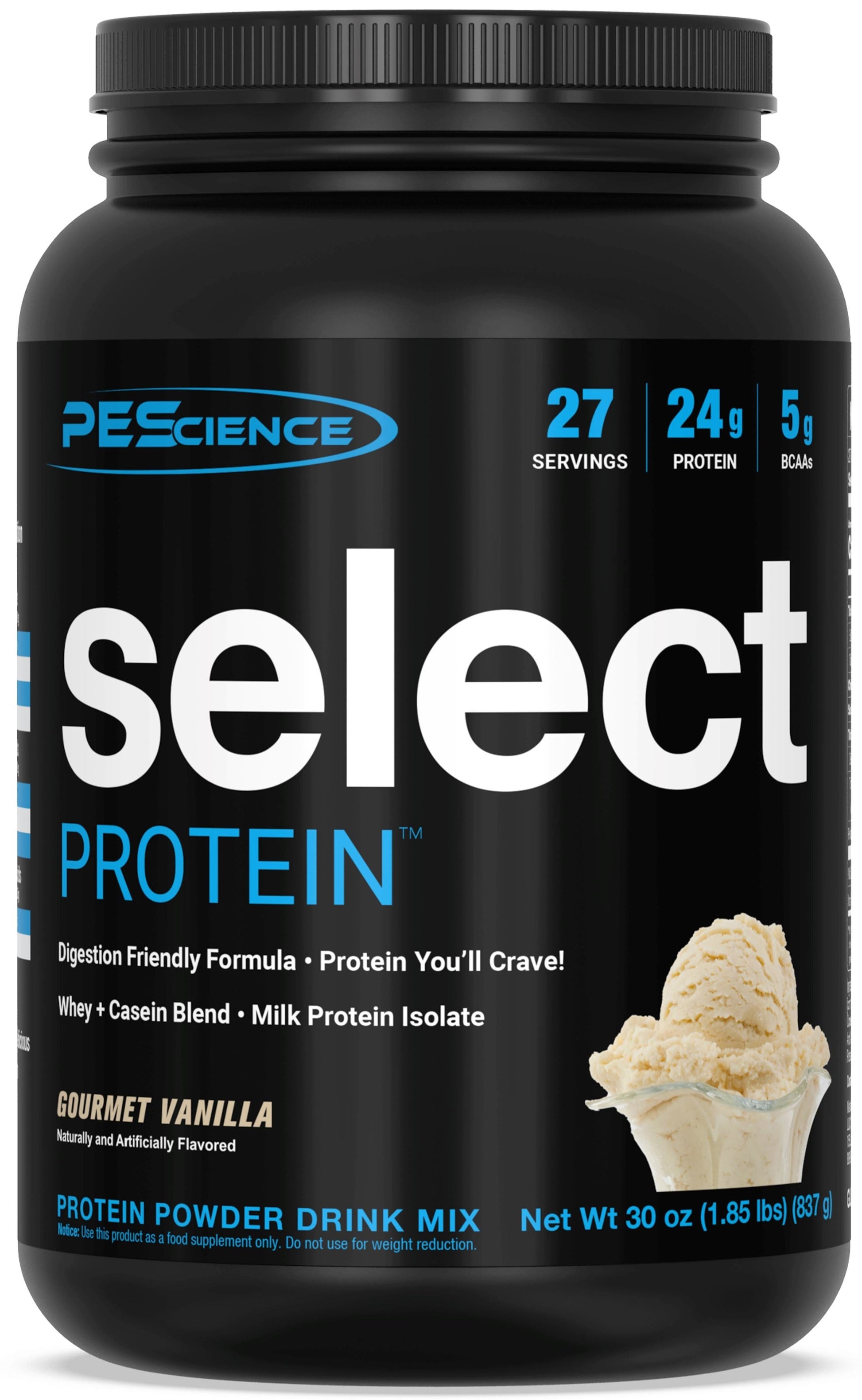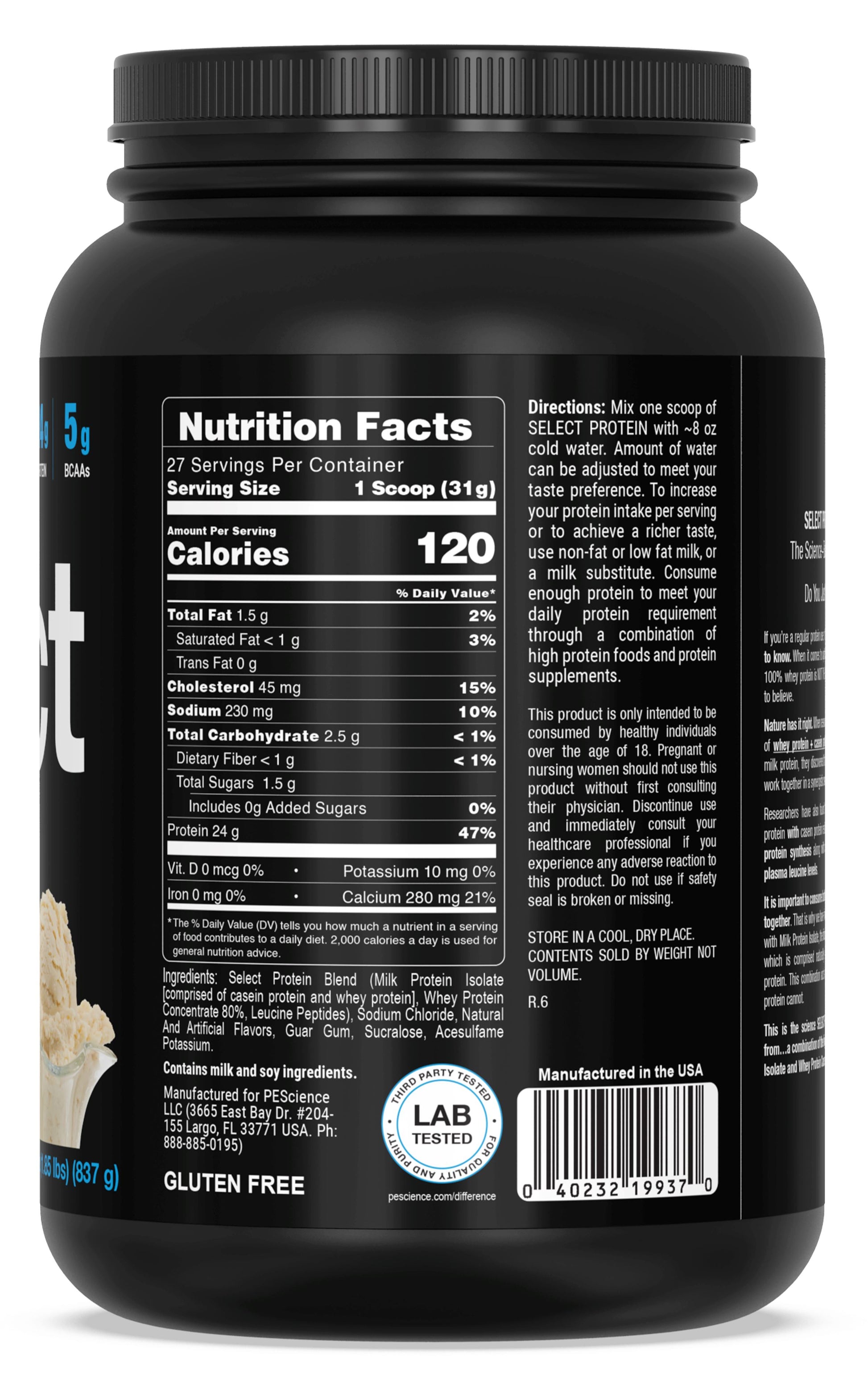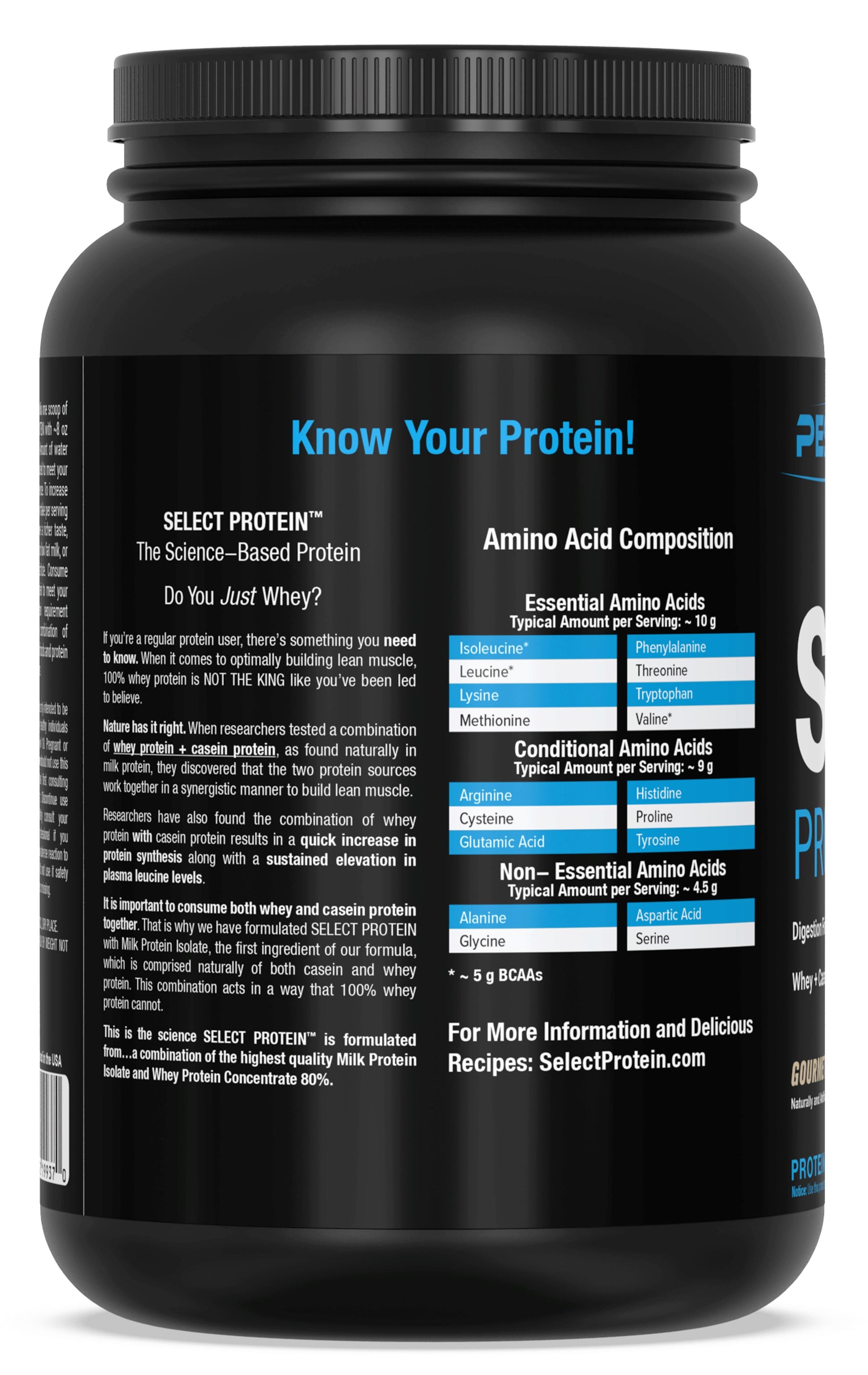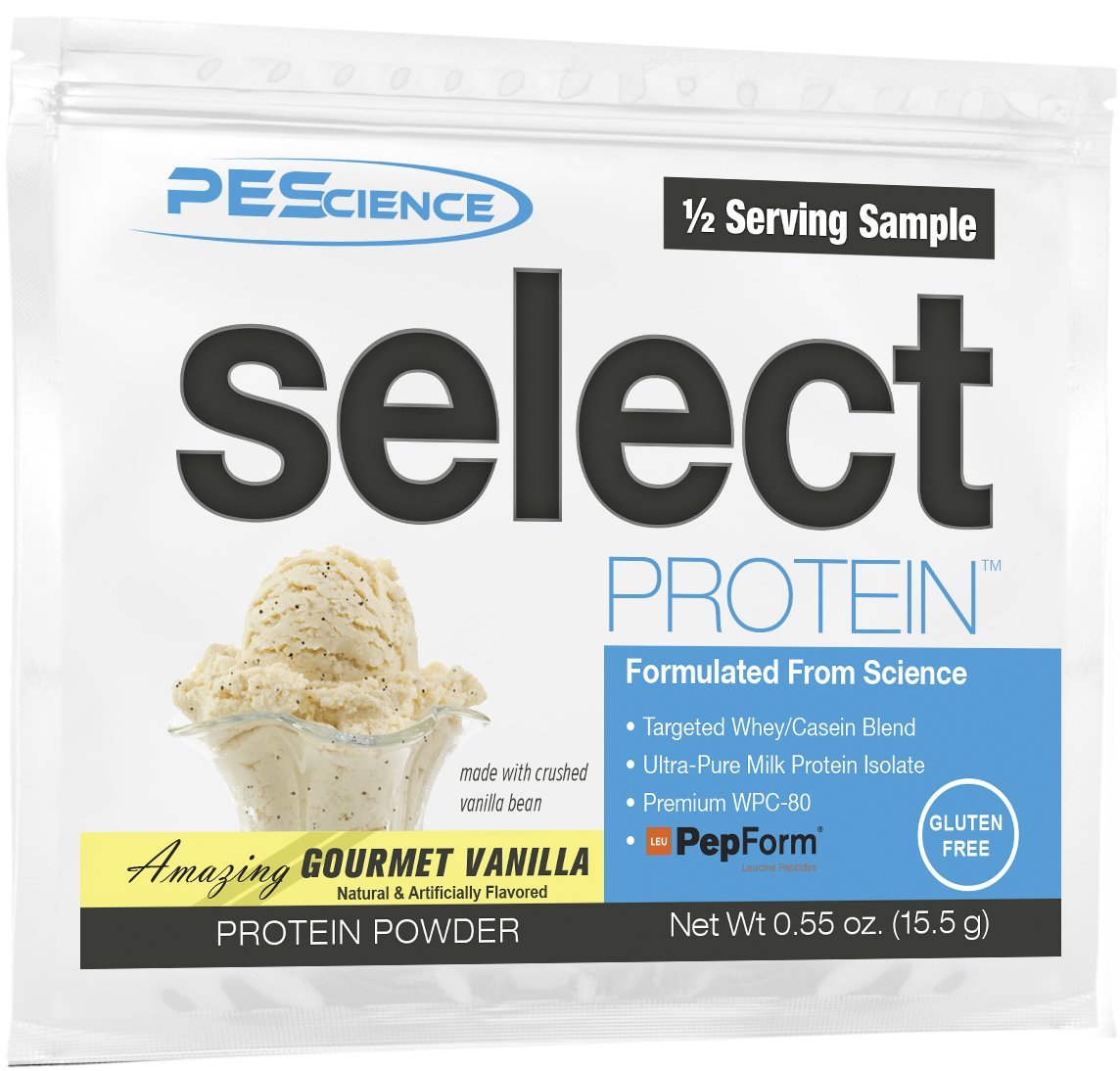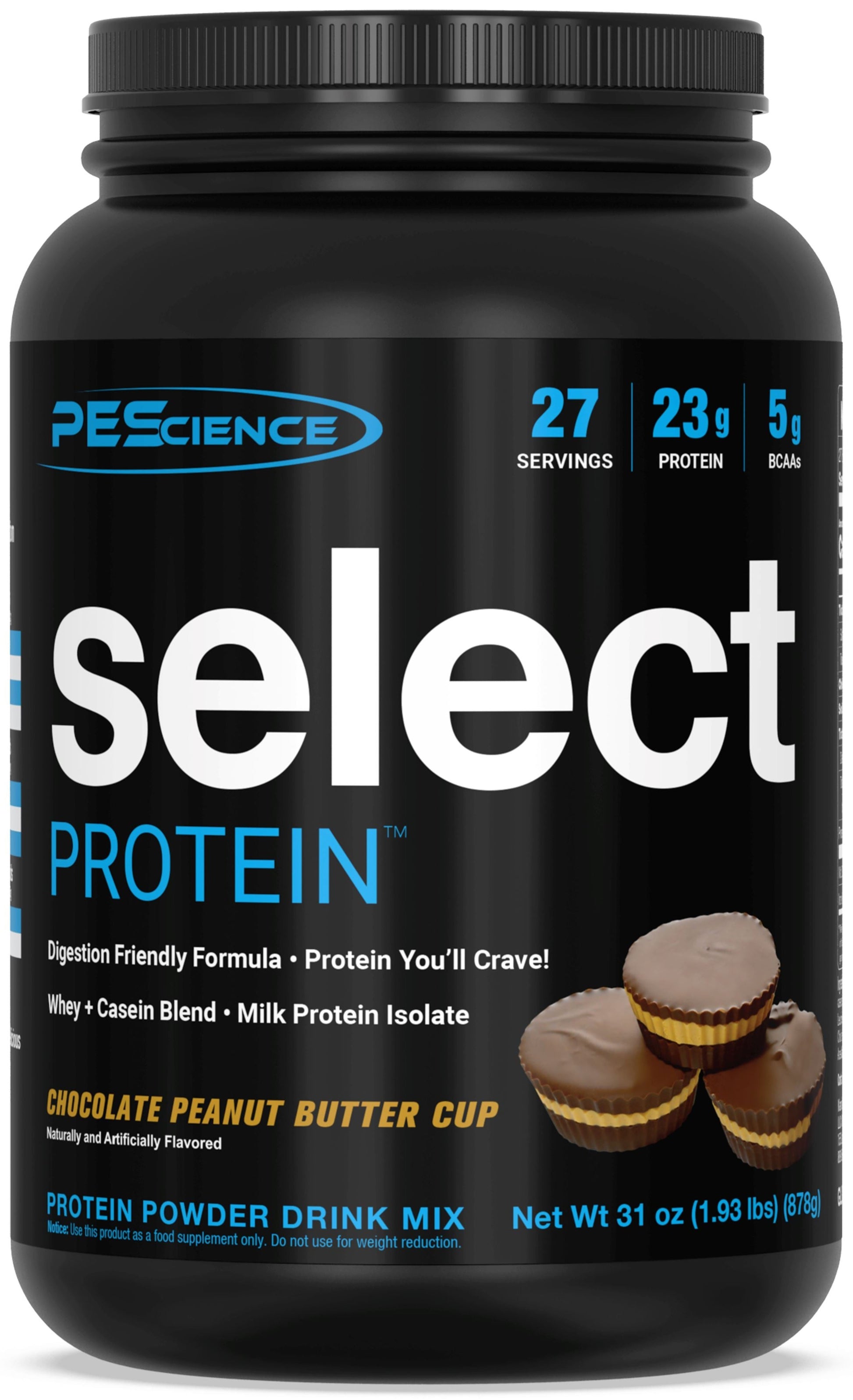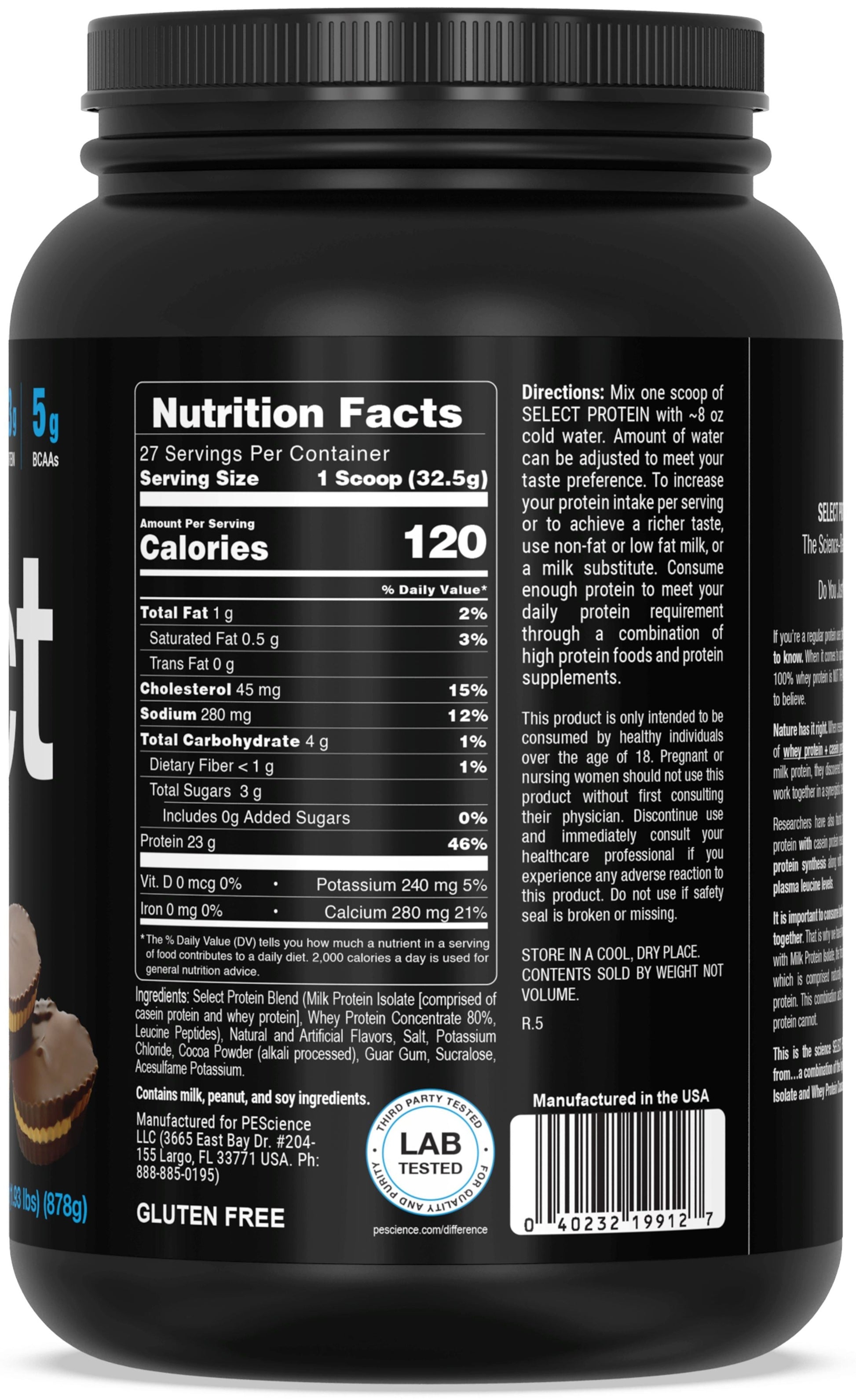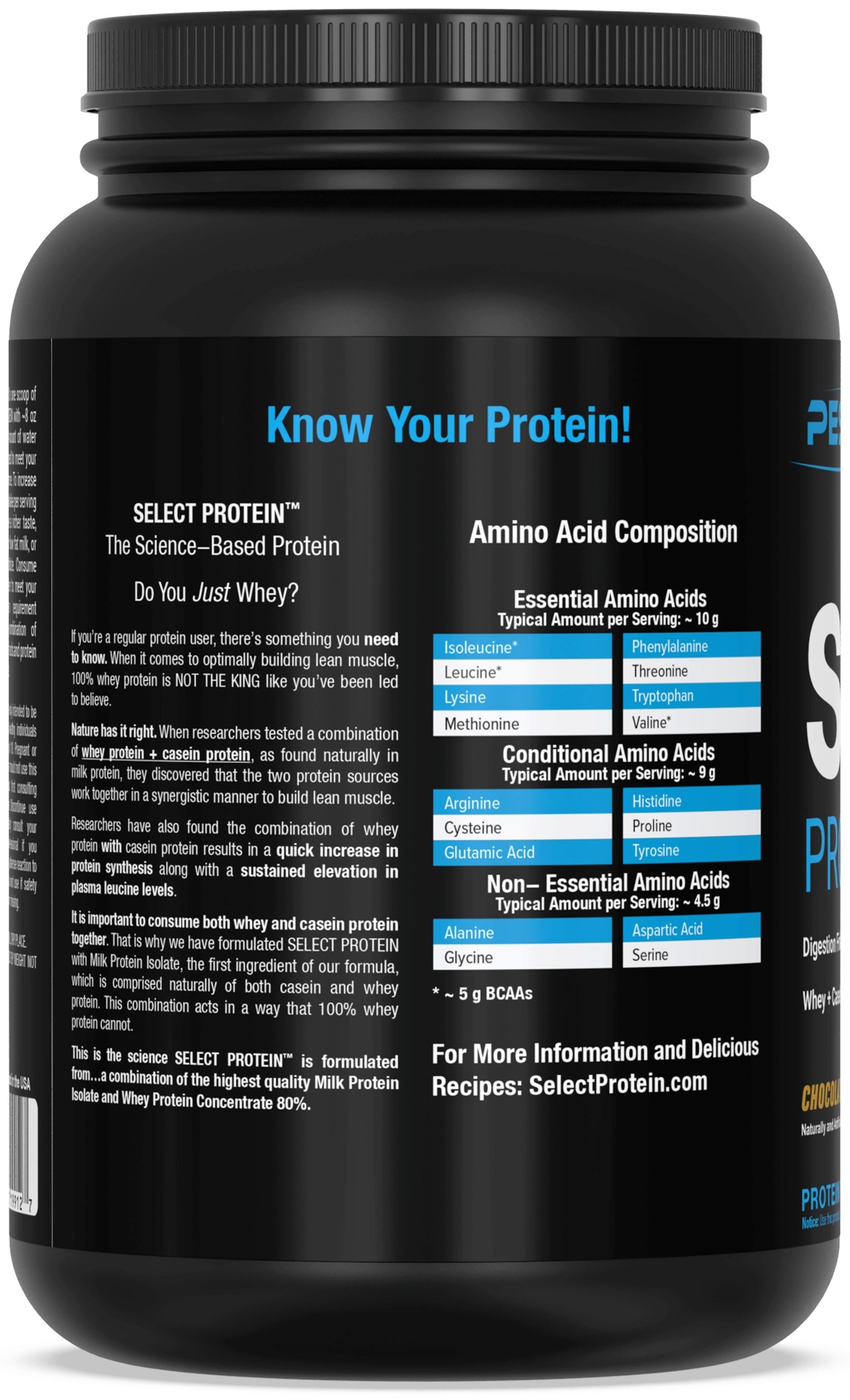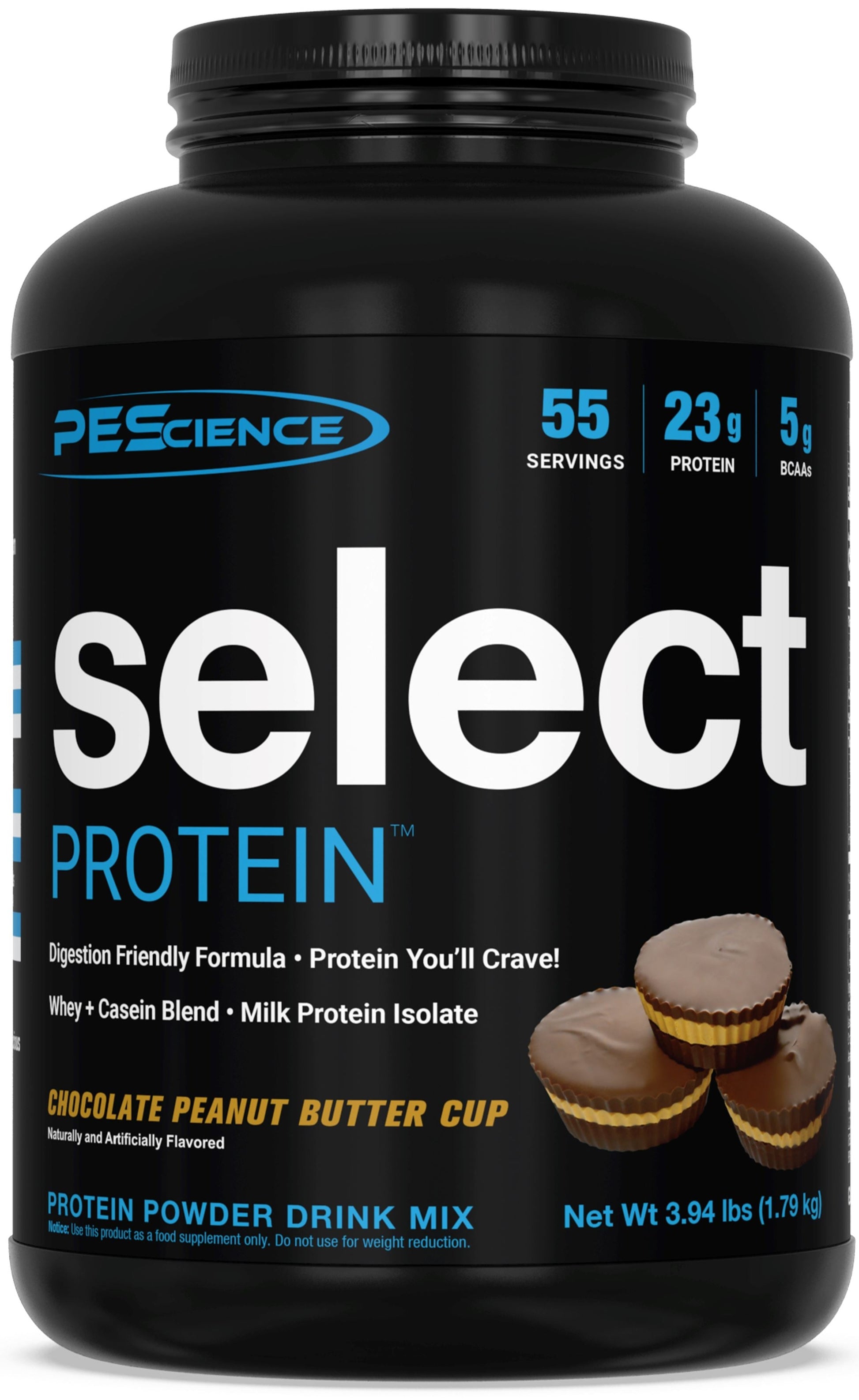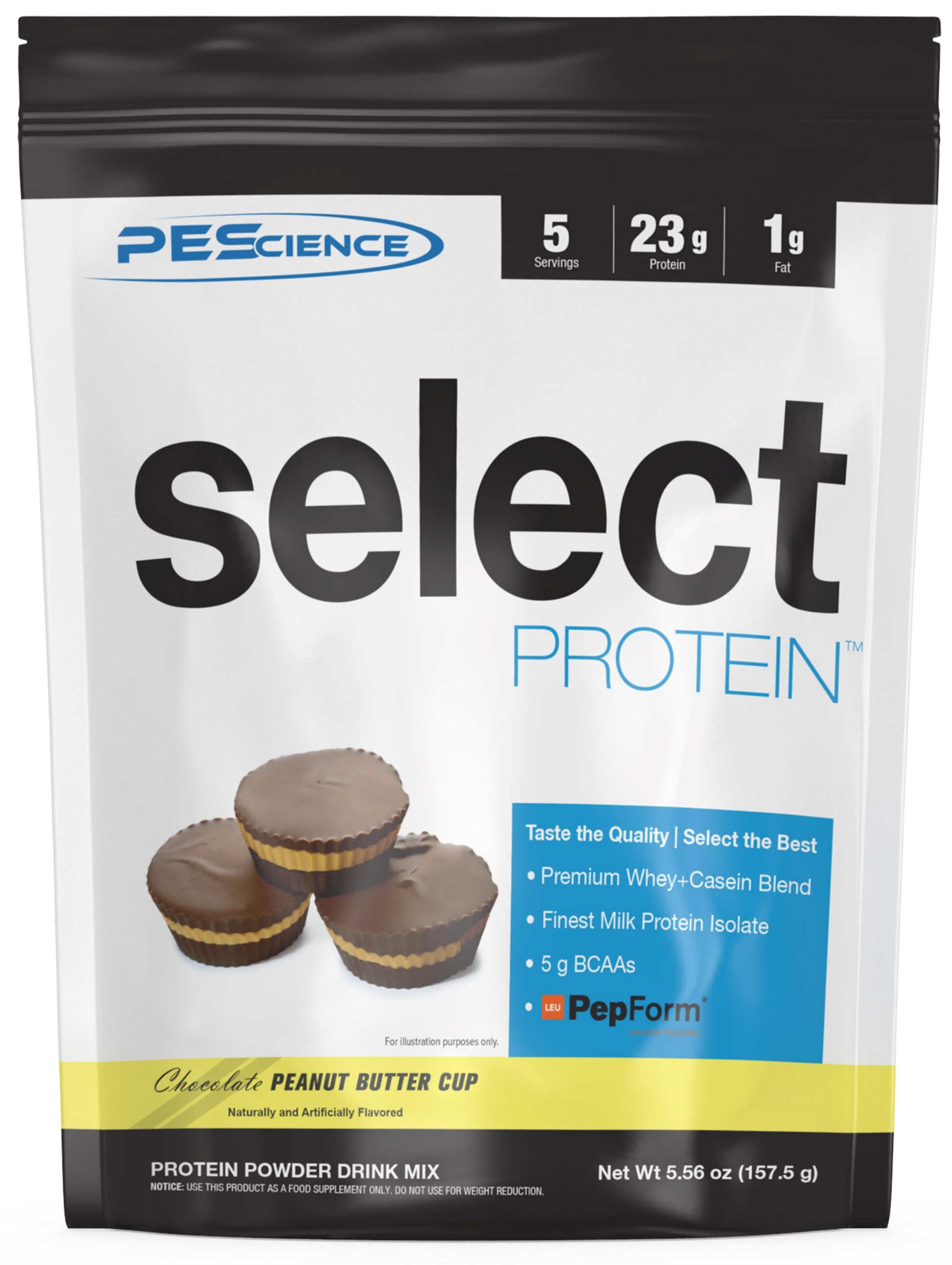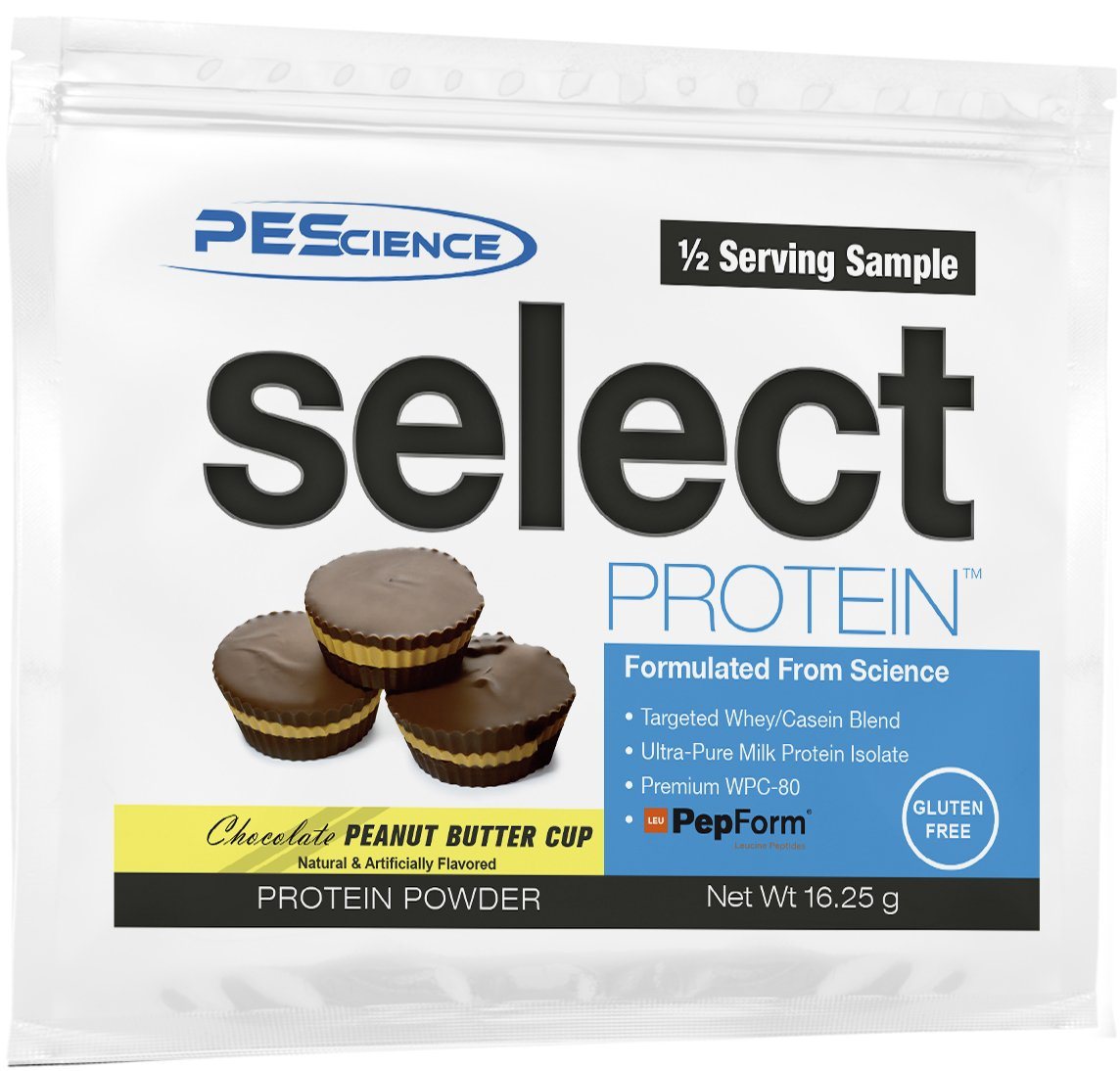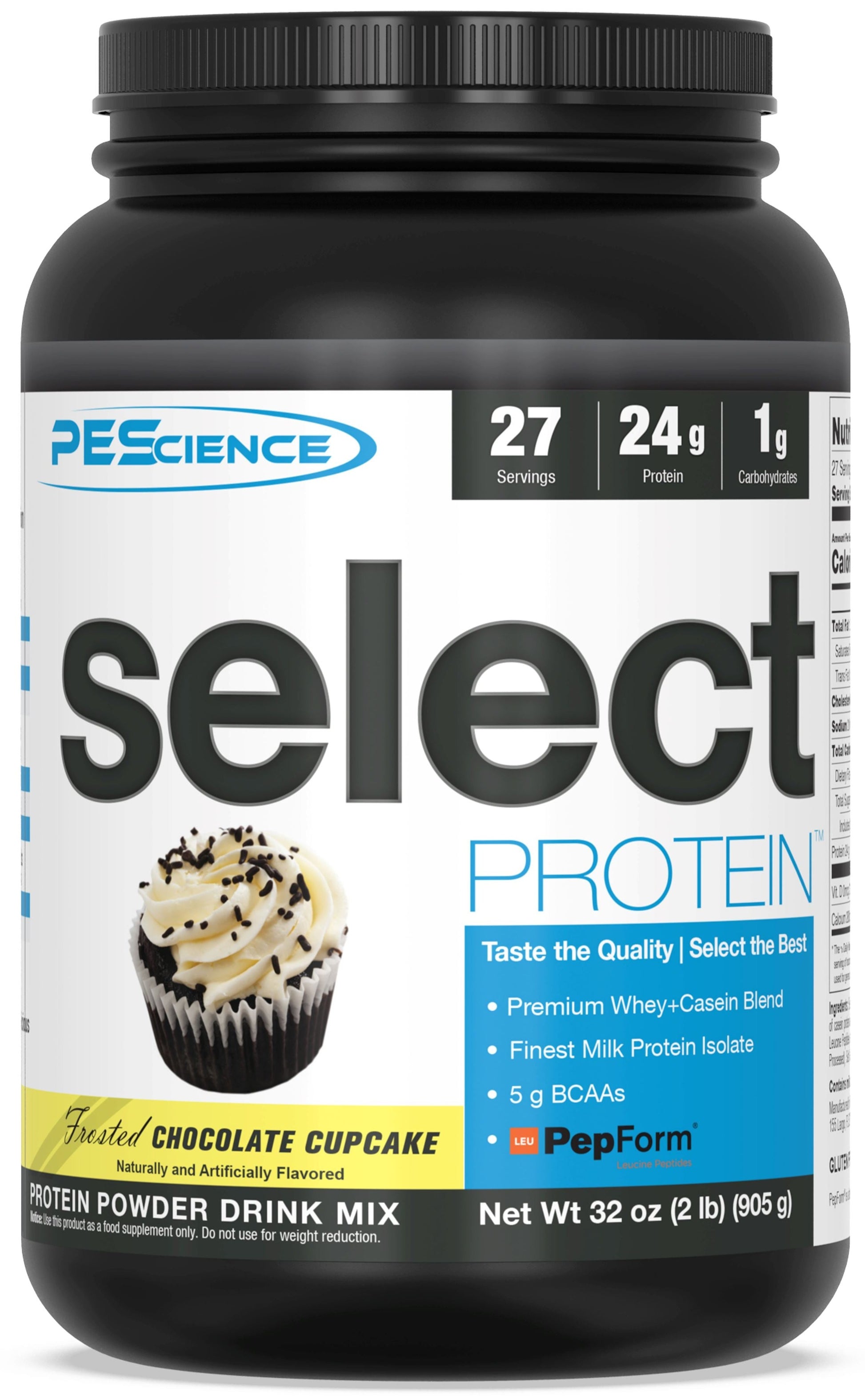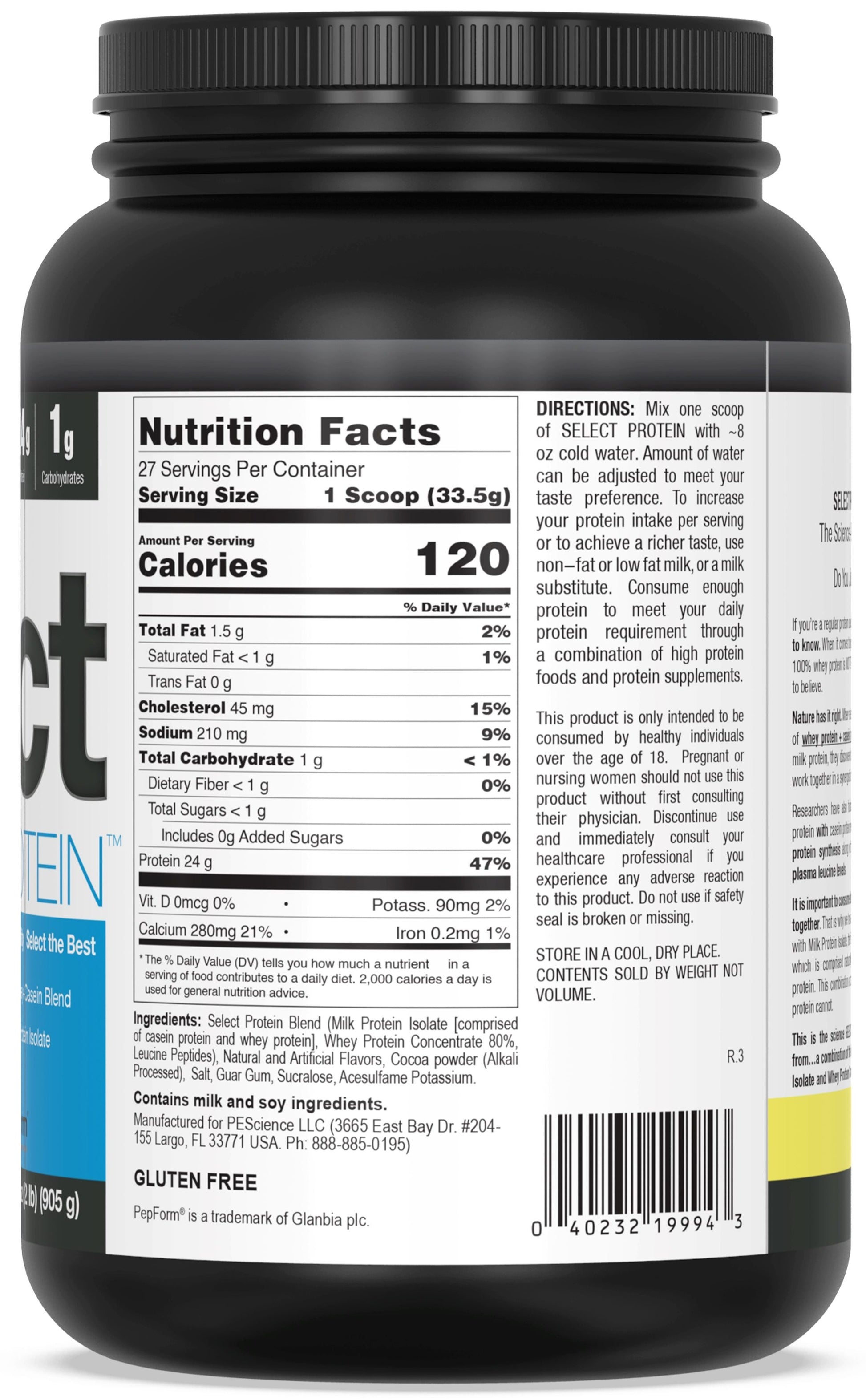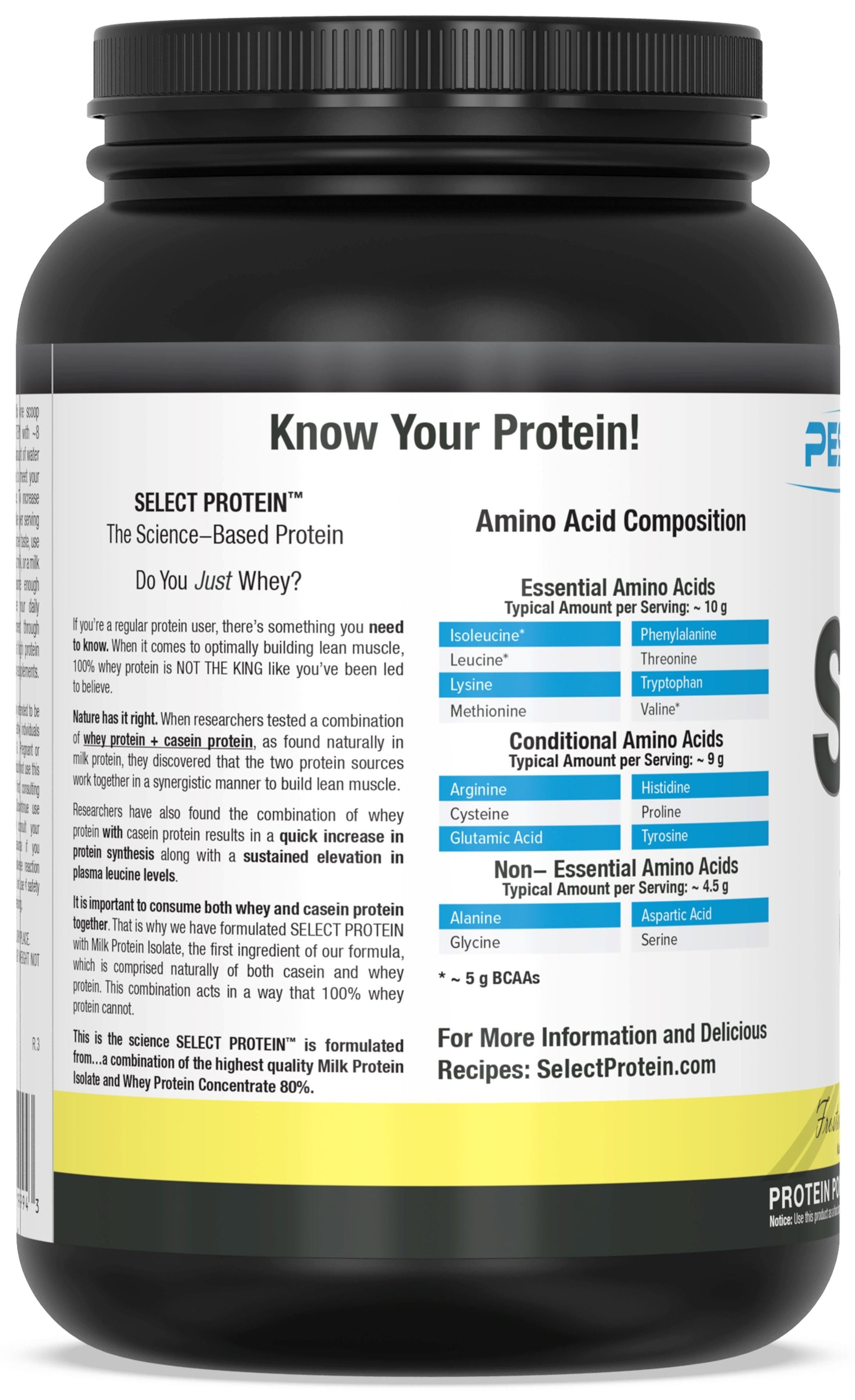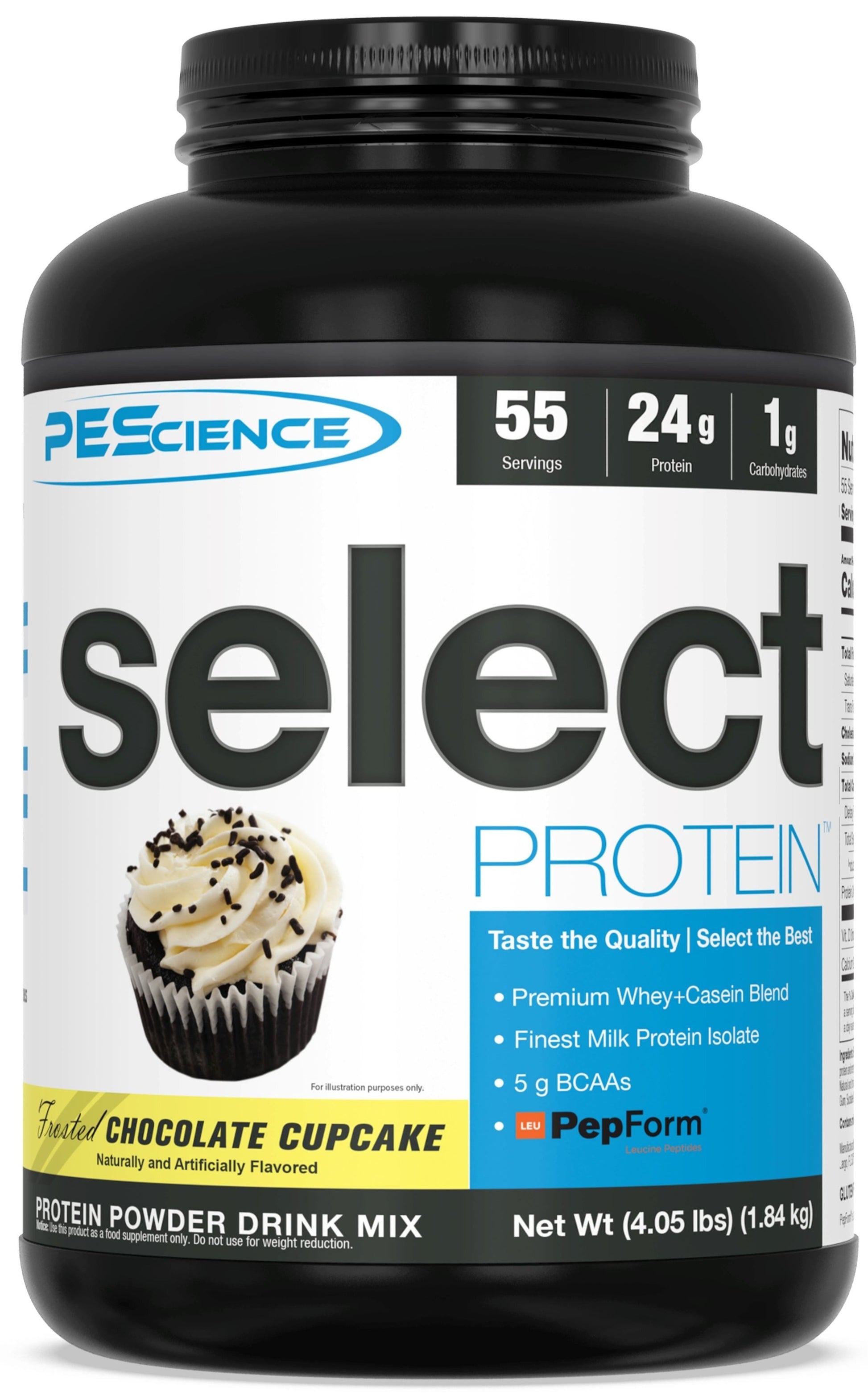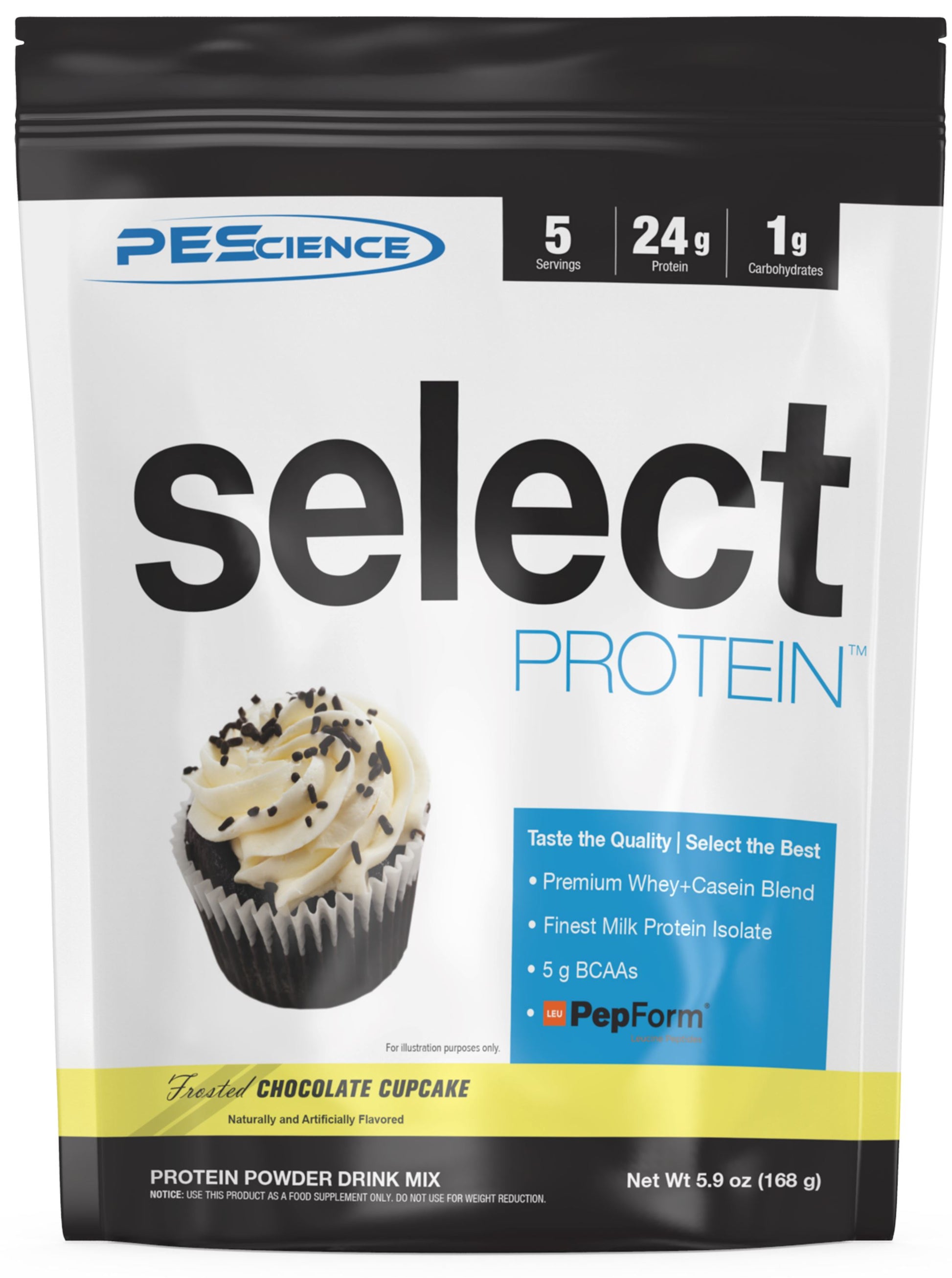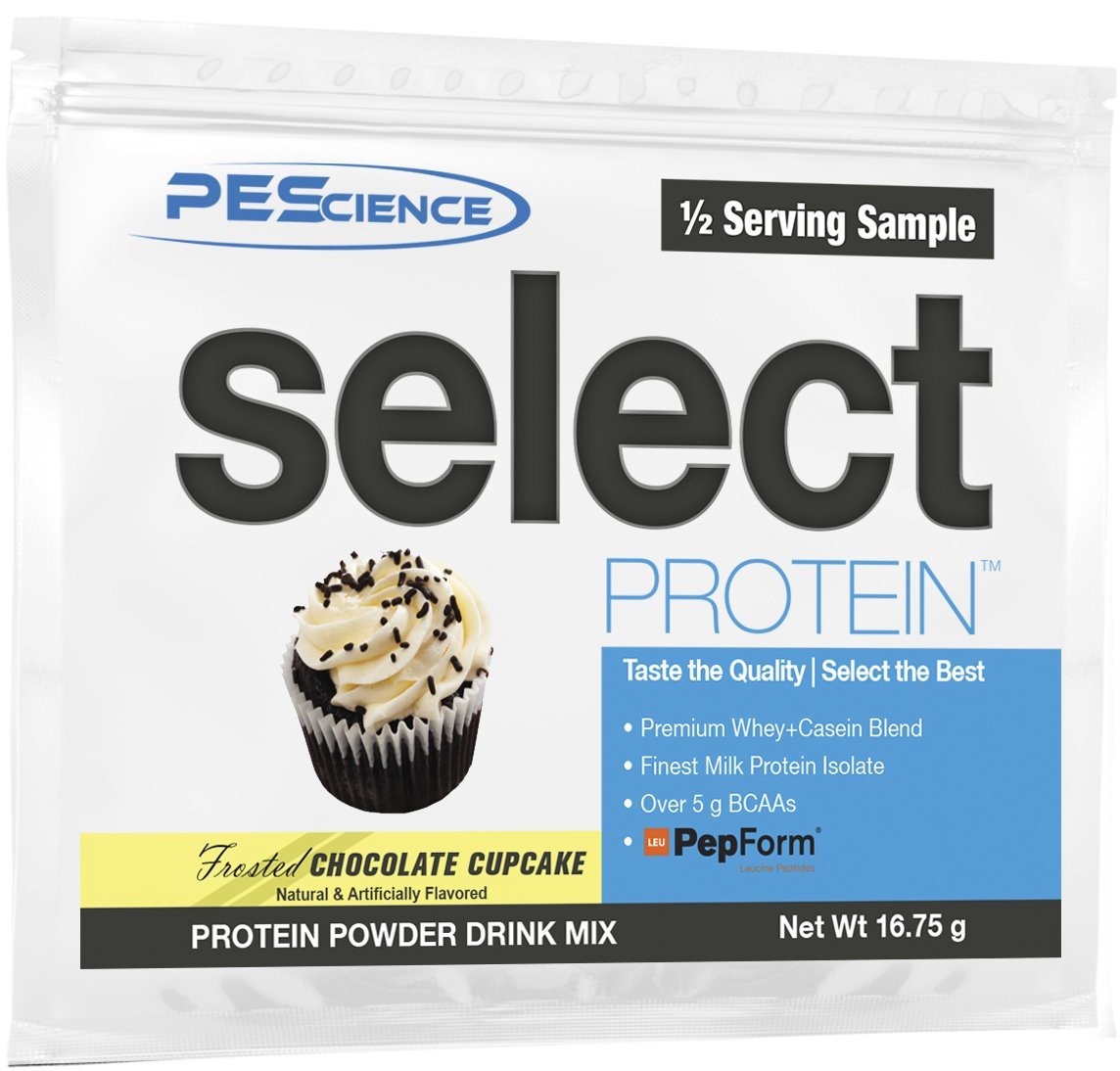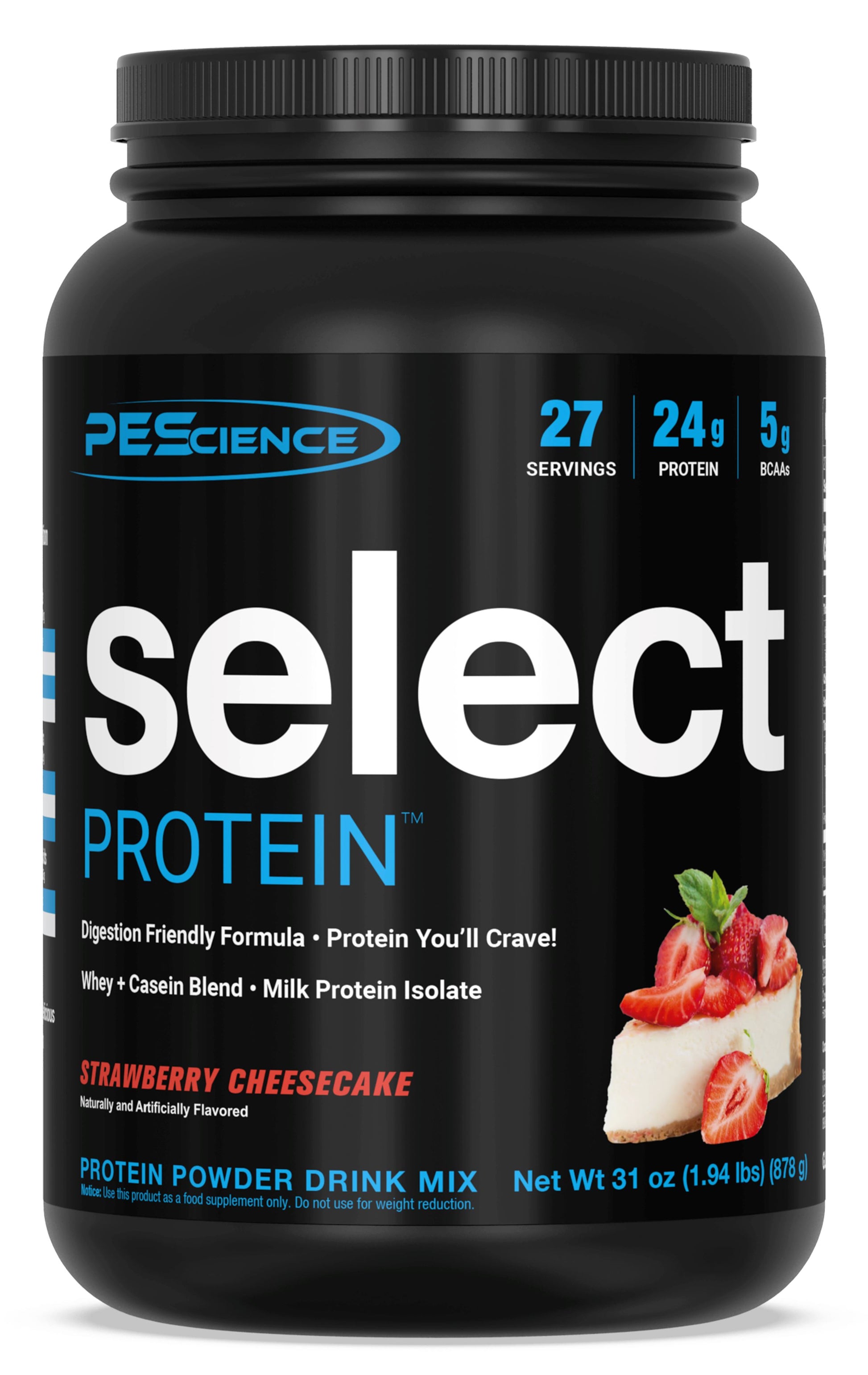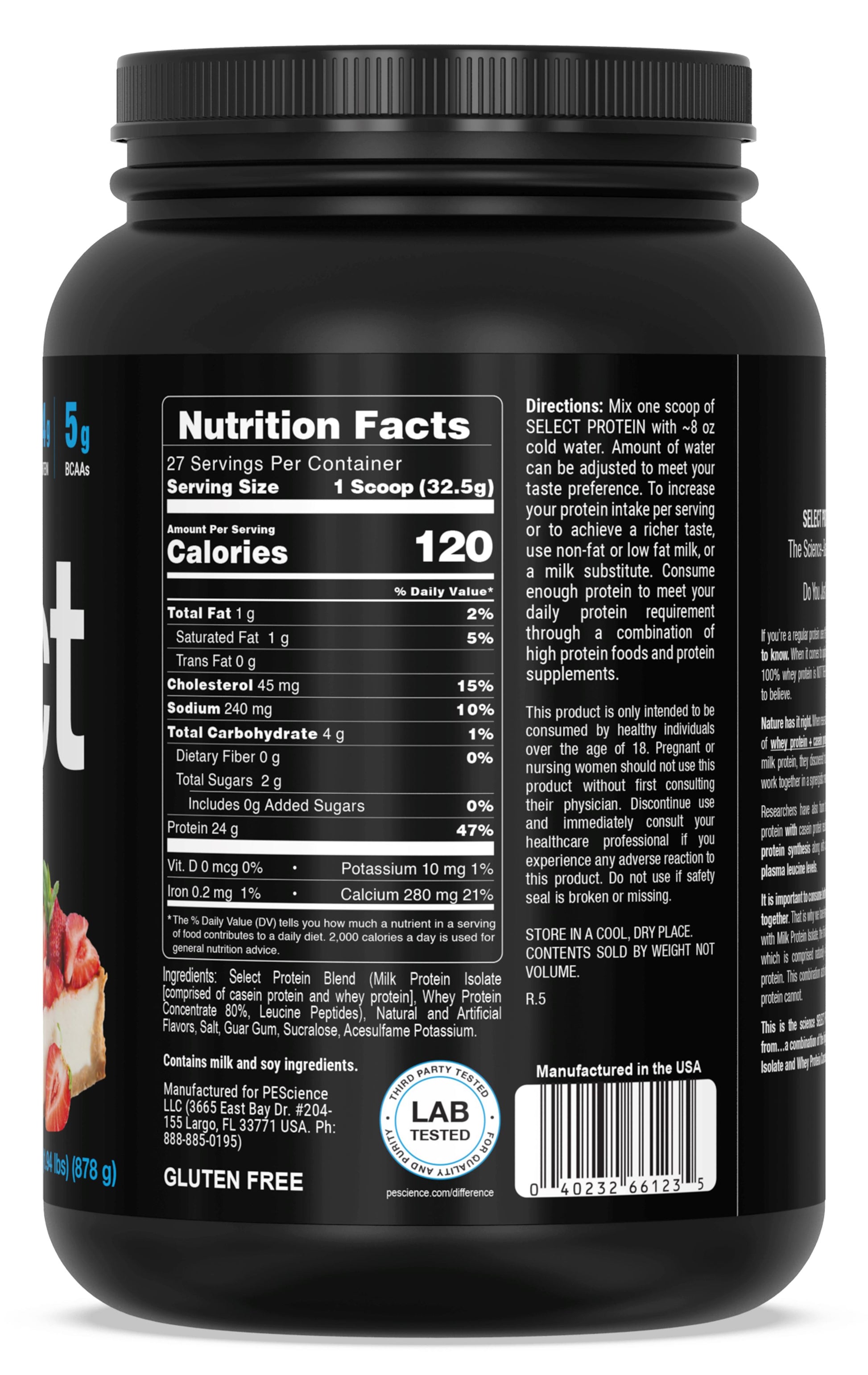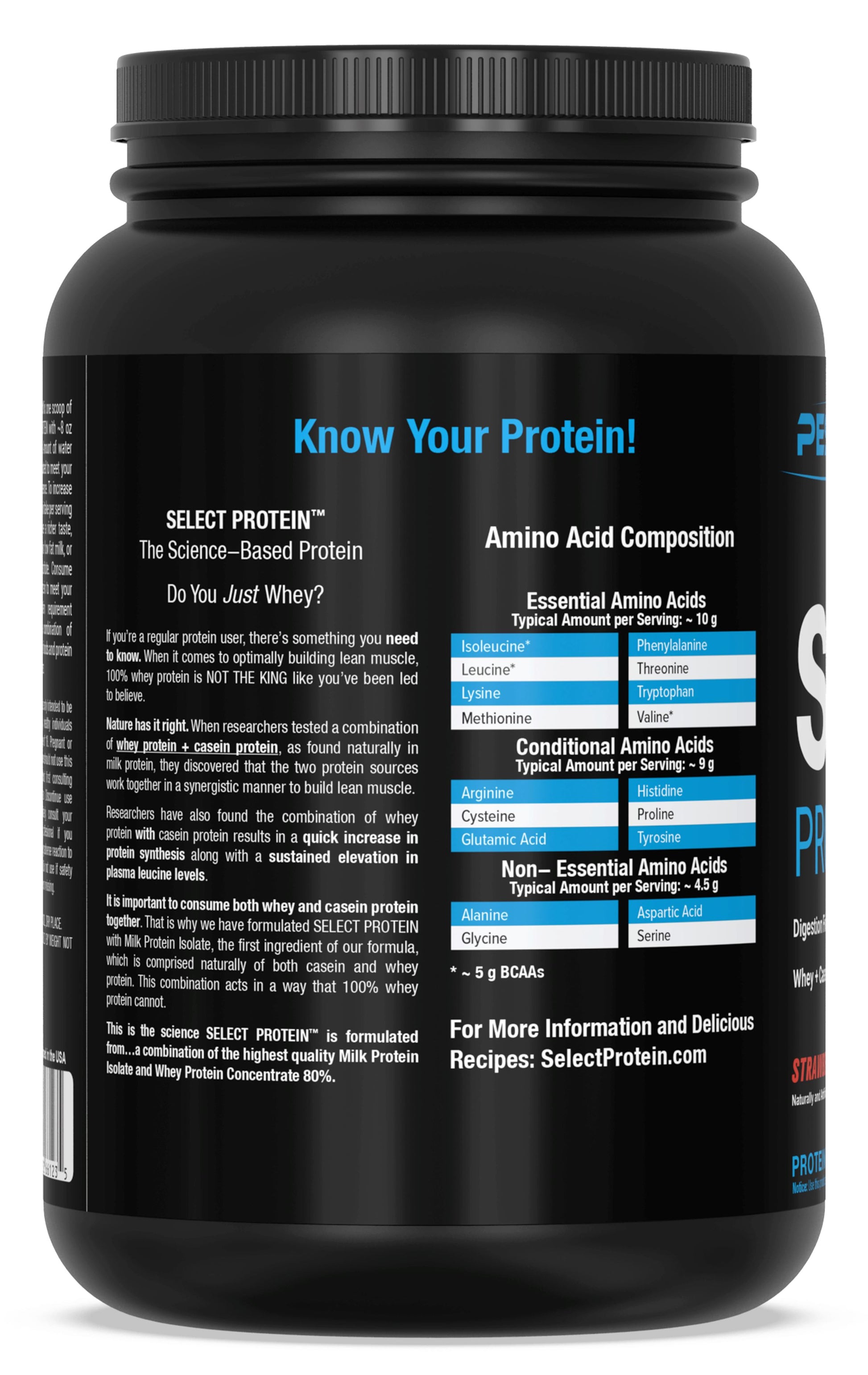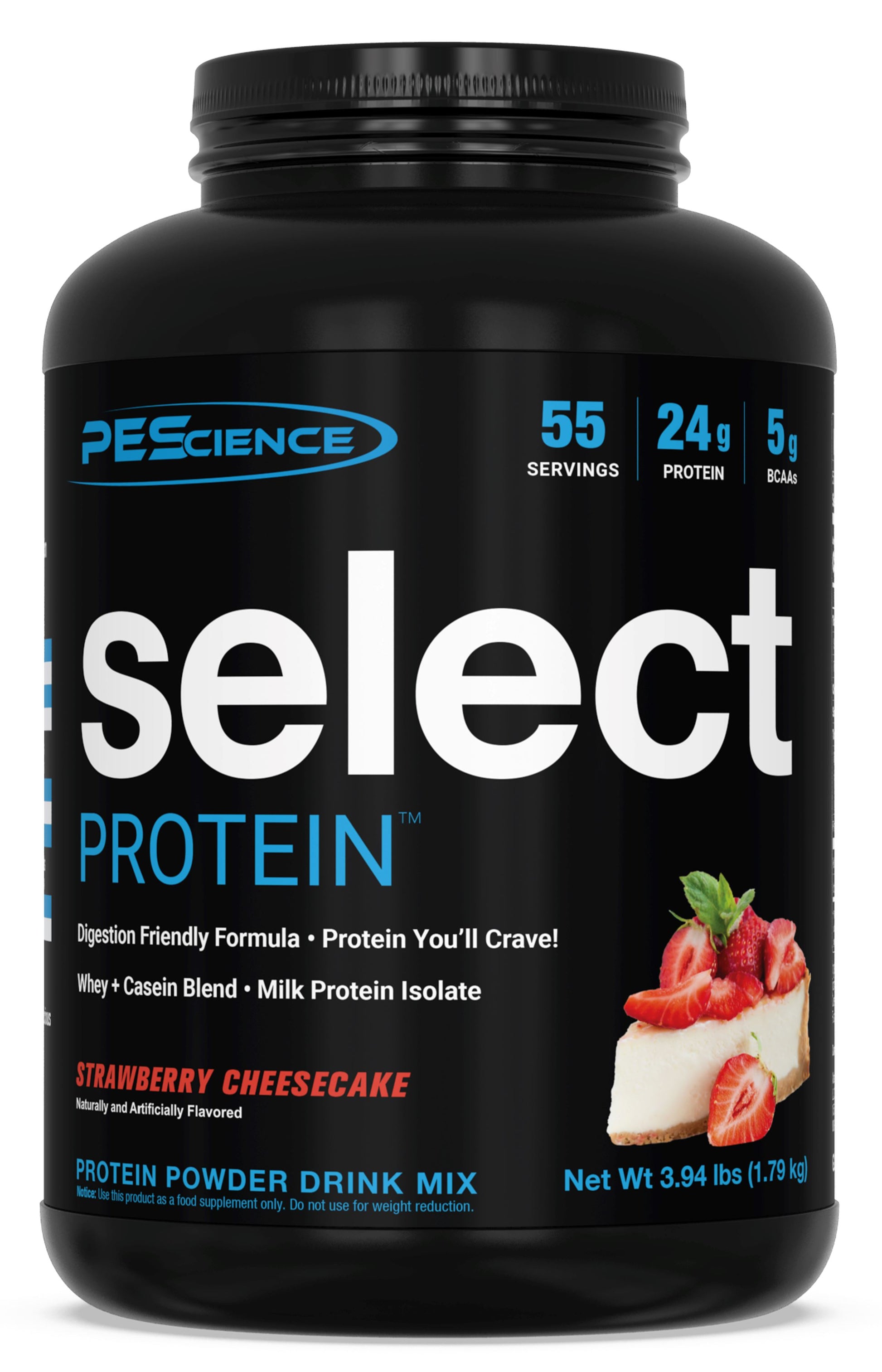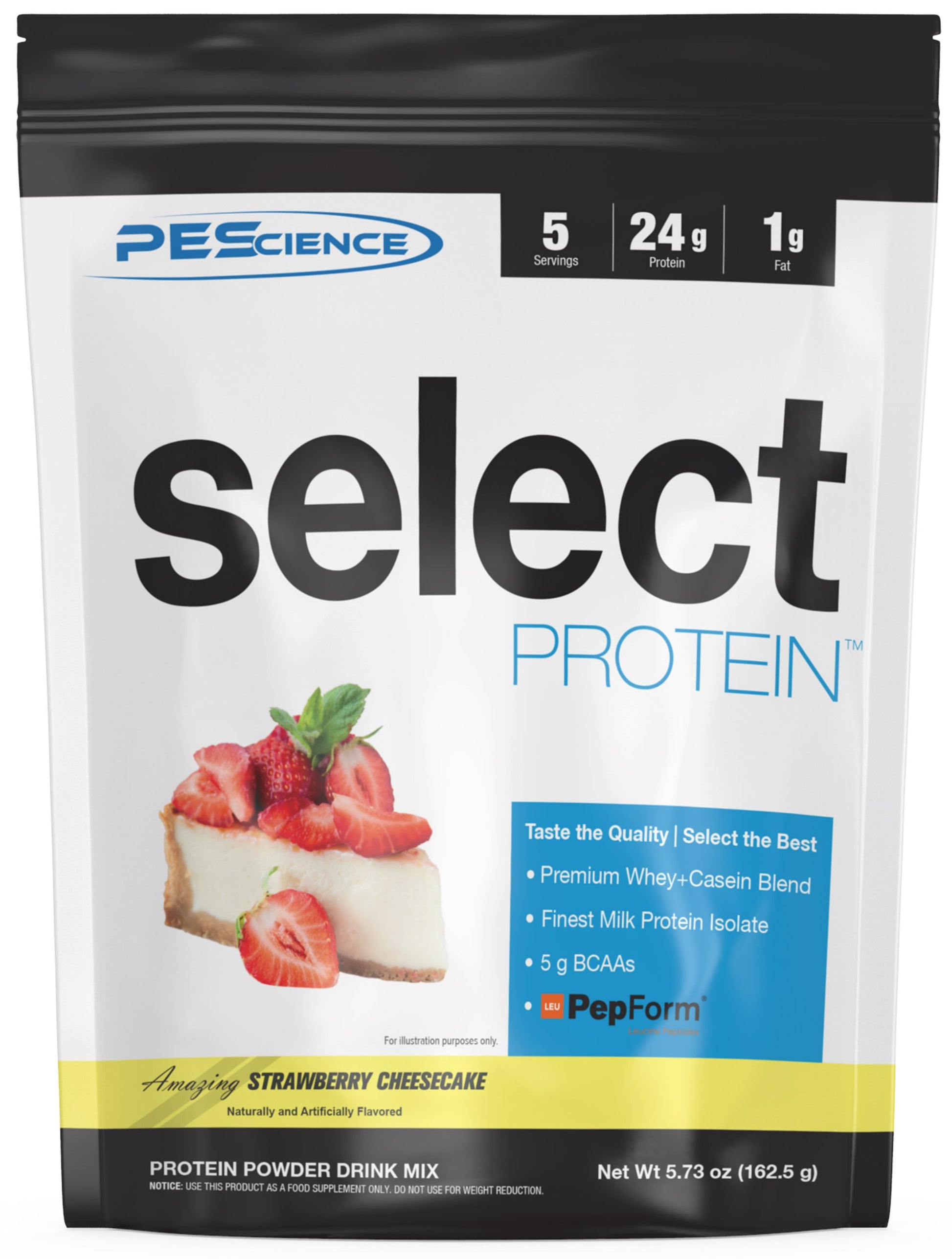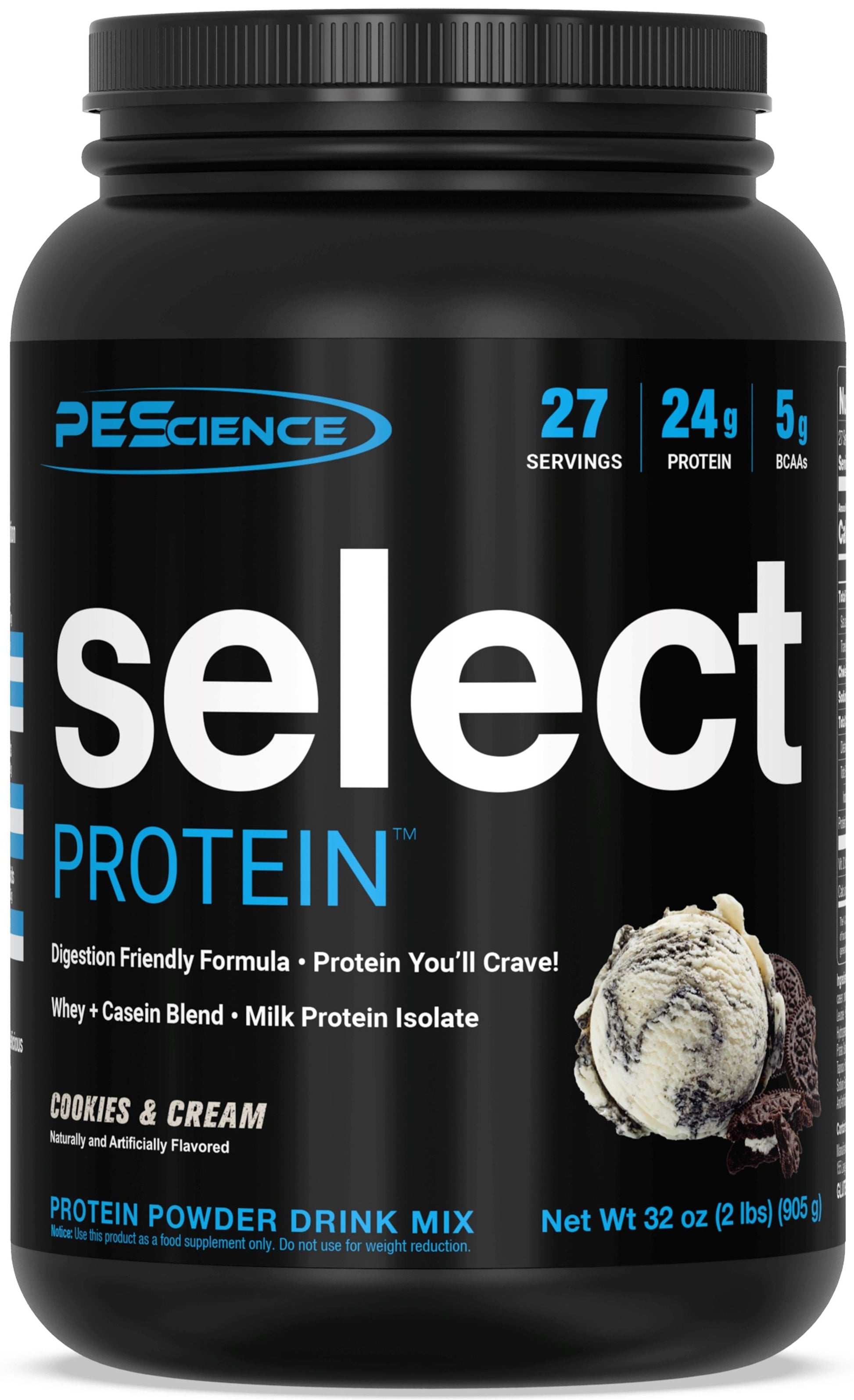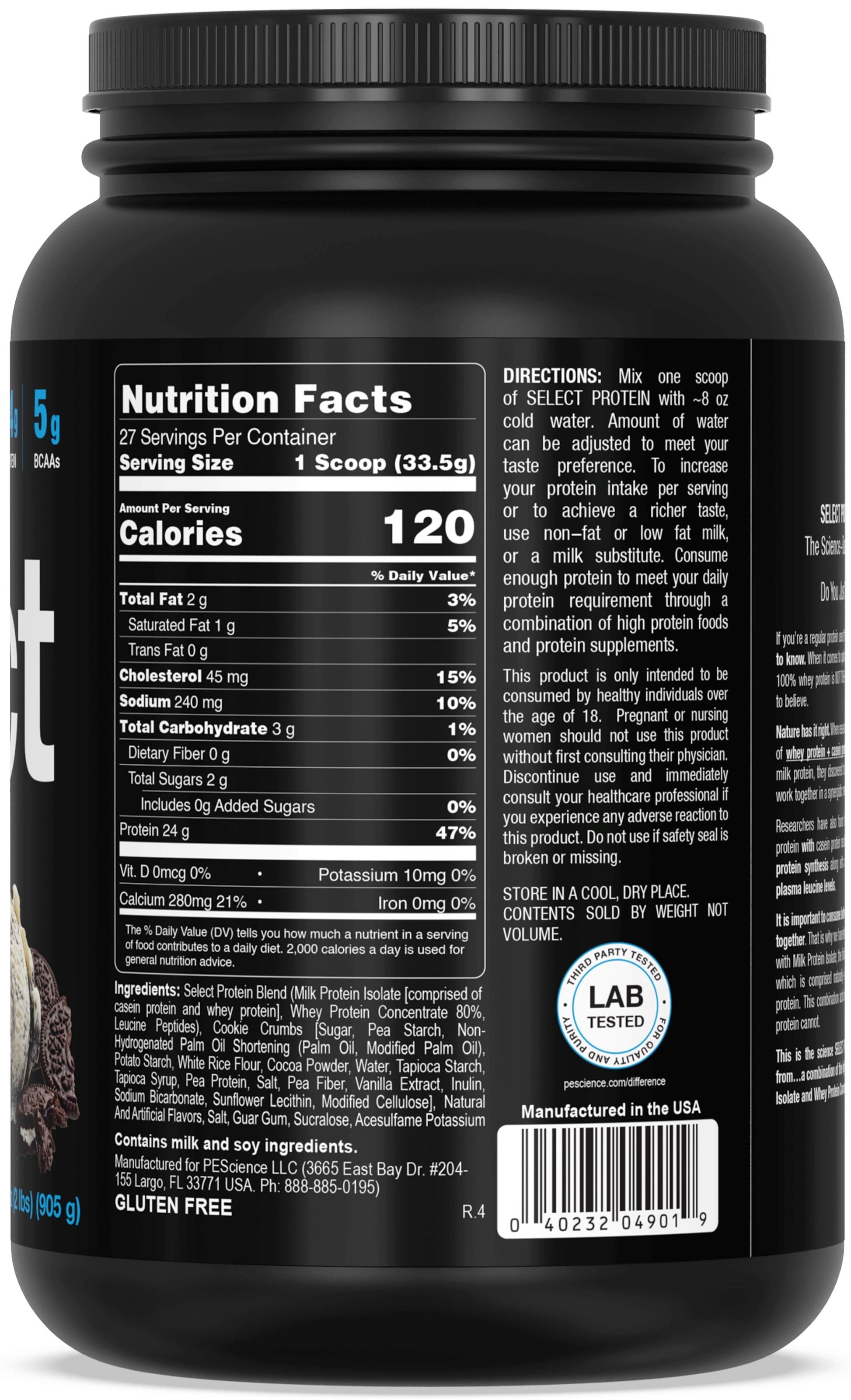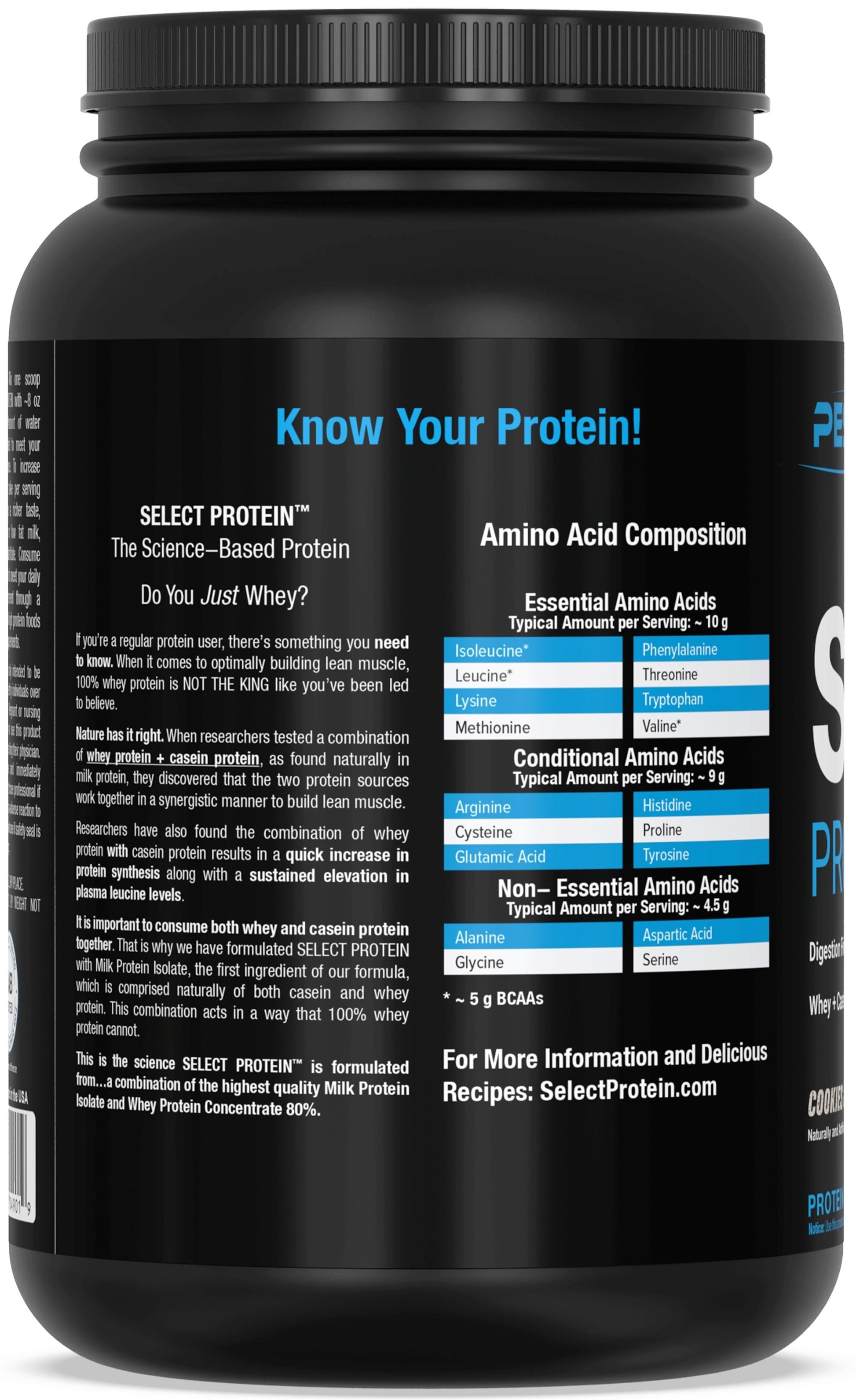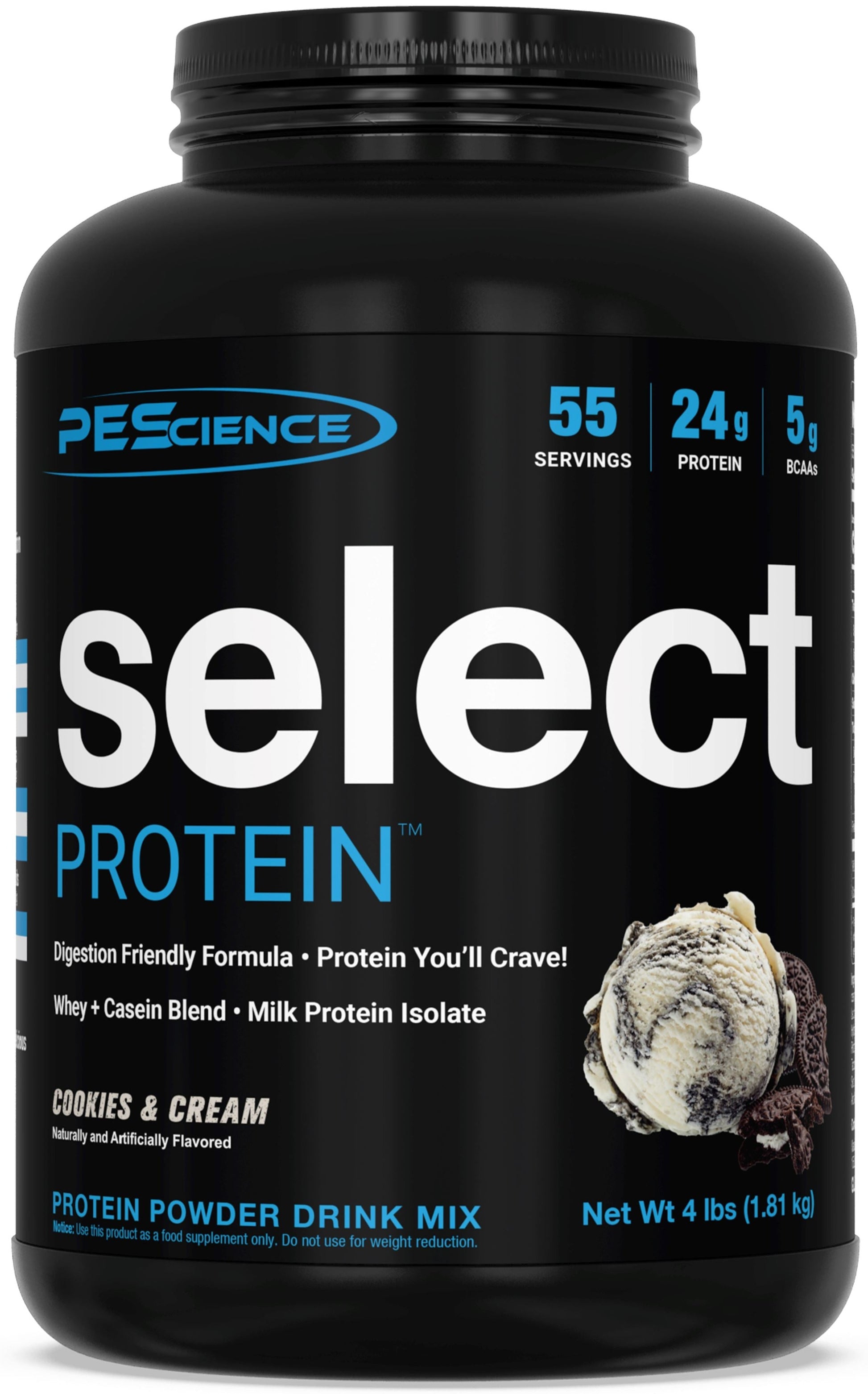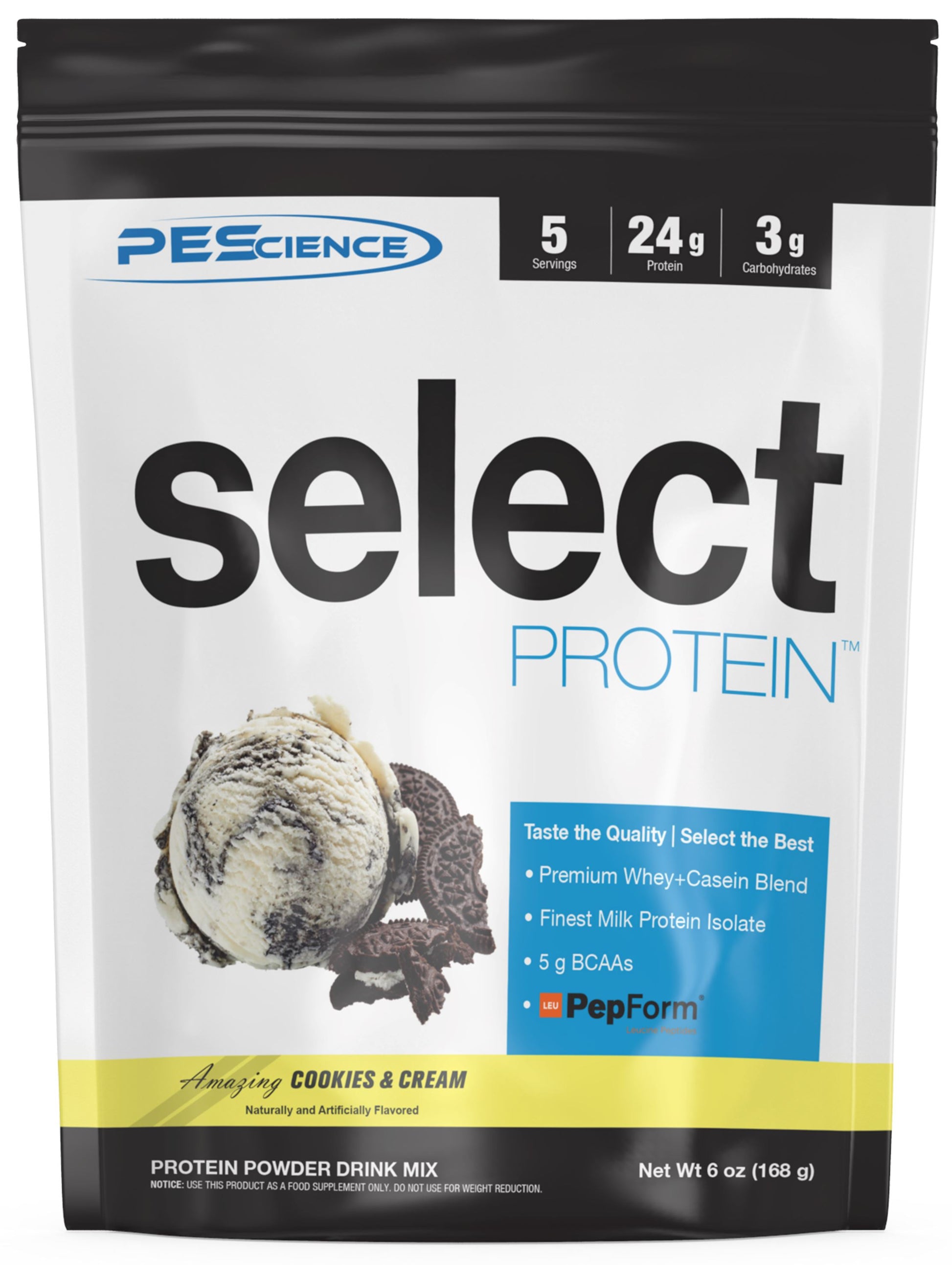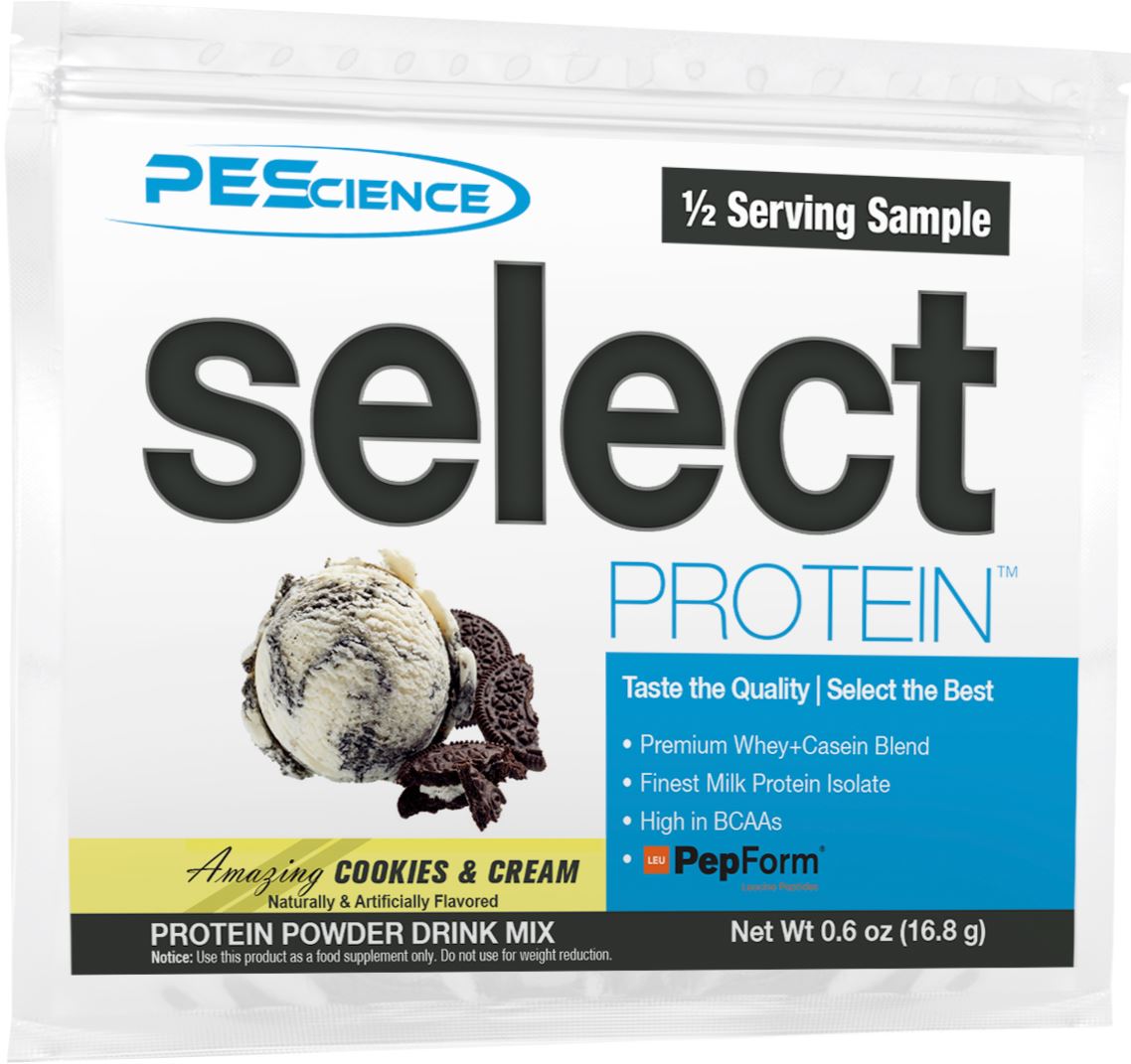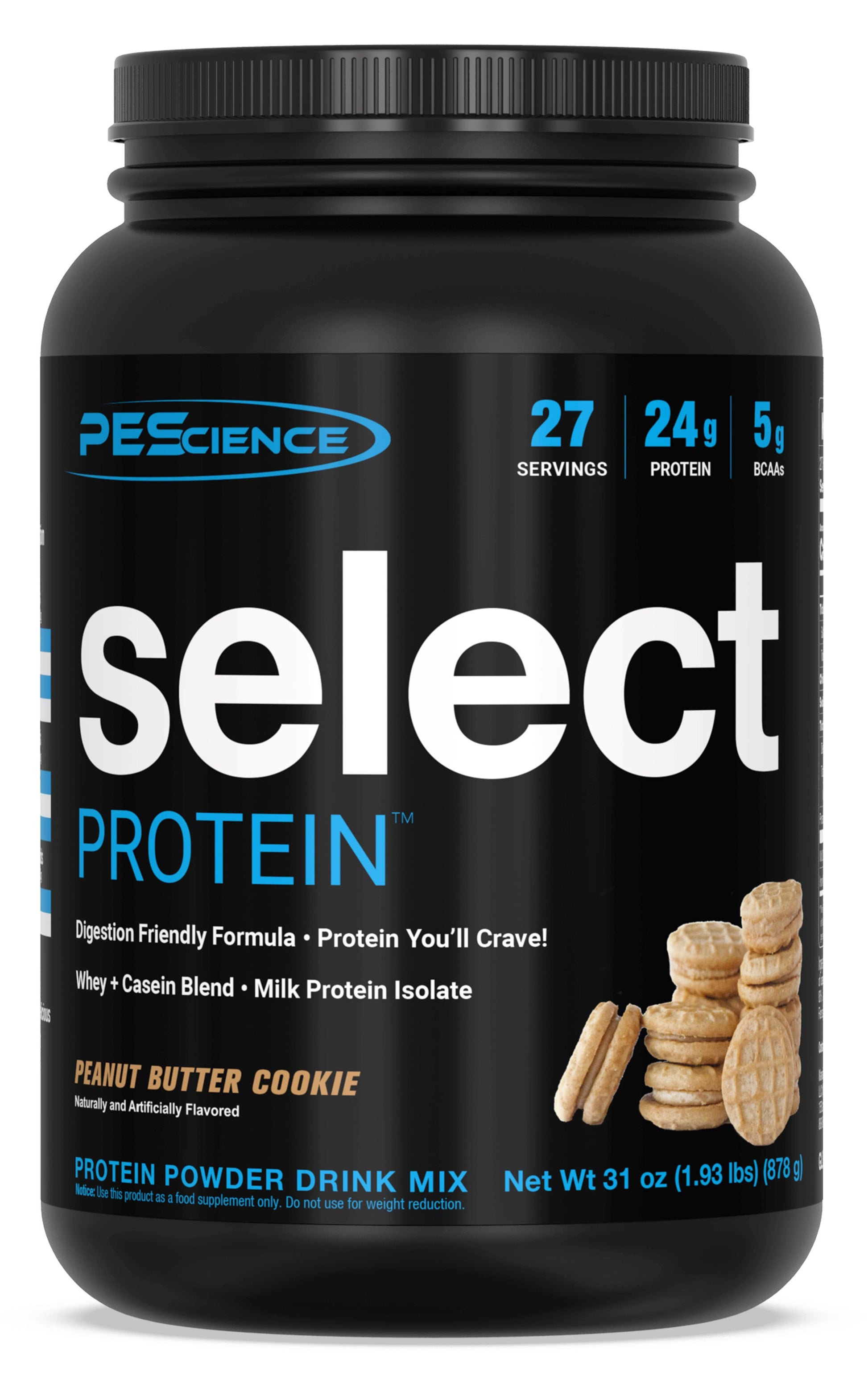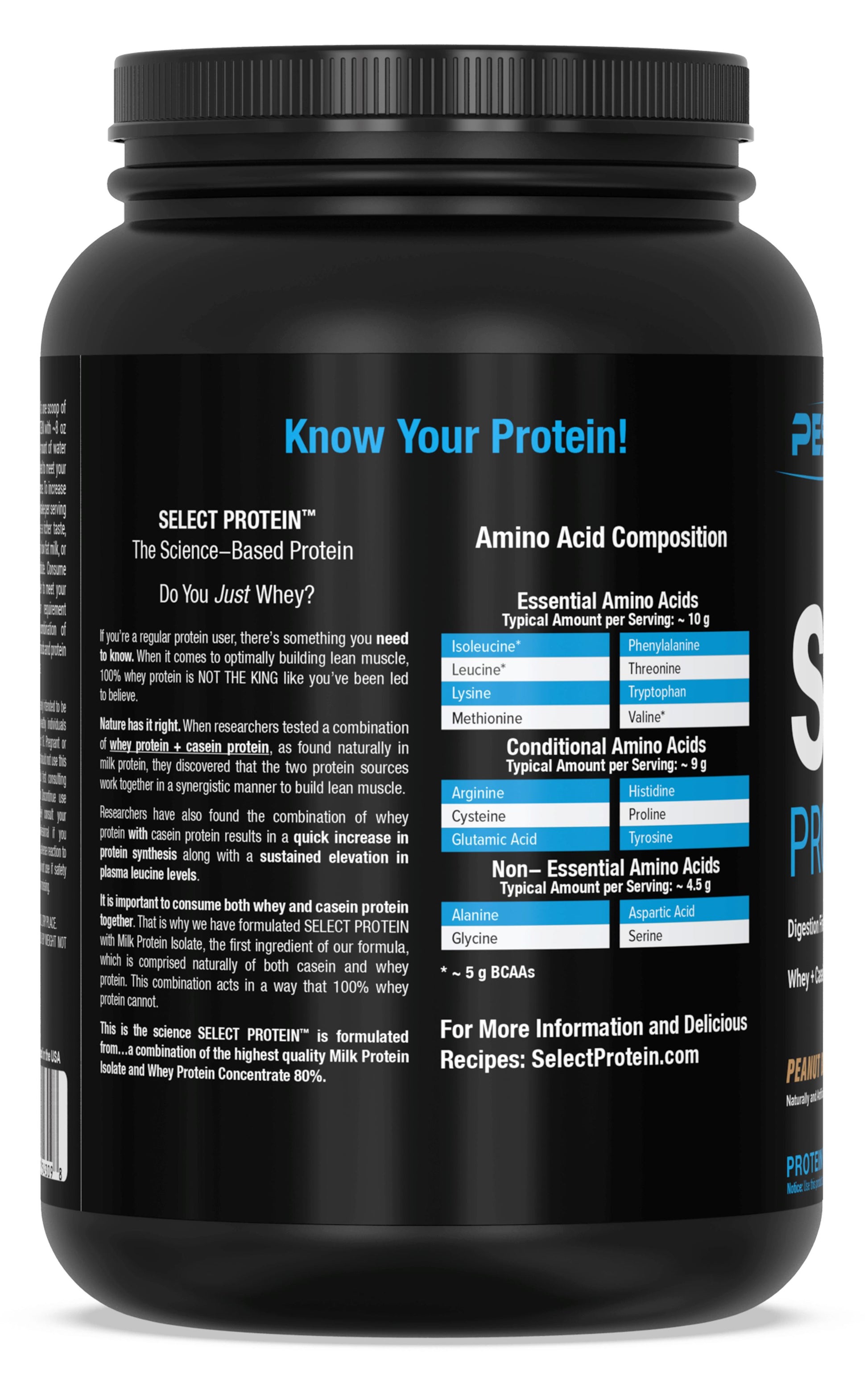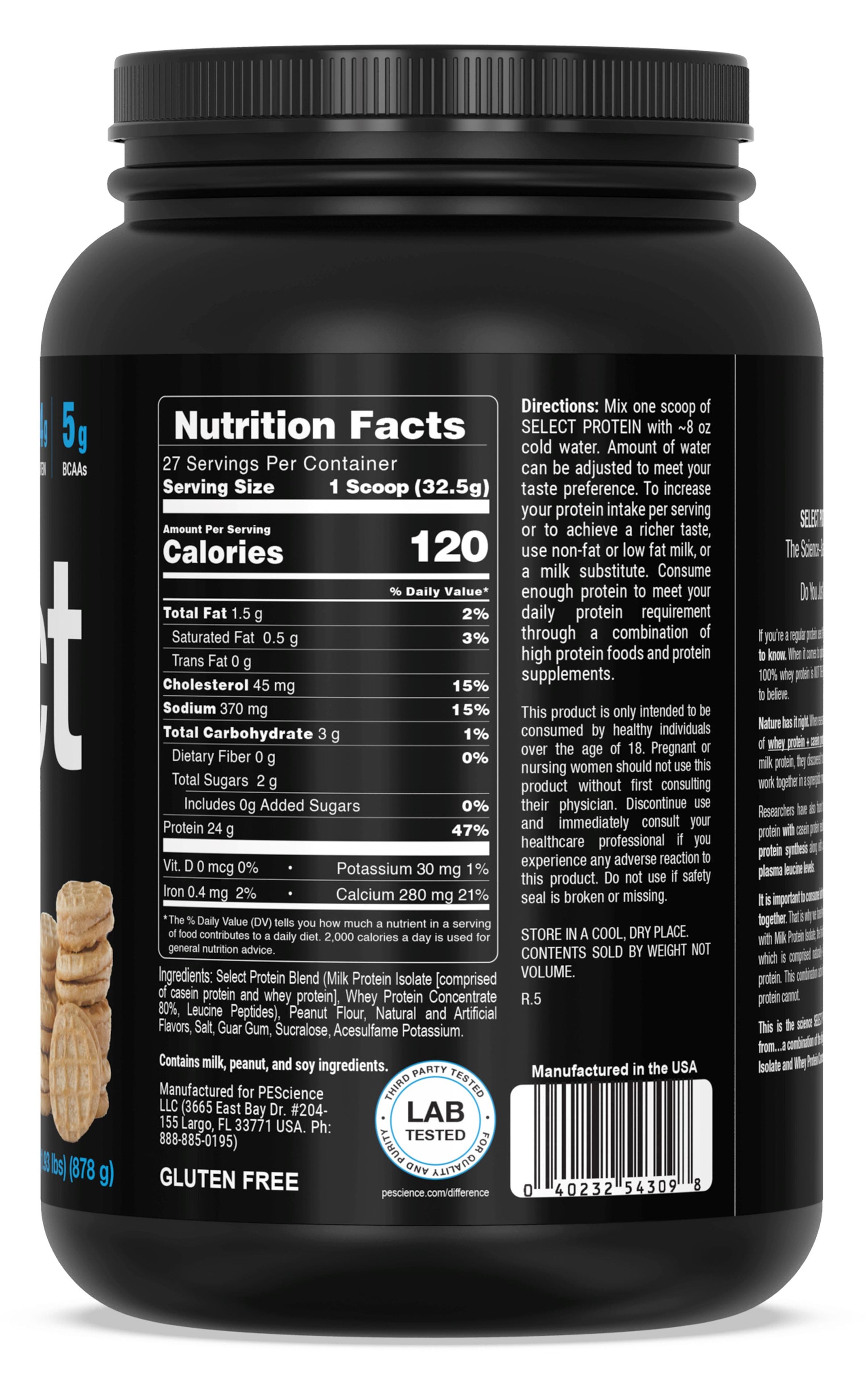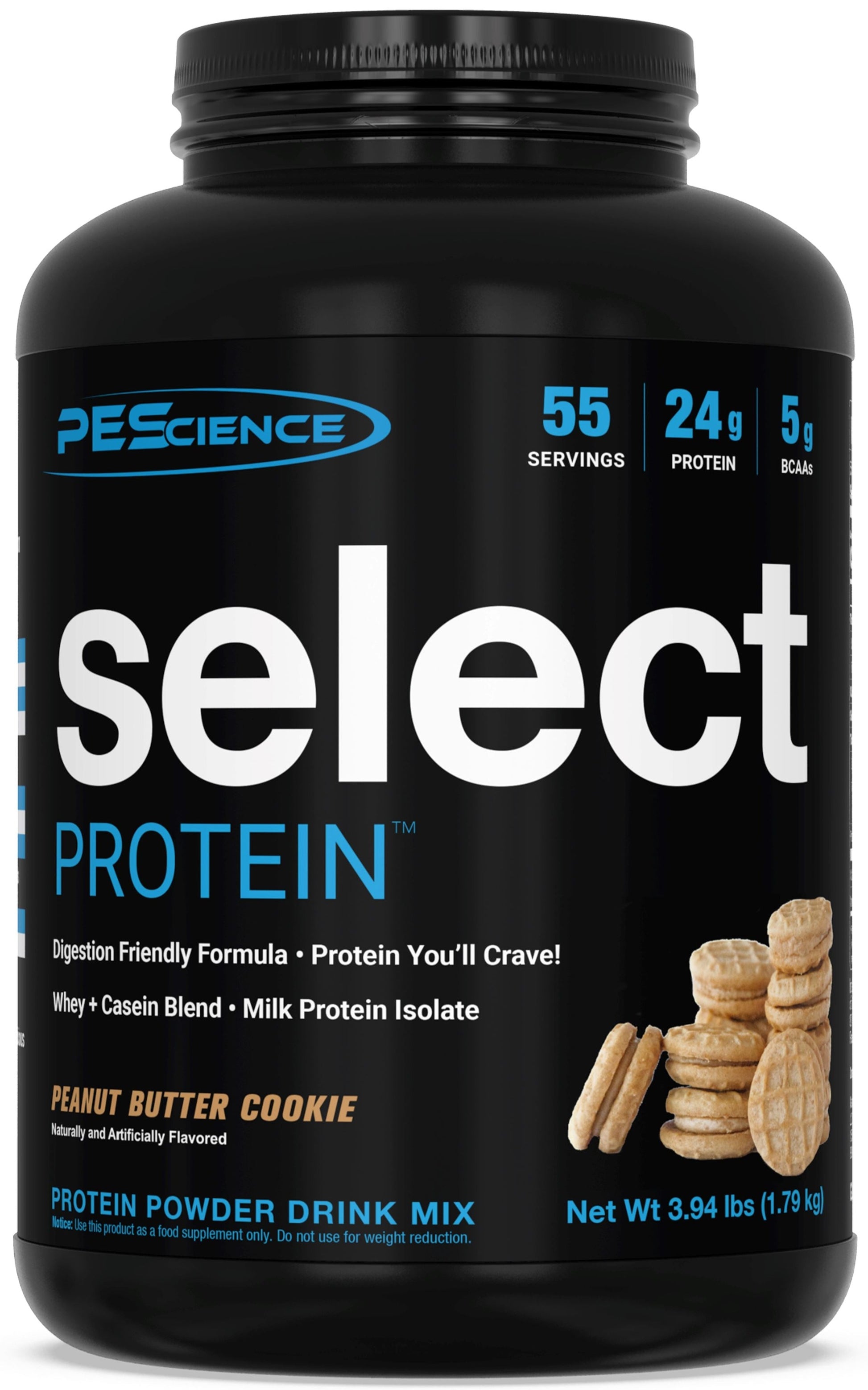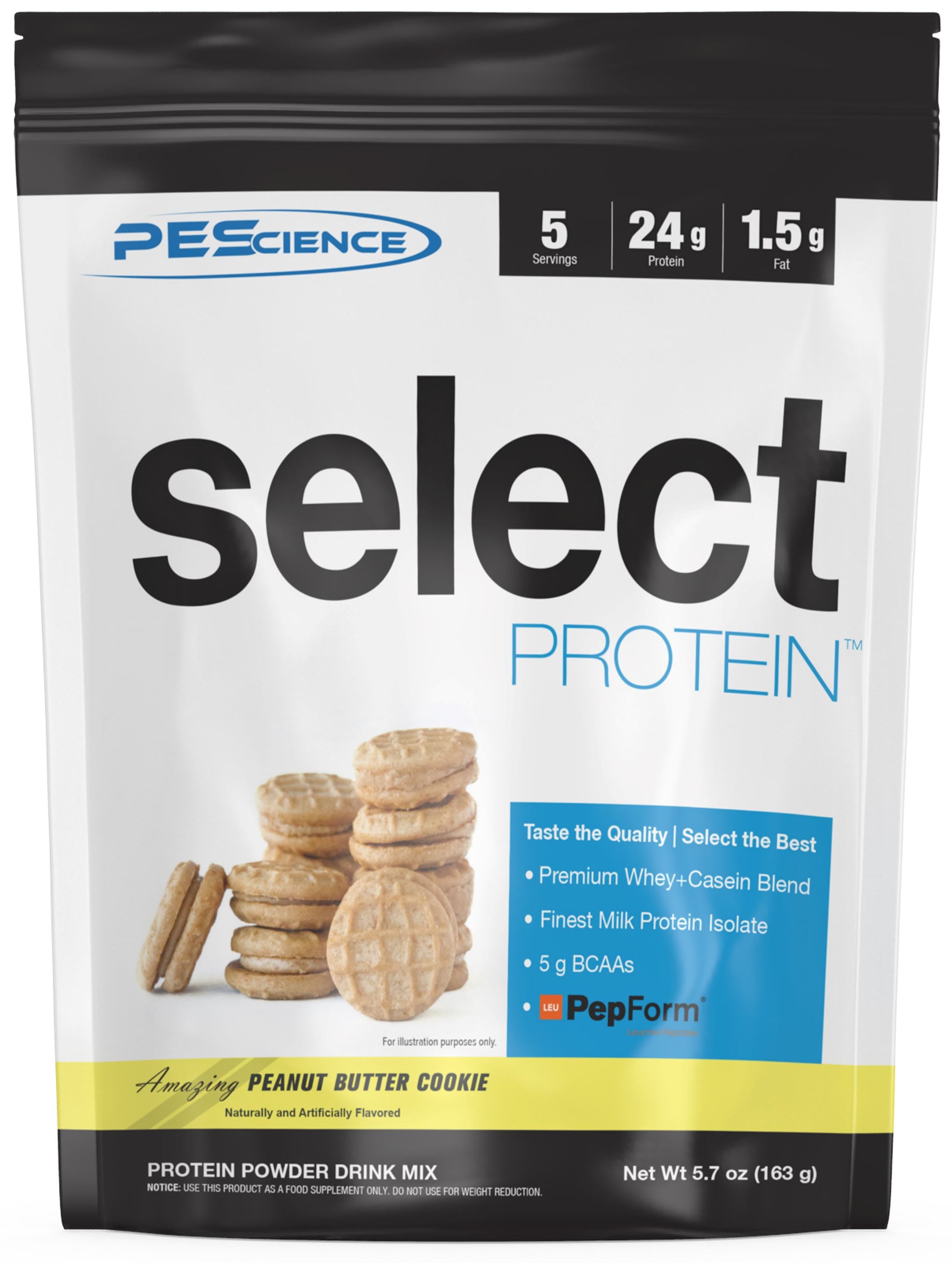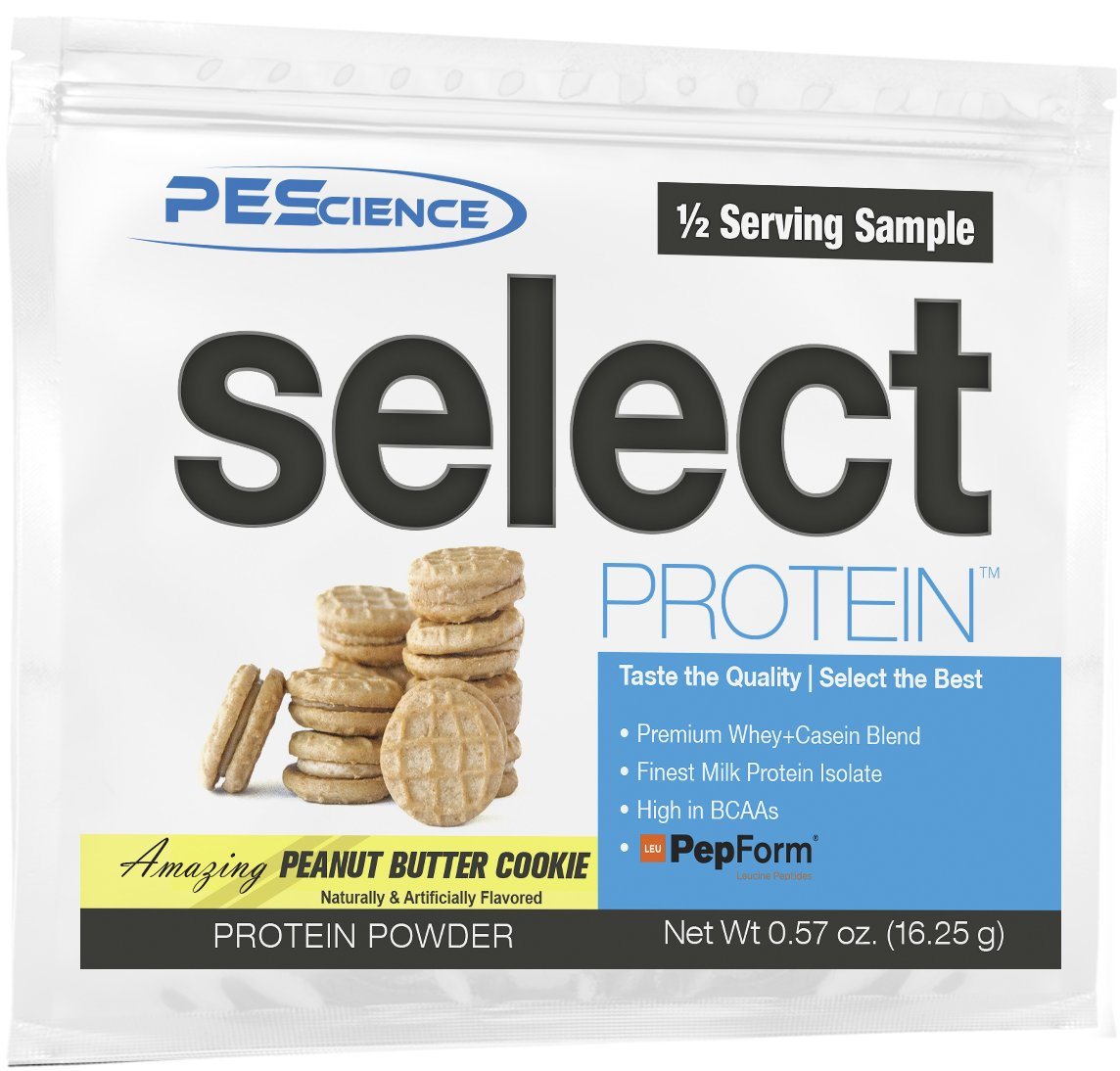Couldn't load pickup availability
Share
Select Protein is a premium blend of whey and casein protein, perfectly flavored to taste true to each flavor's name, leaving you craving more every day. Select is third-party tested for quality and purity. This low-carb, gluten-free formula uses milk protein isolate as its #1 ingredient, rarely used in protein powders due to its high cost. Milk protein isolate is very low in lactose giving Select Protein great digestion. Read below to learn something new about protein powders and how Select Protein stands apart.
- Gluten Free
- Third-Party Tested
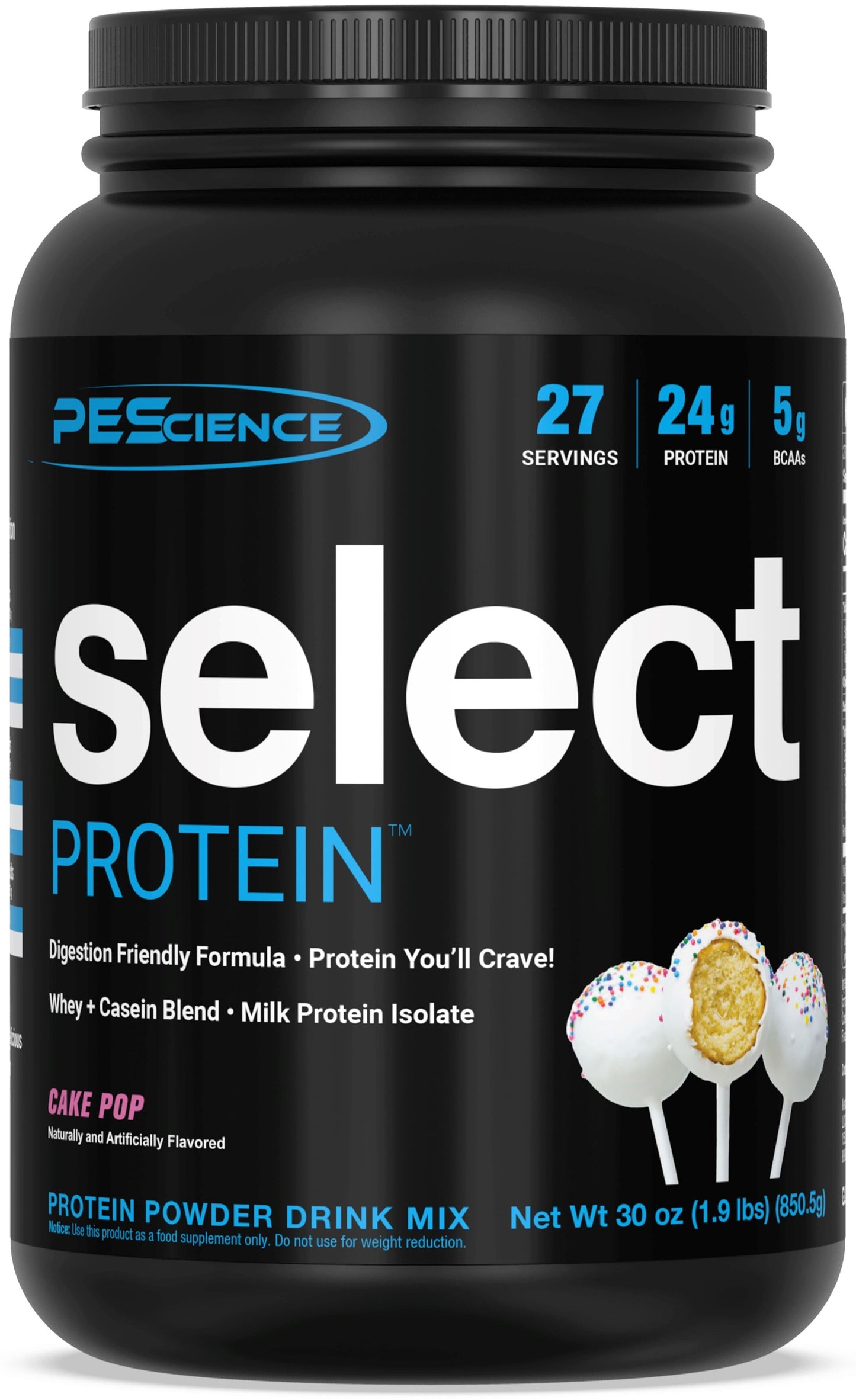
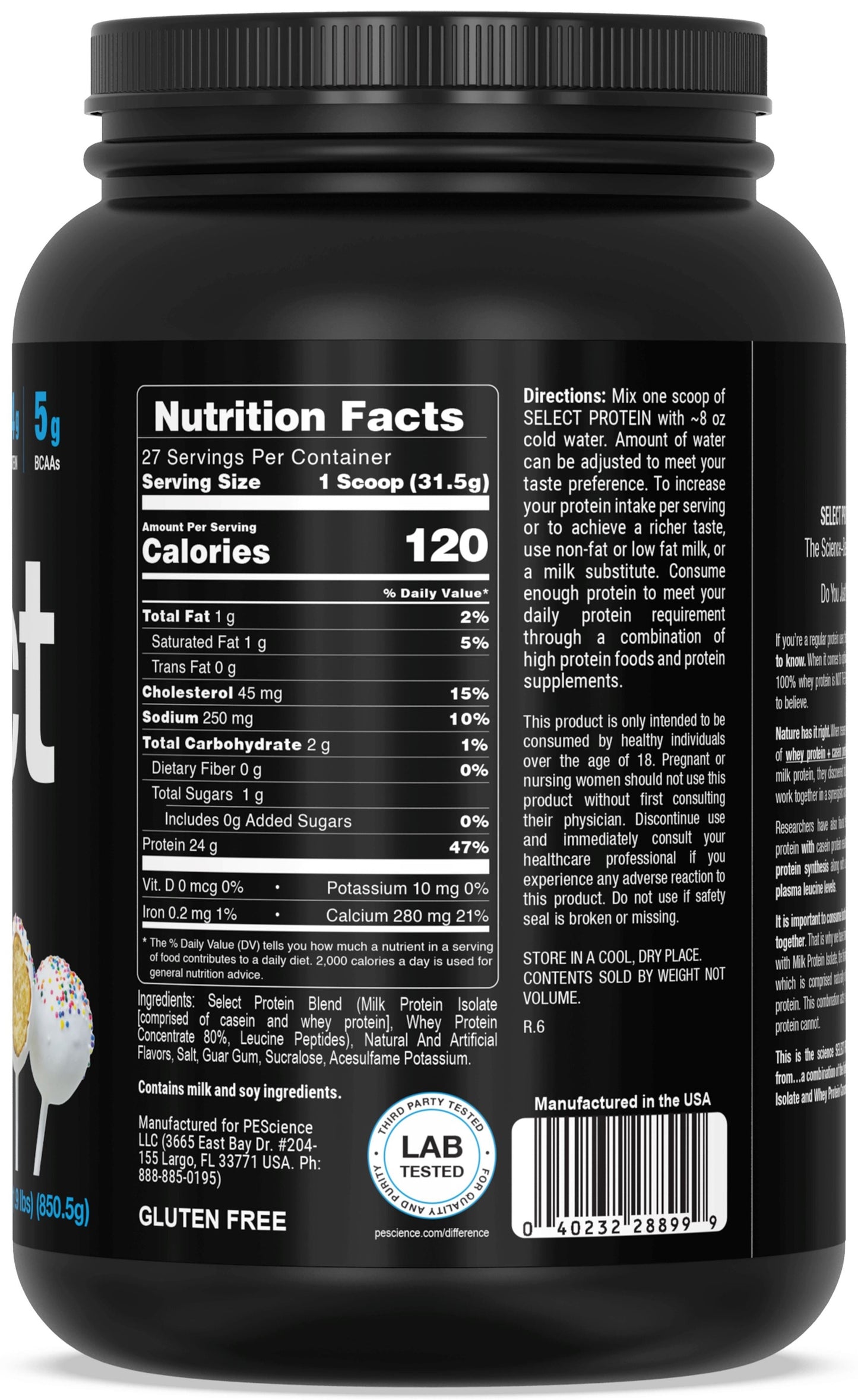
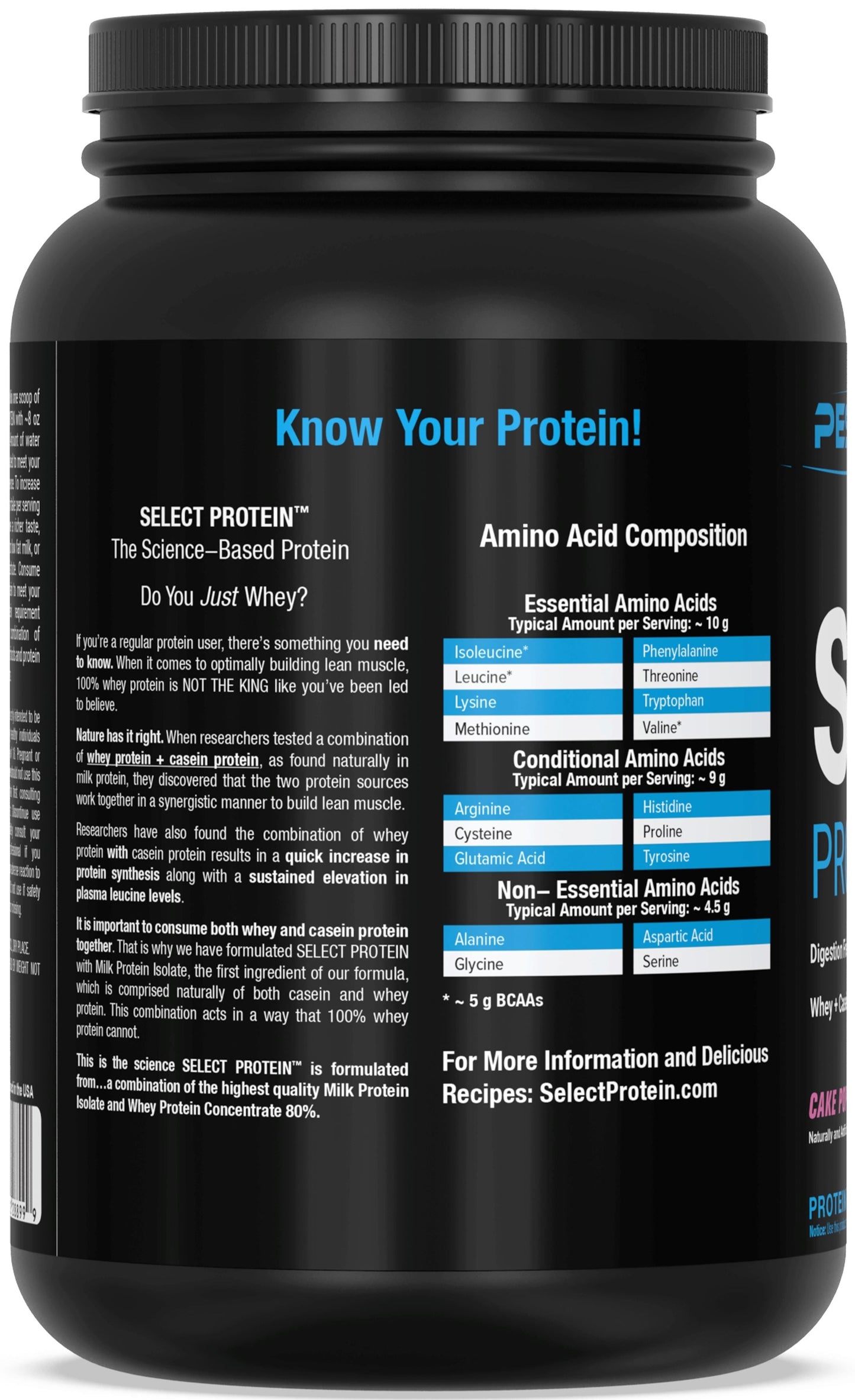

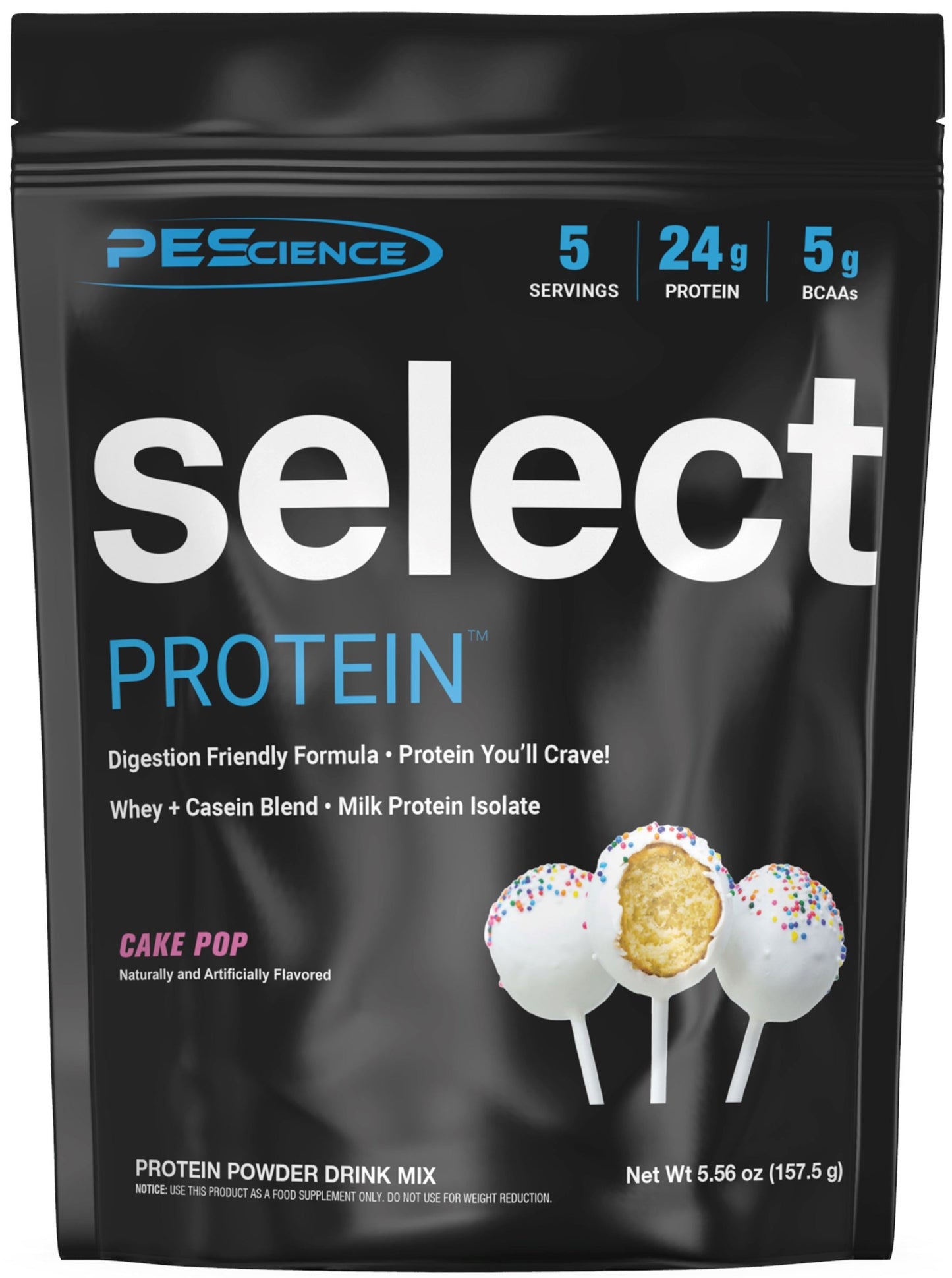
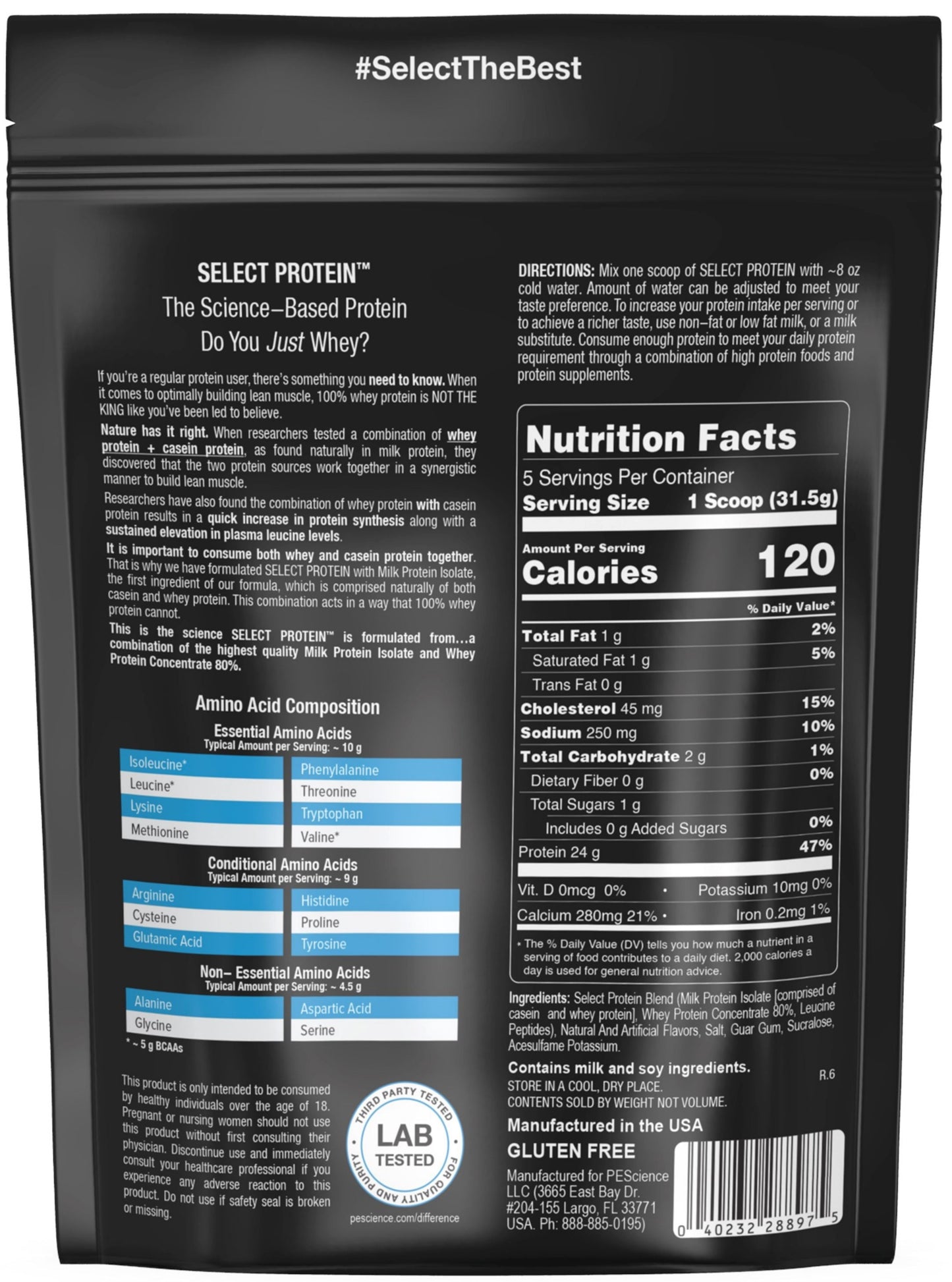
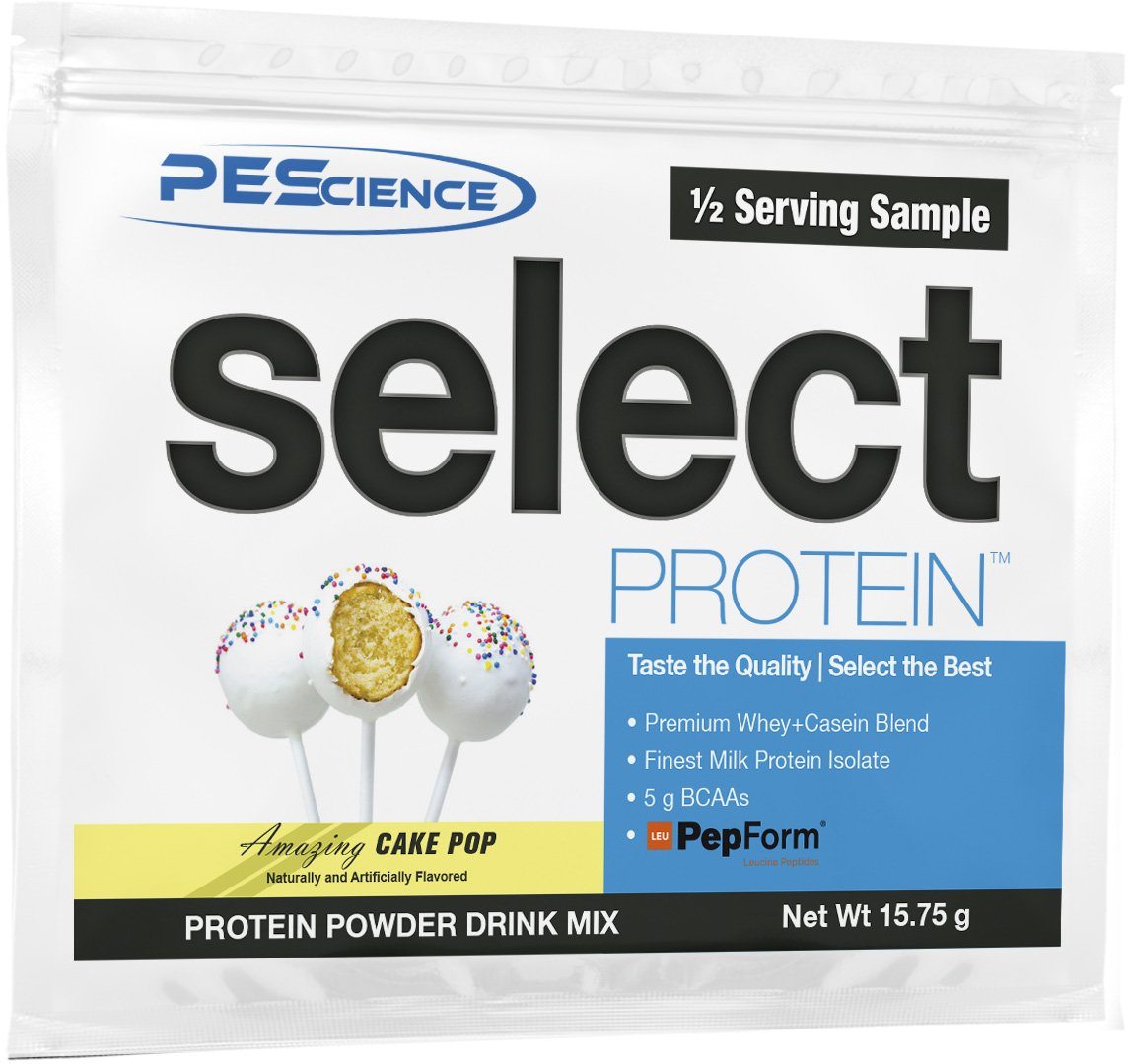
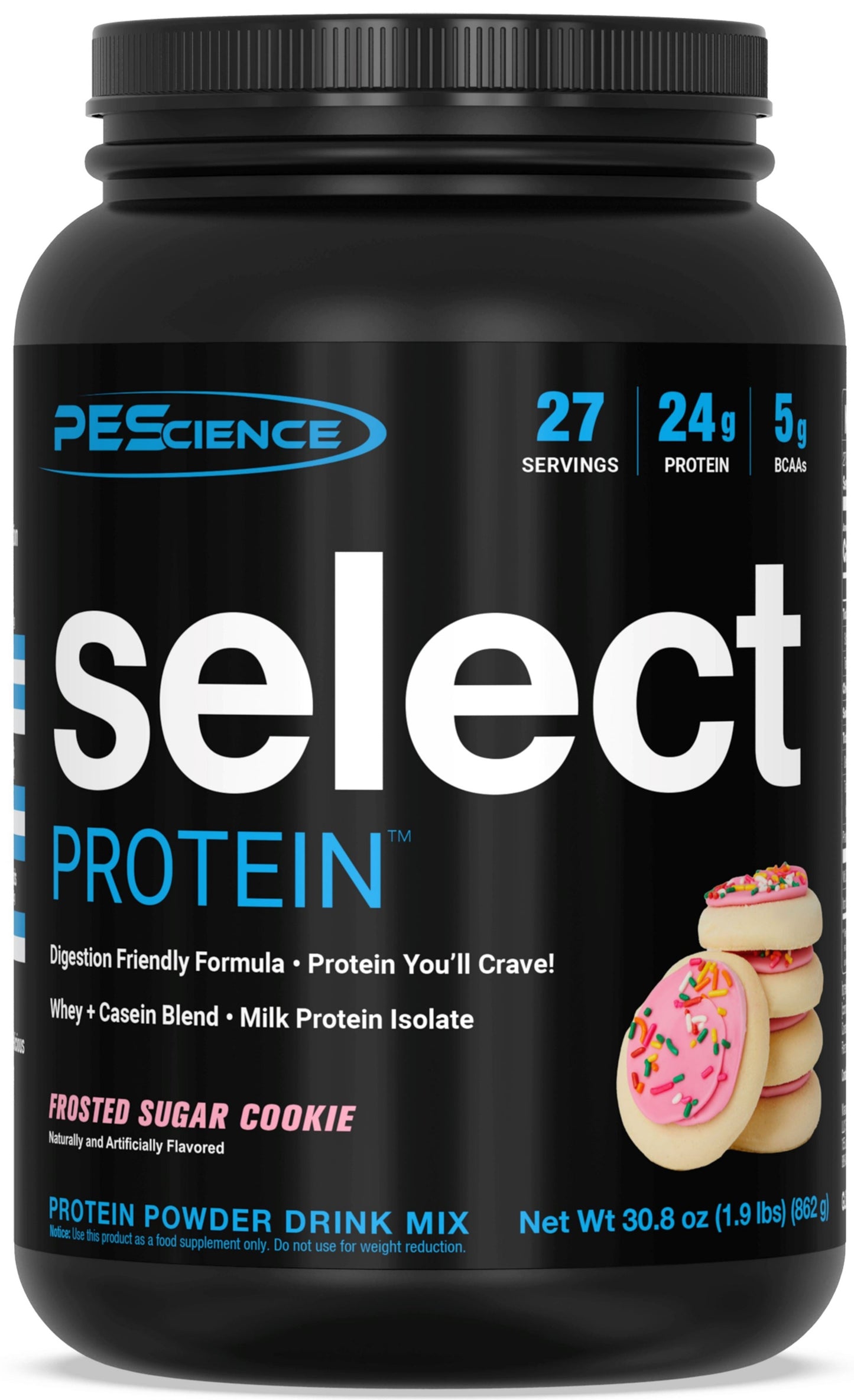
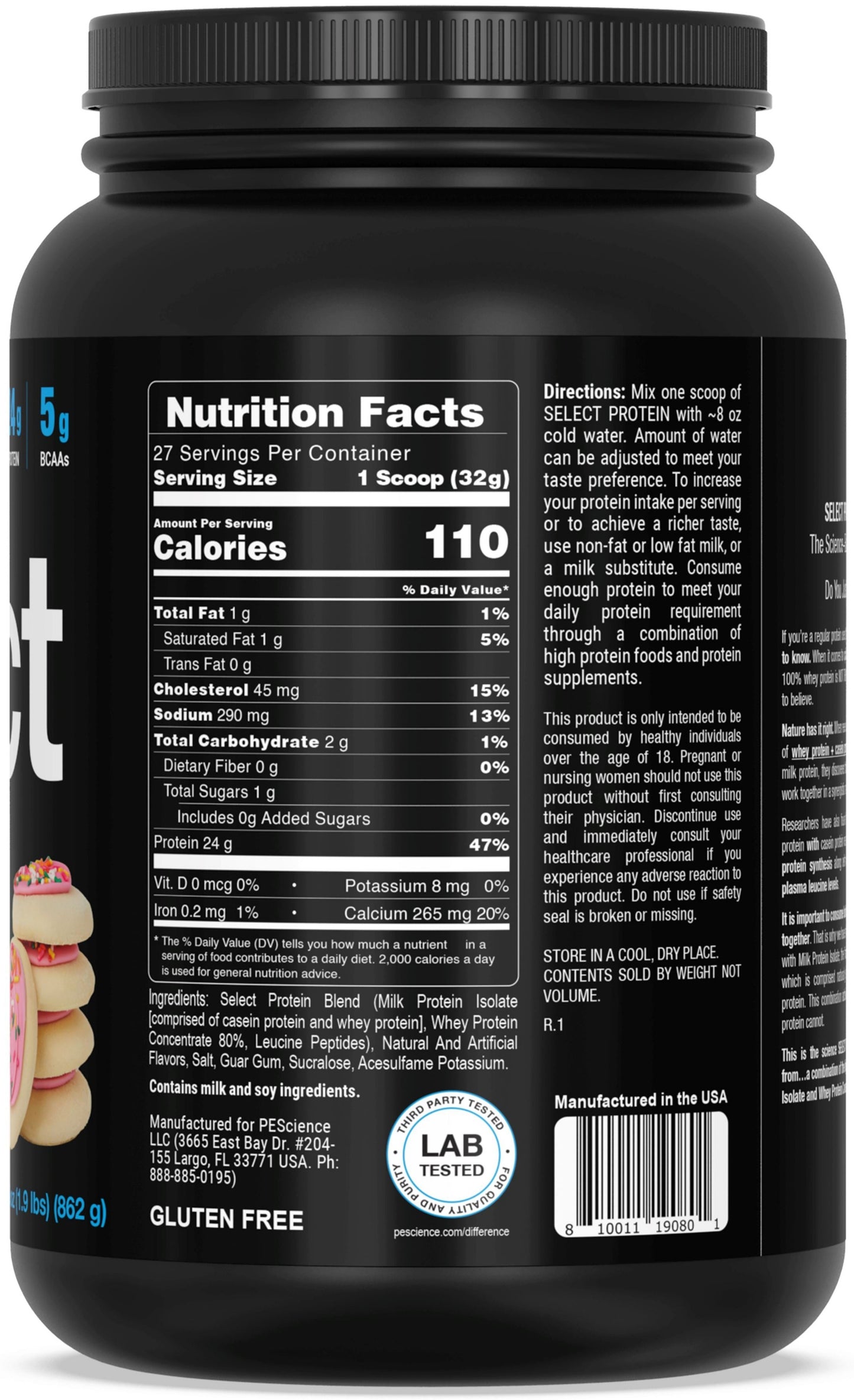
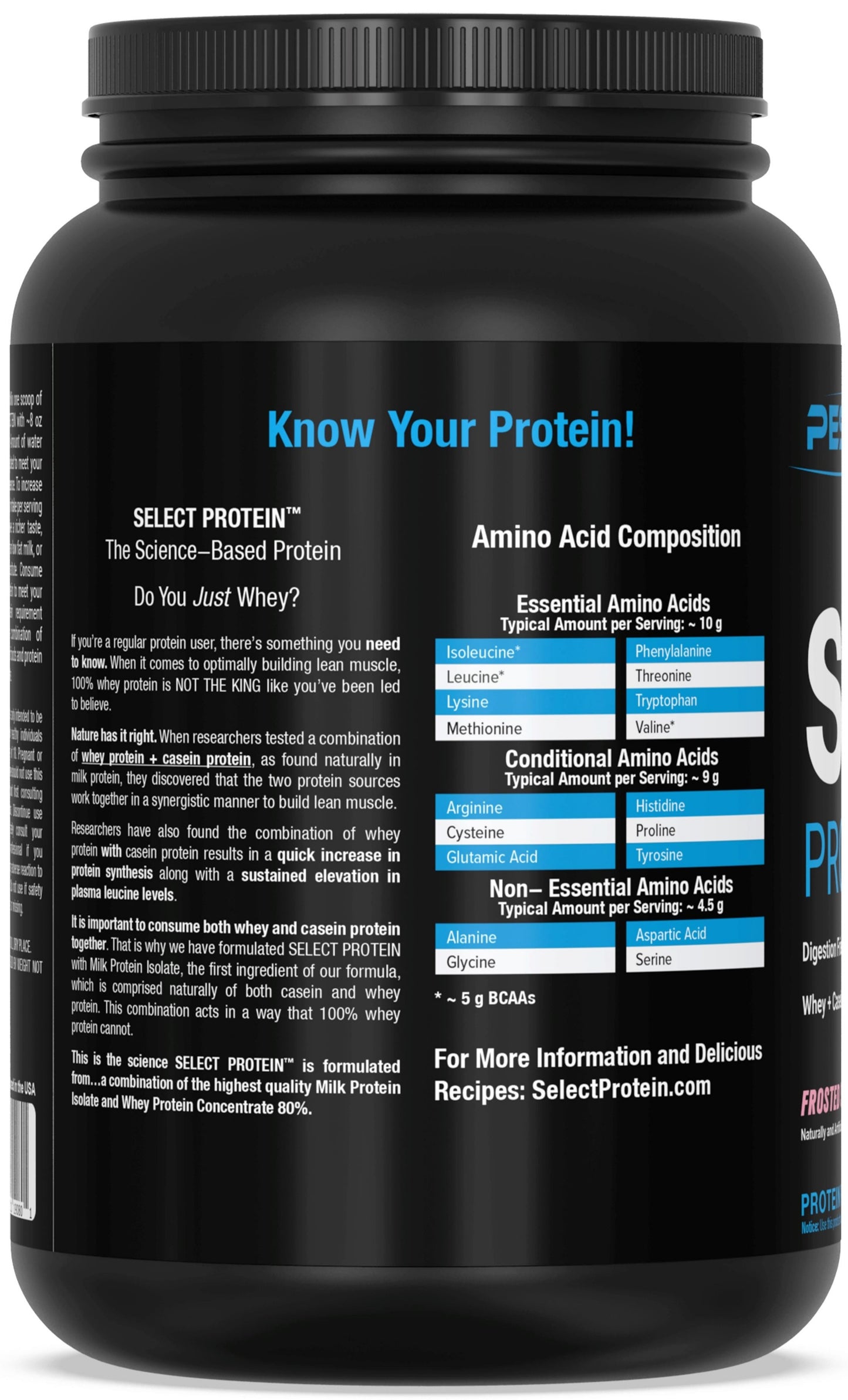
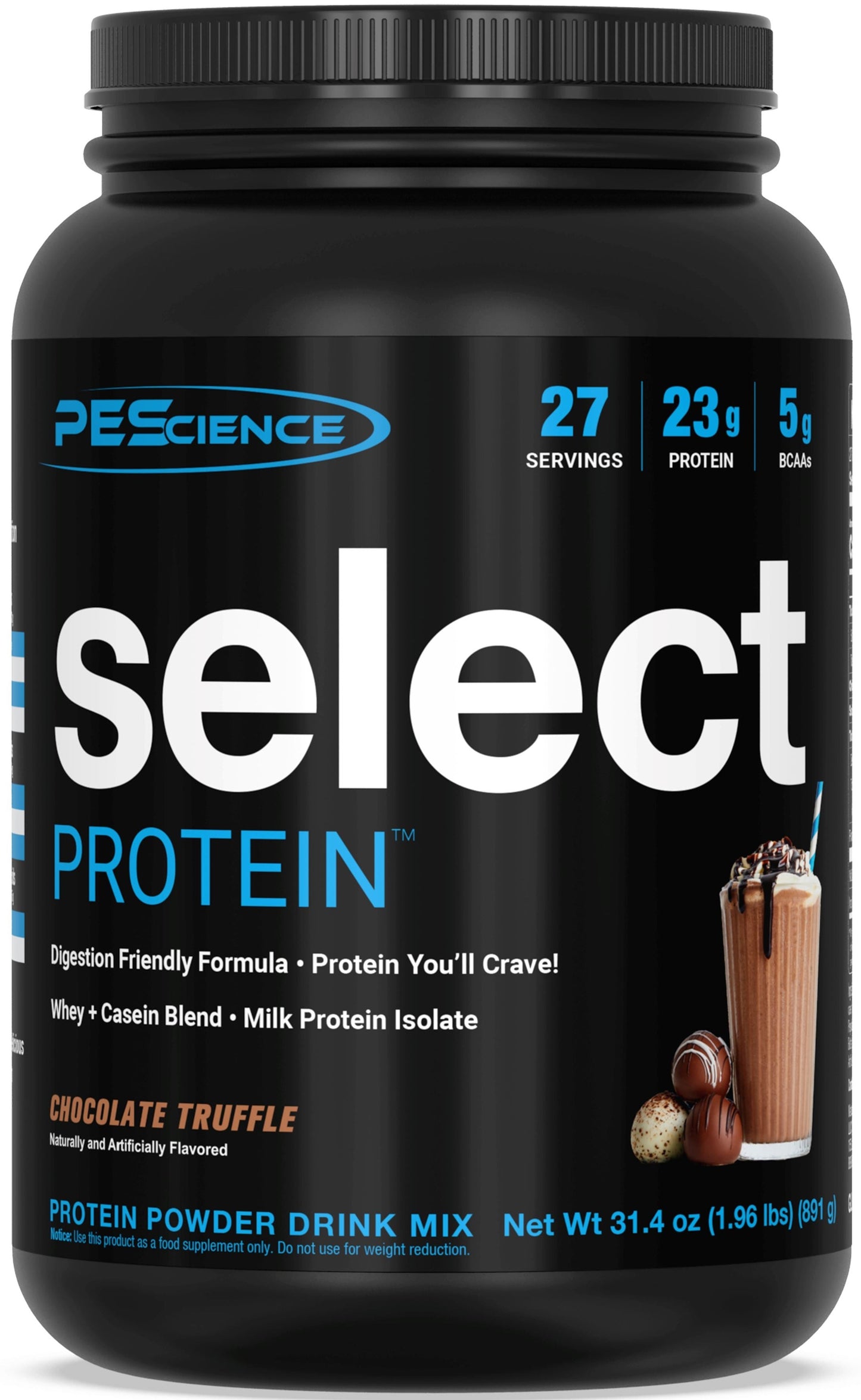
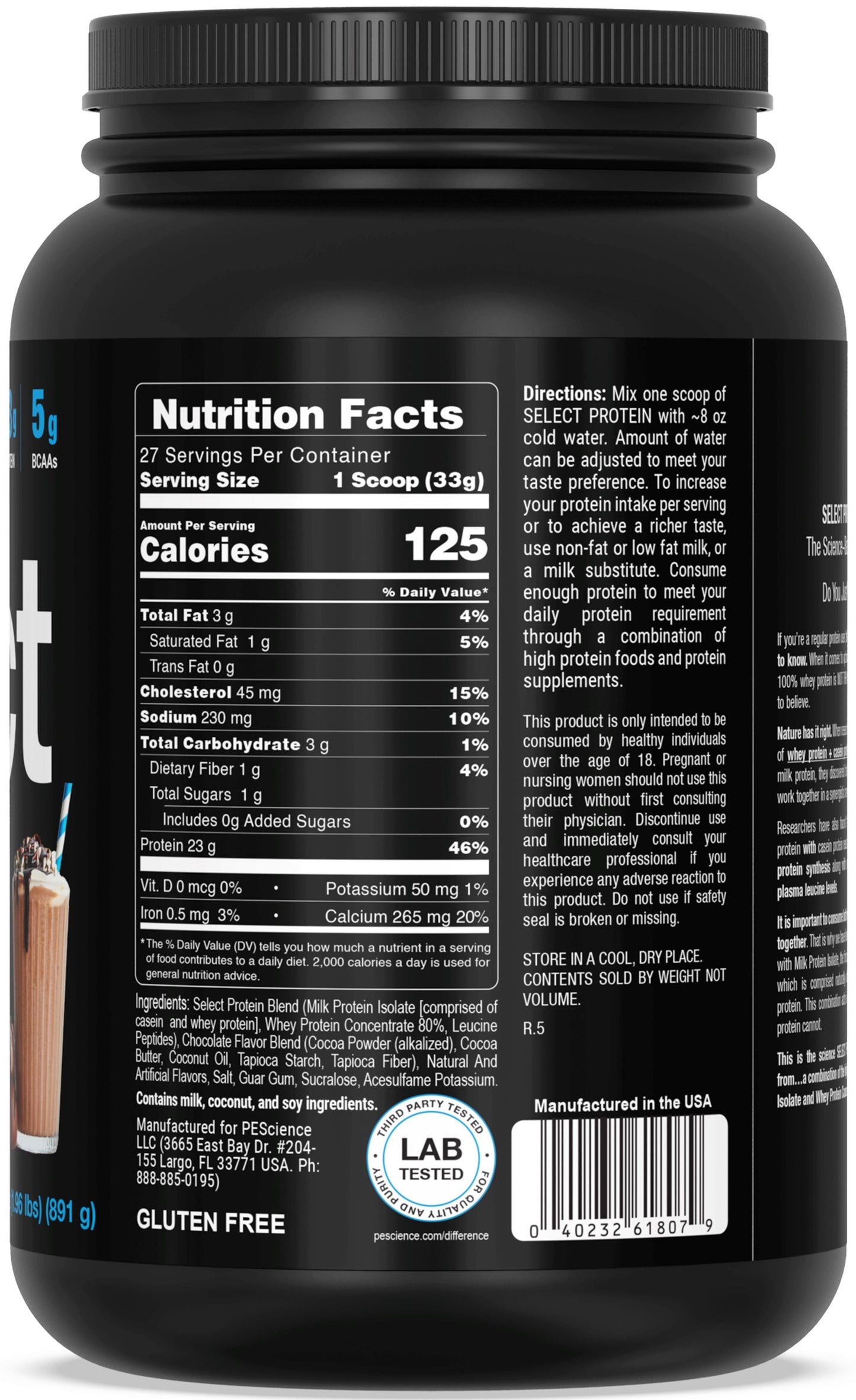
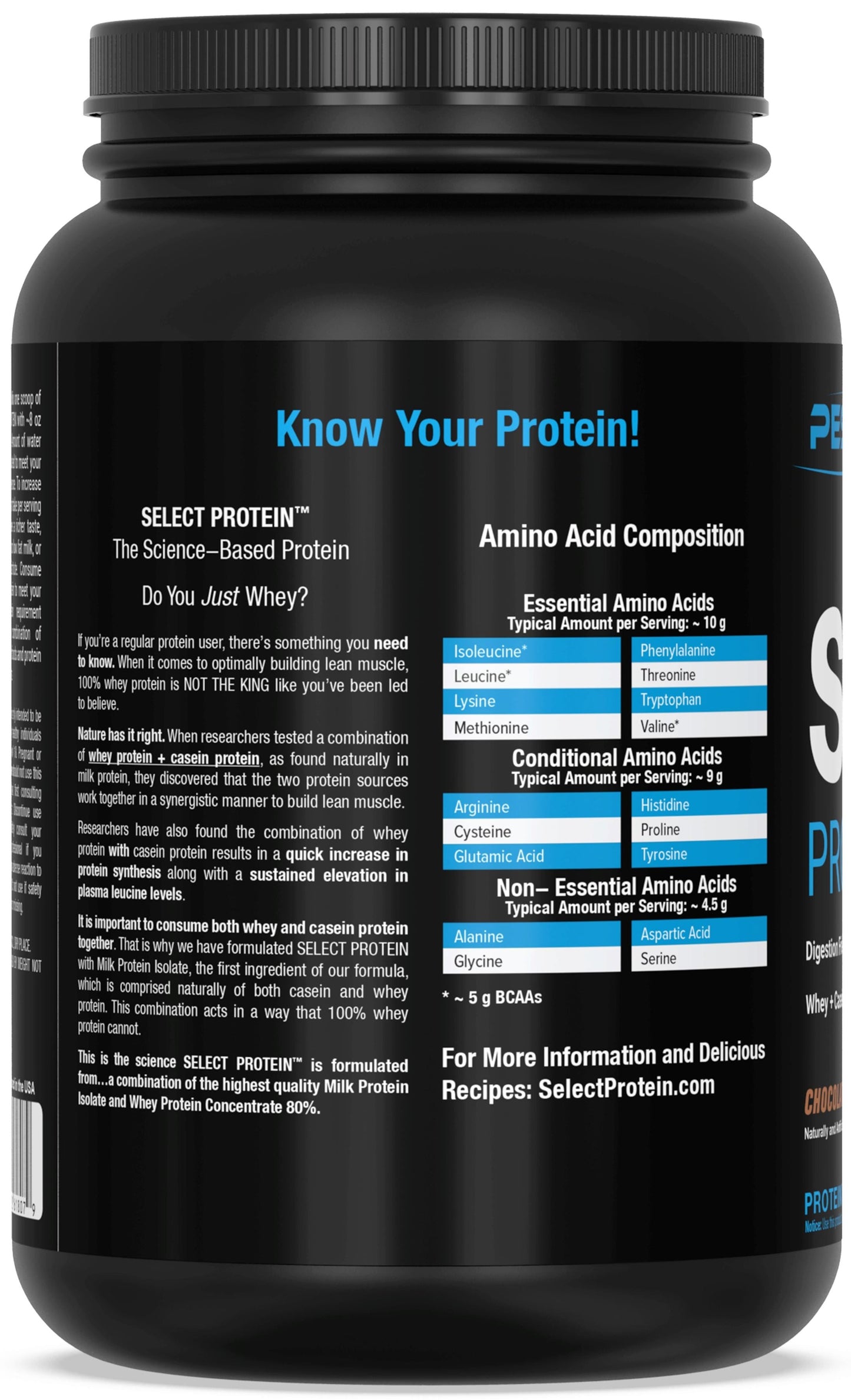
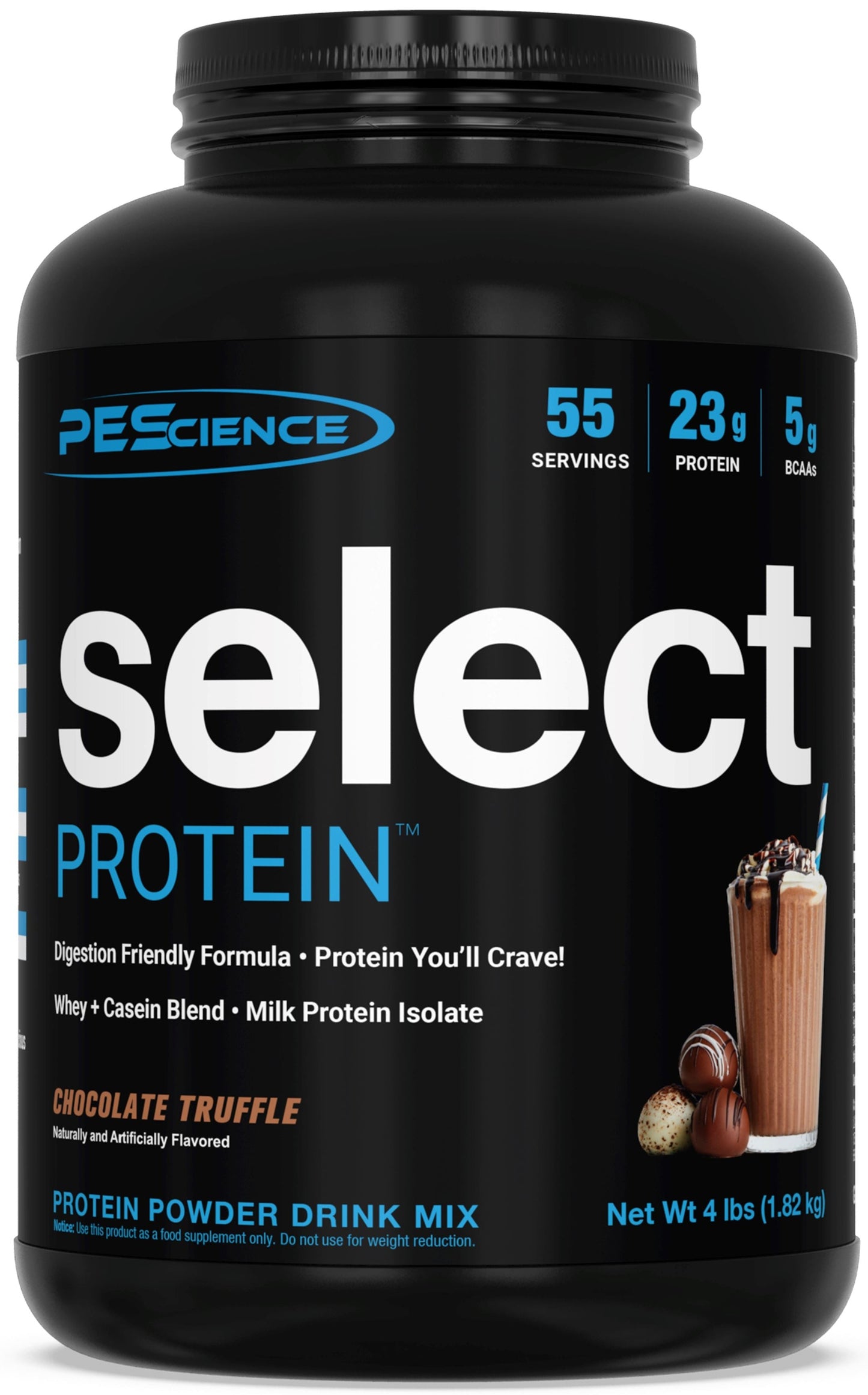
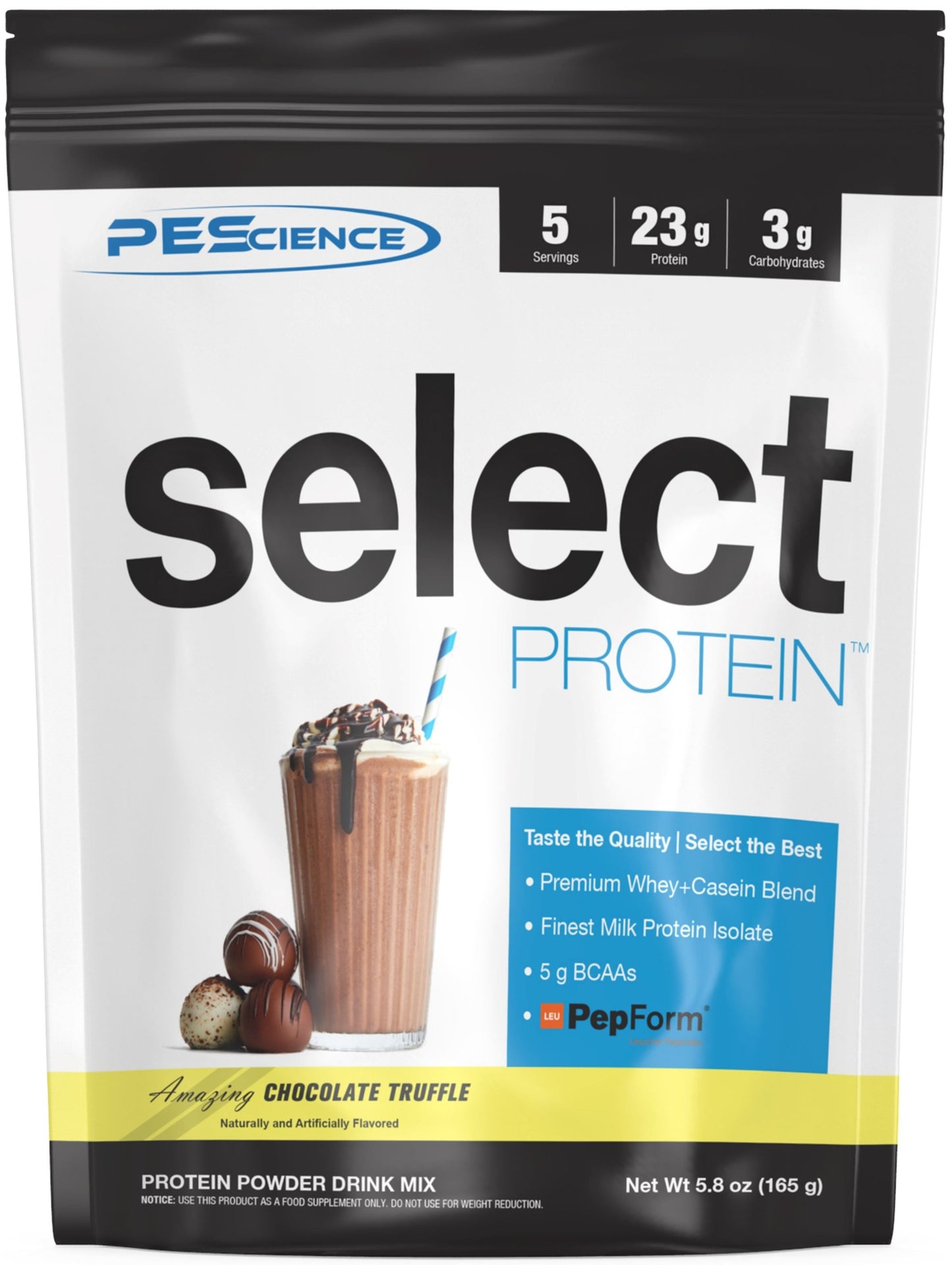
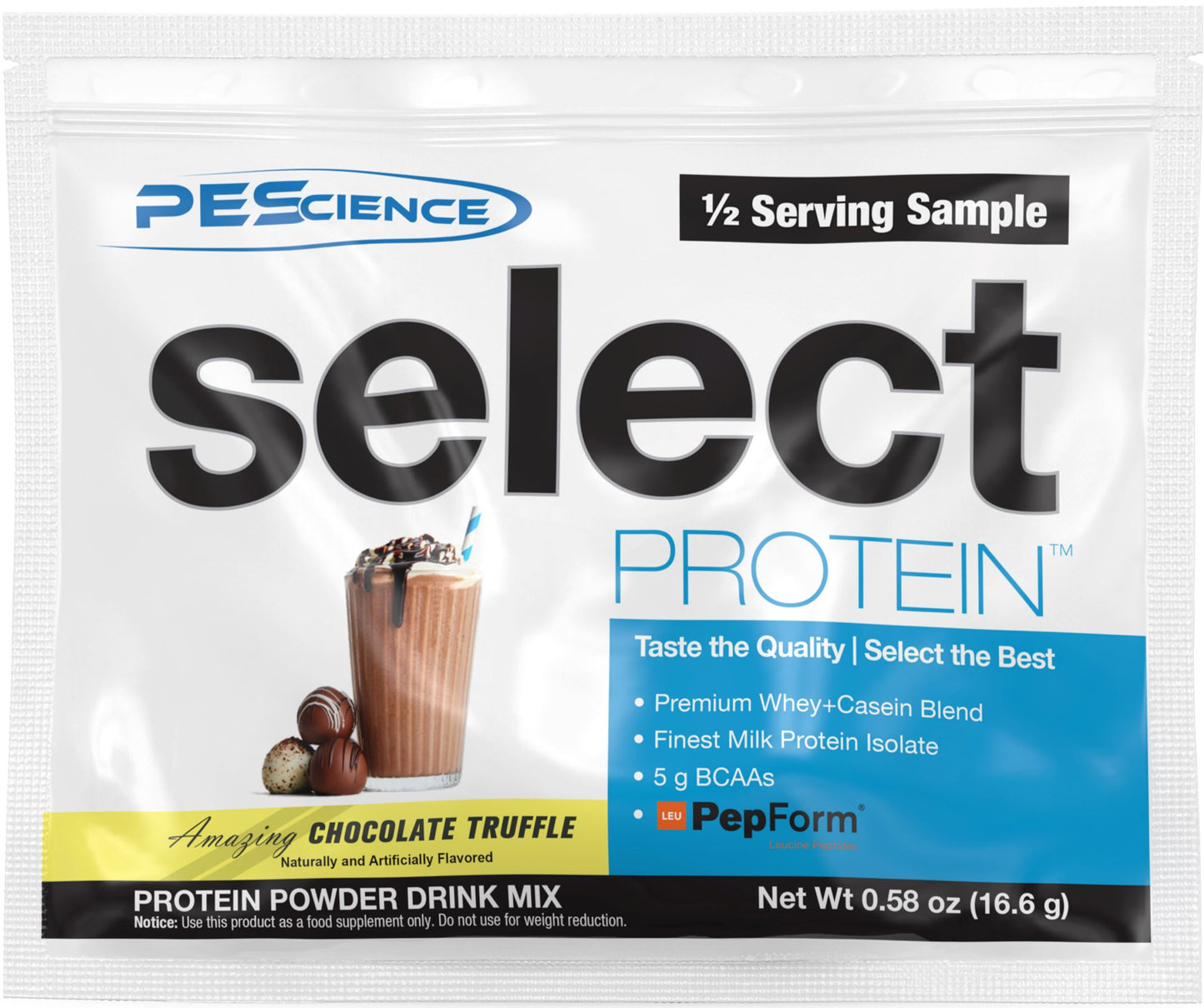
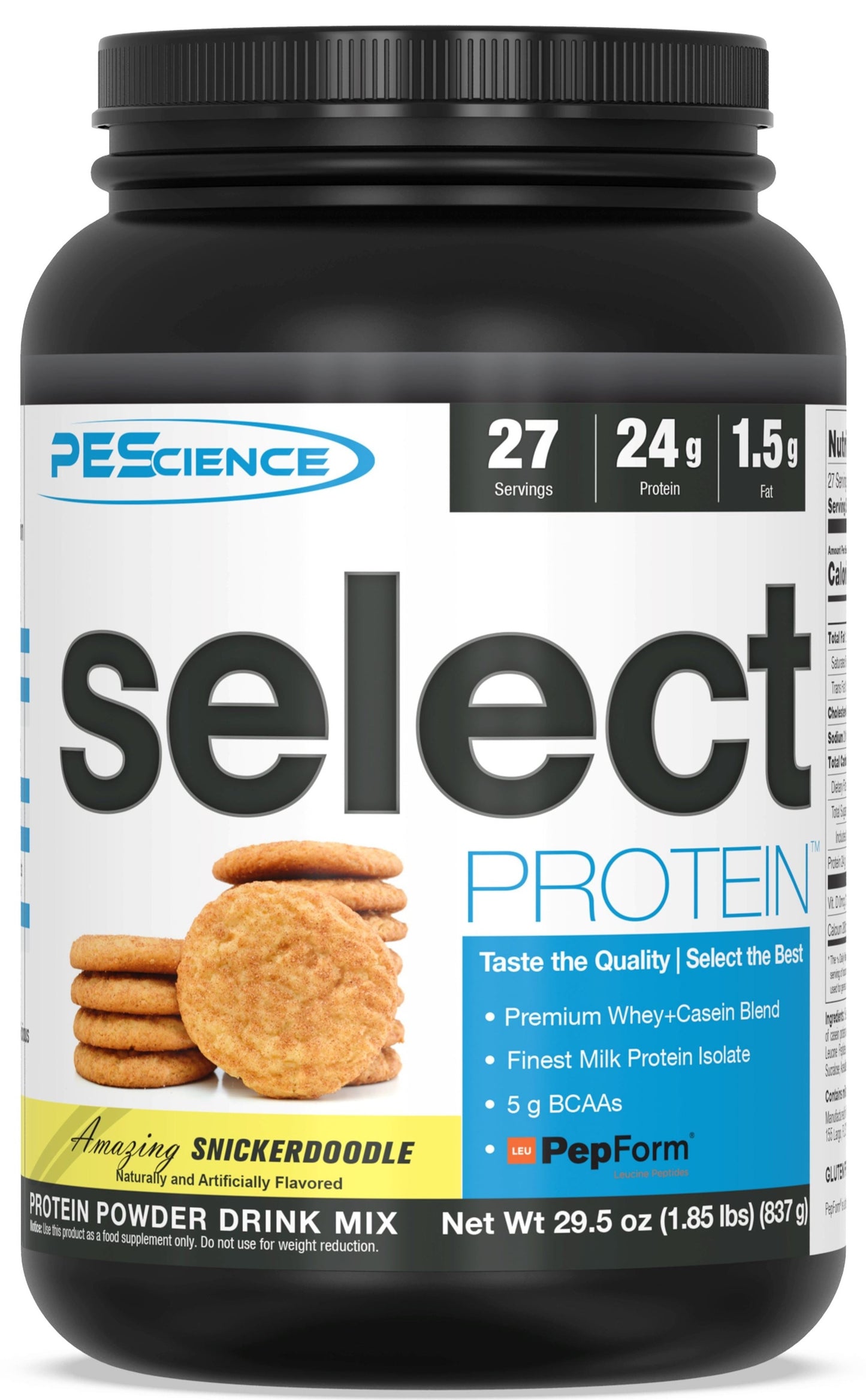

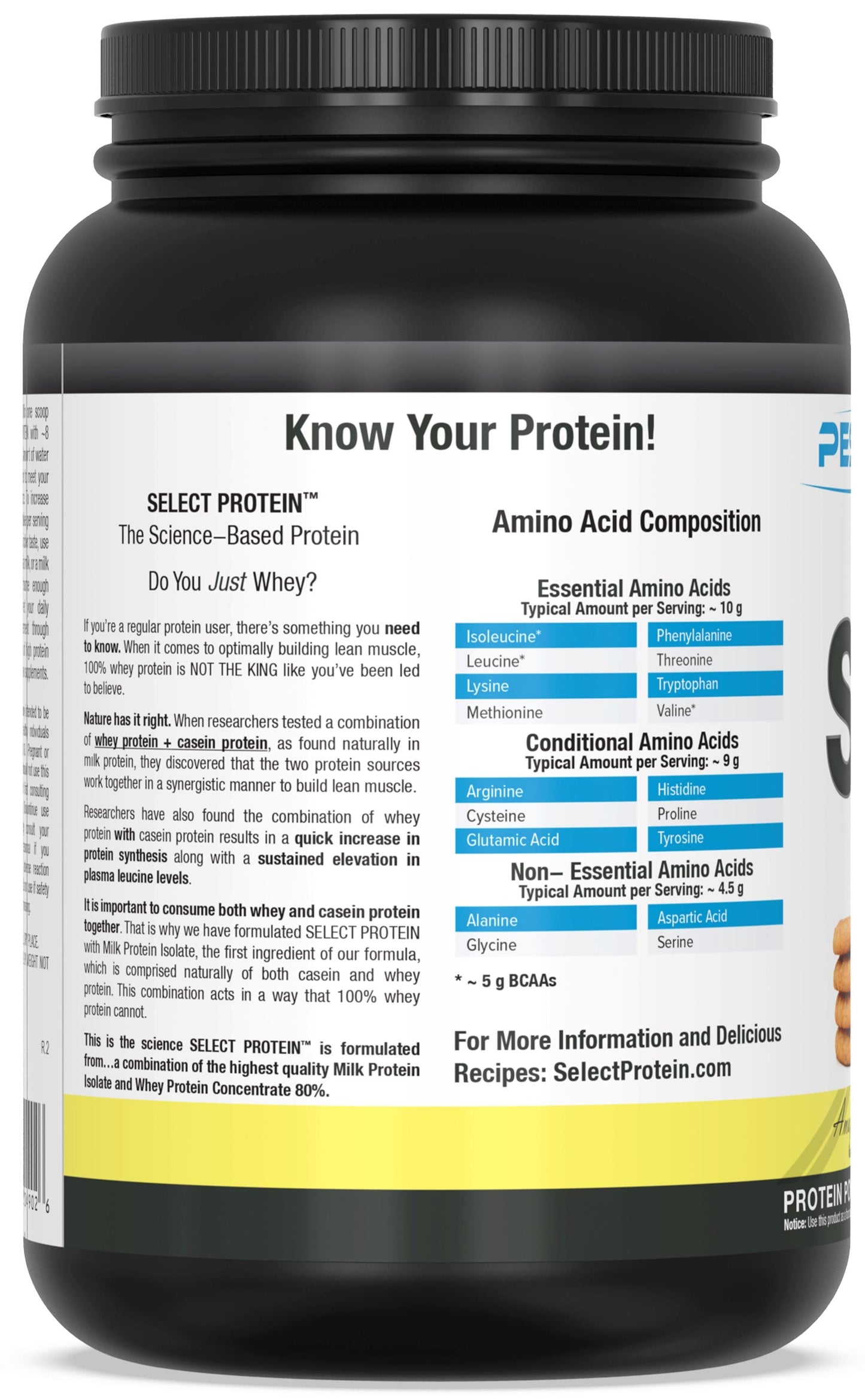
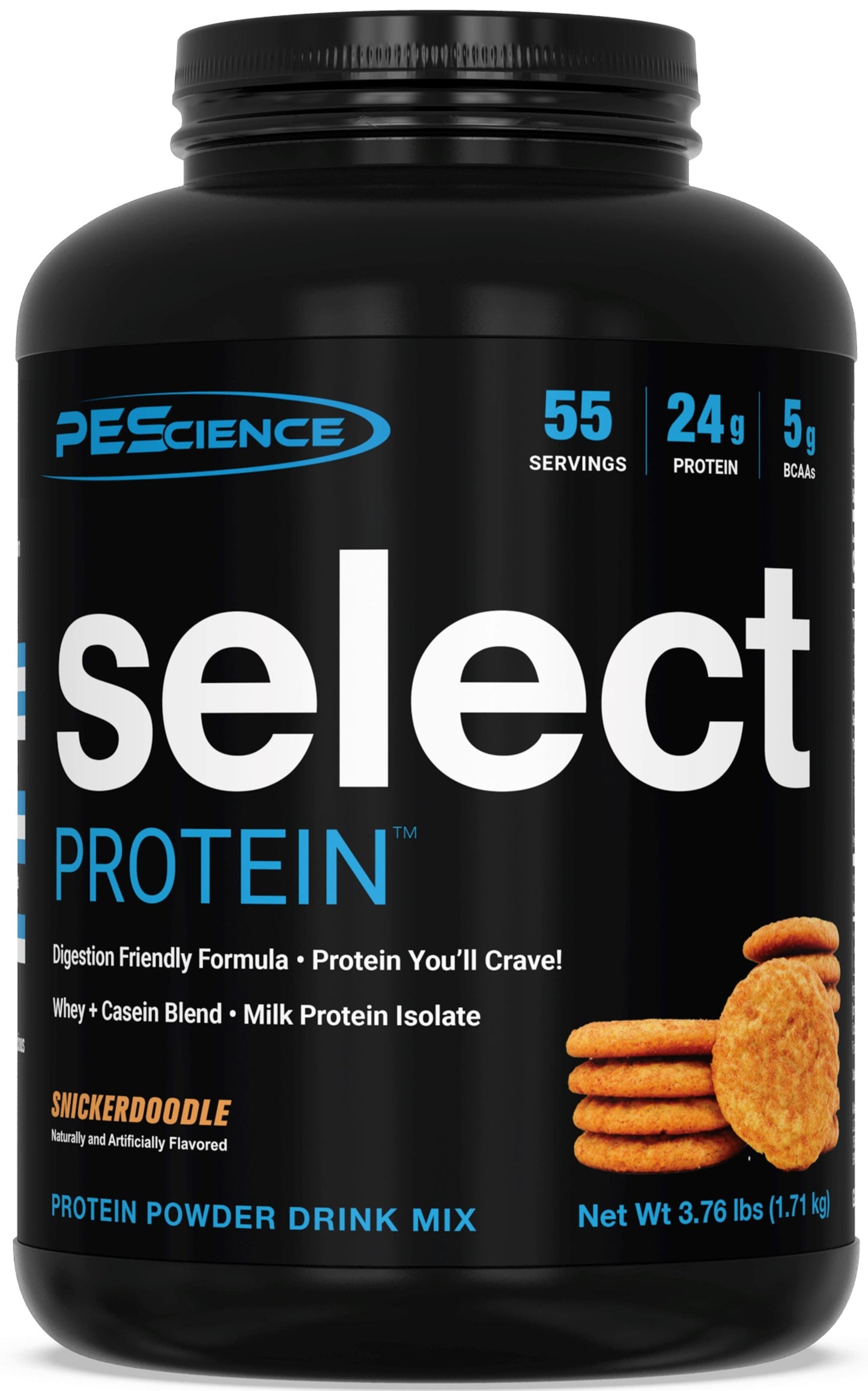
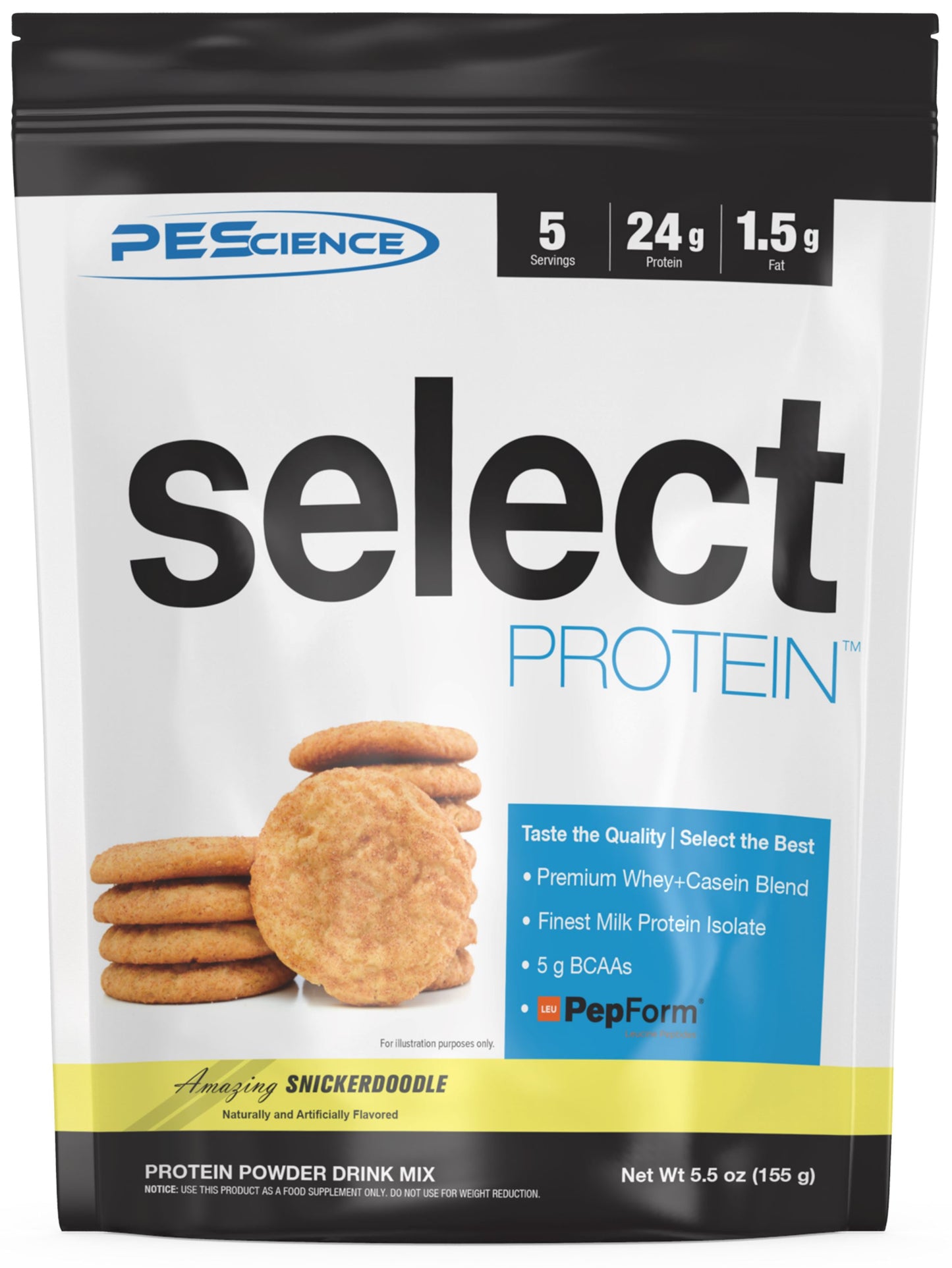
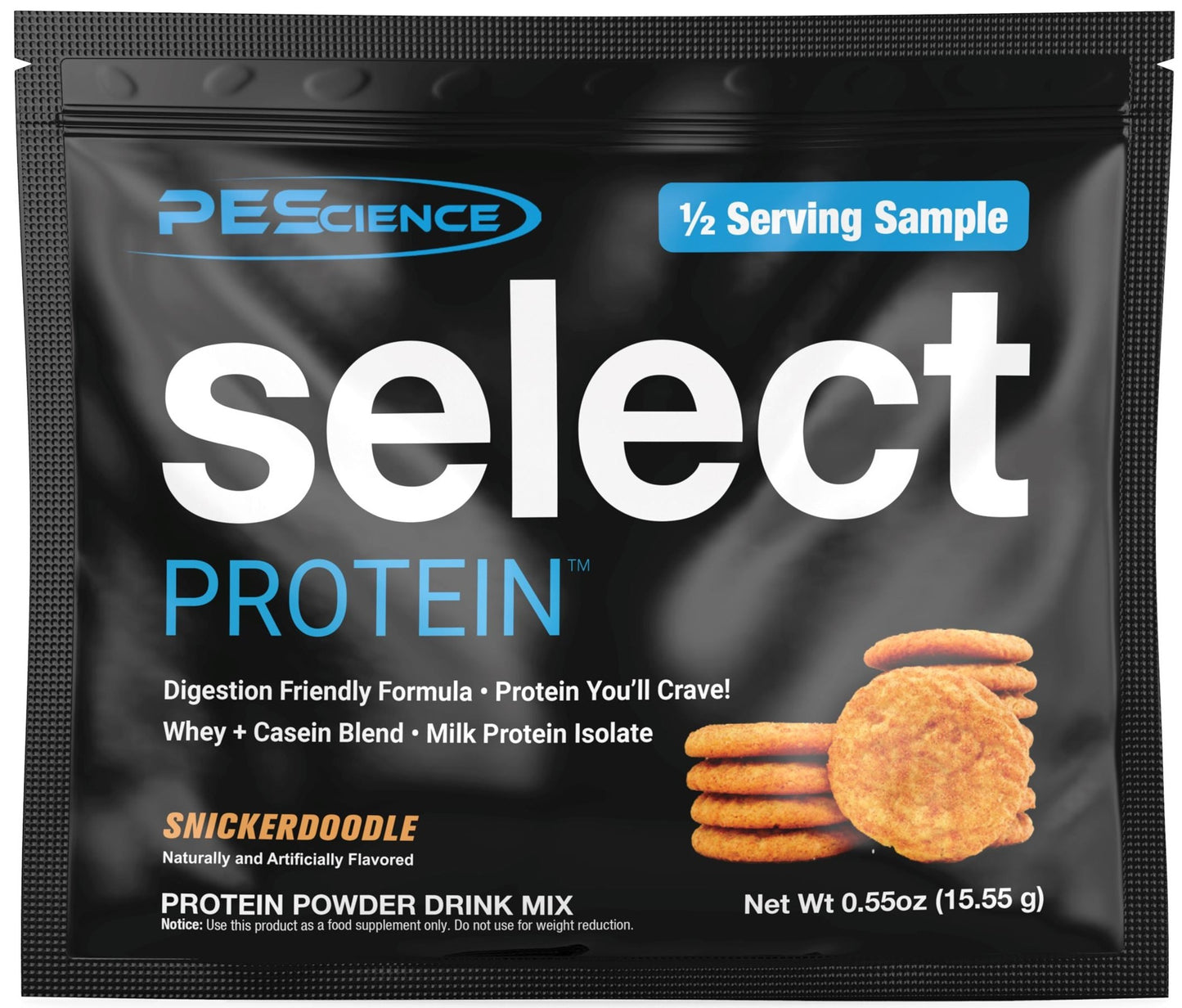
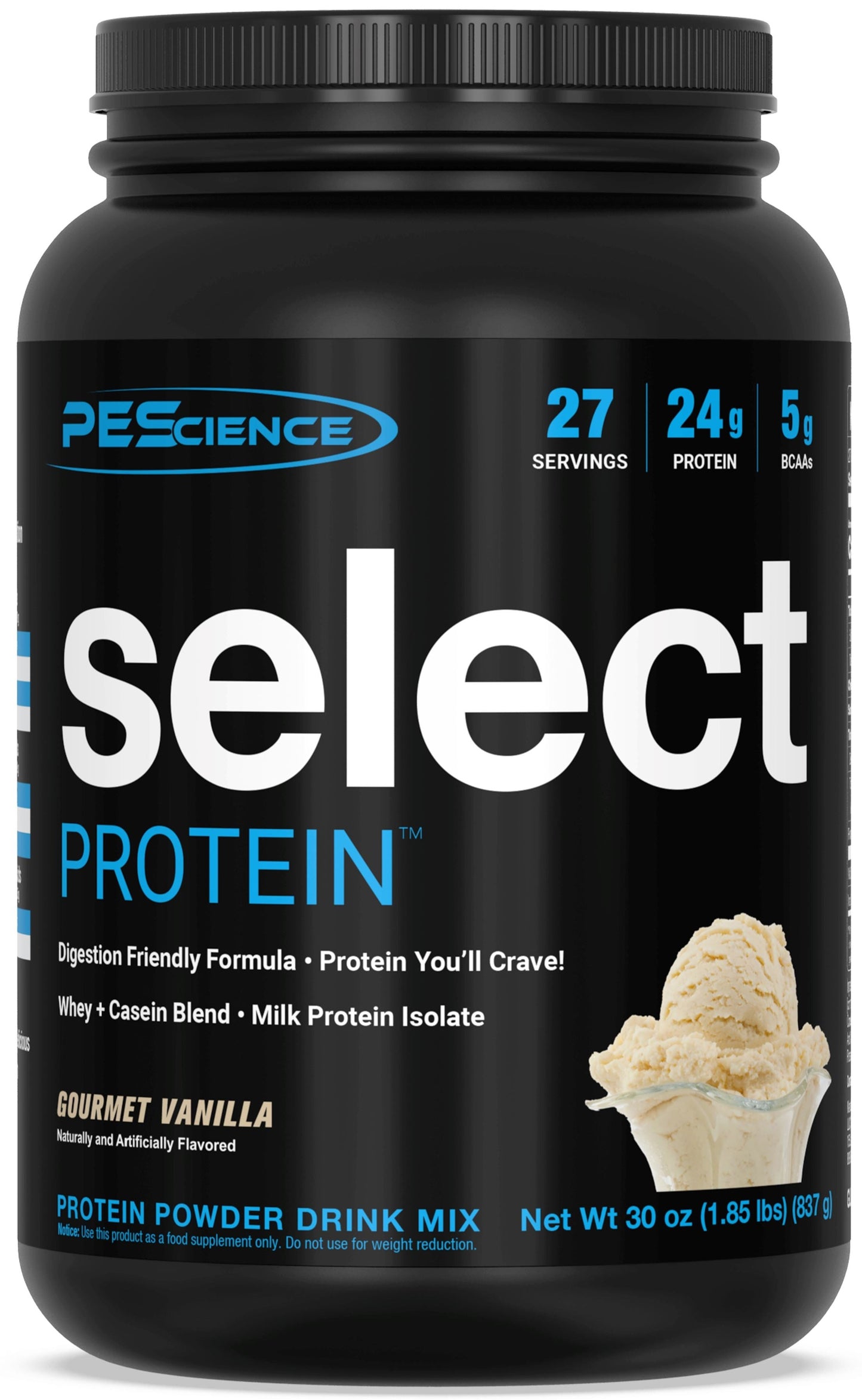
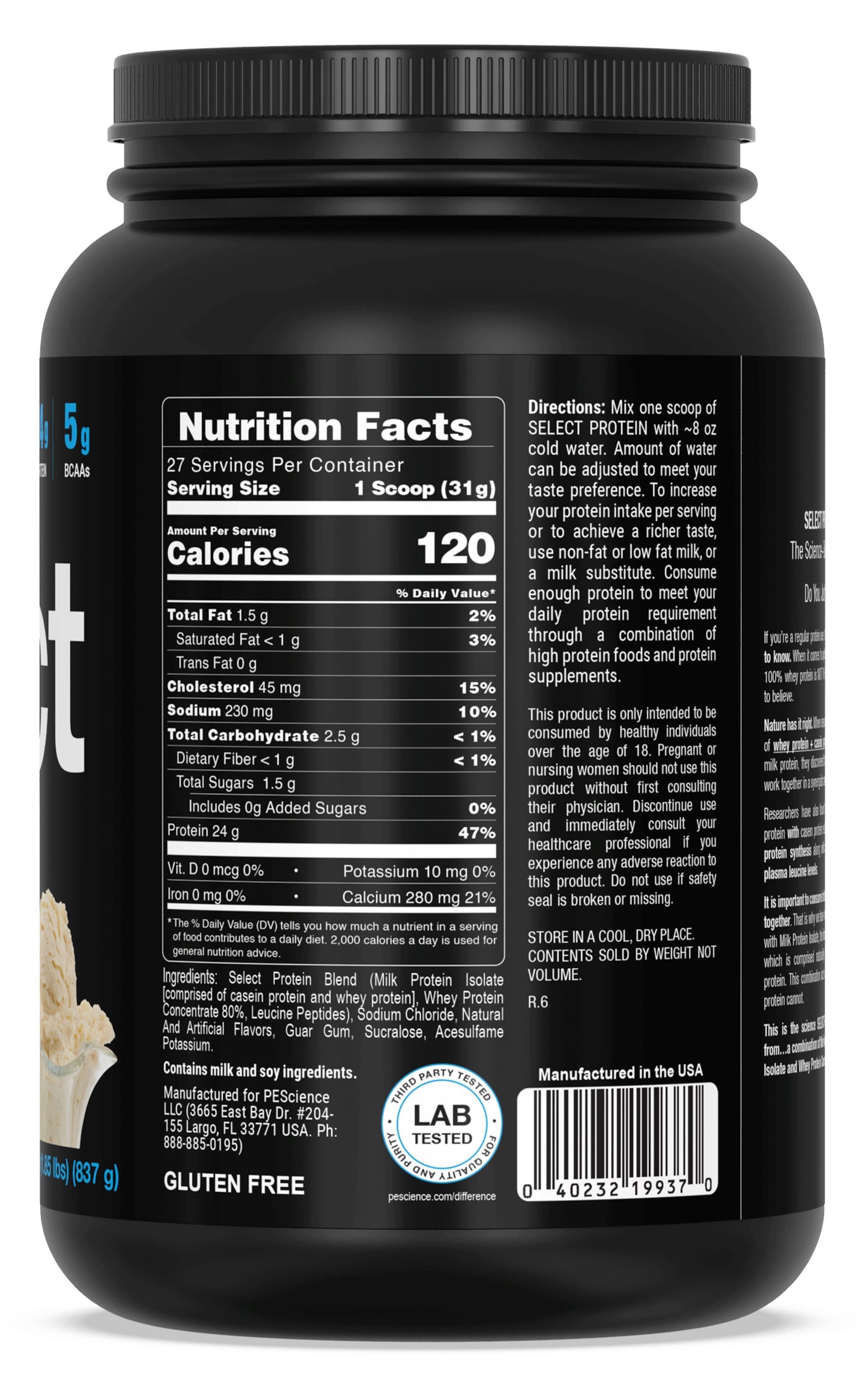
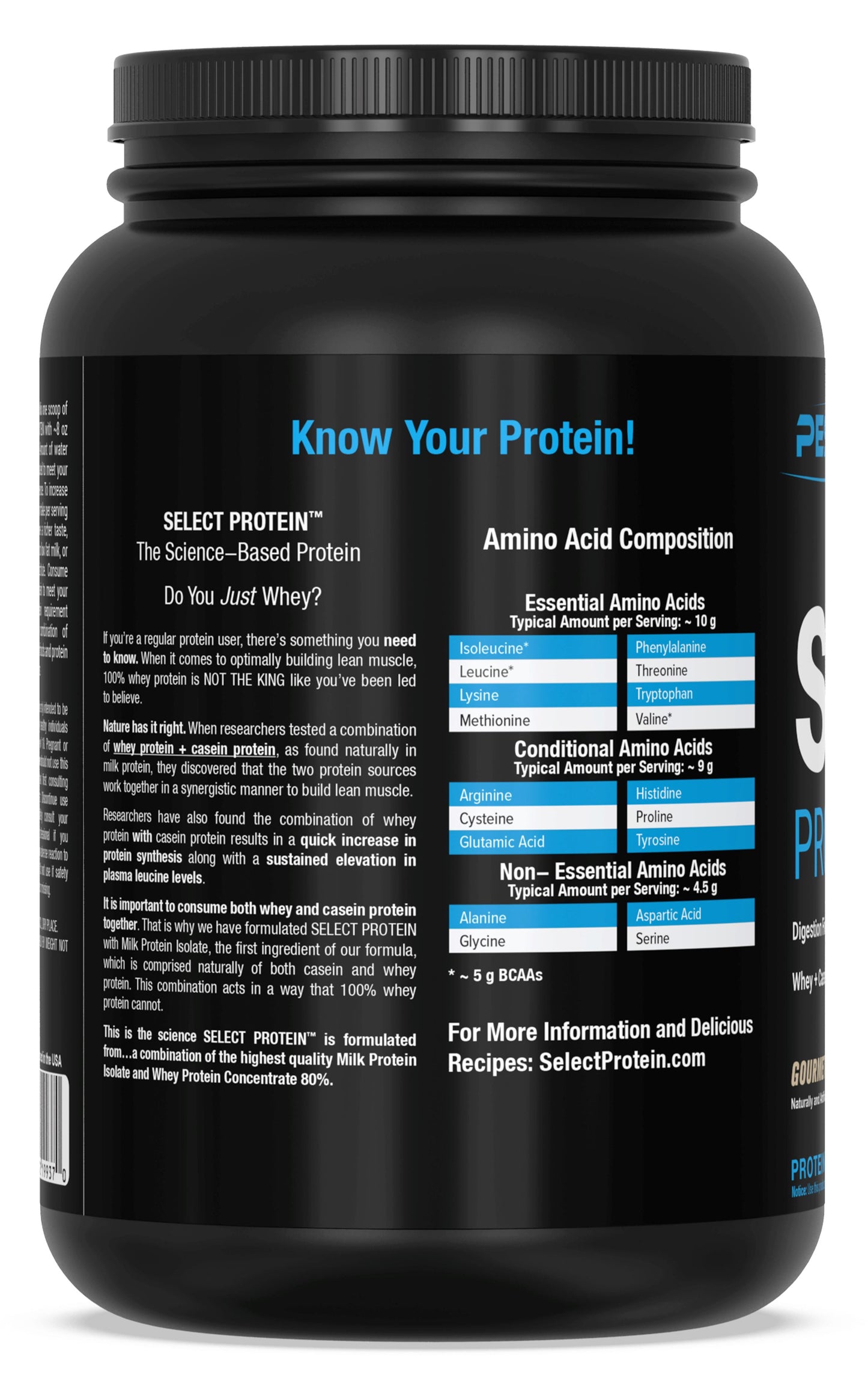
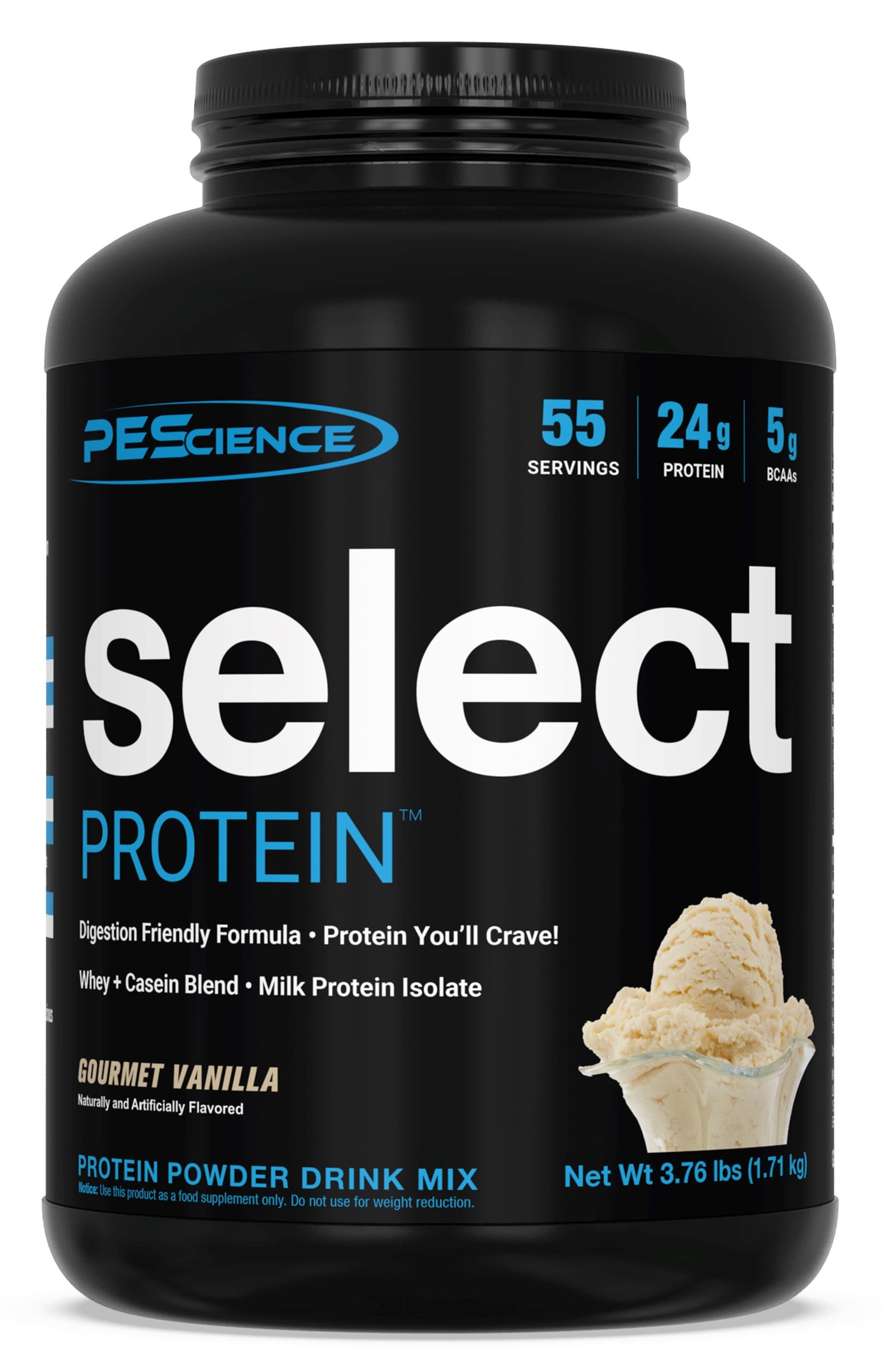
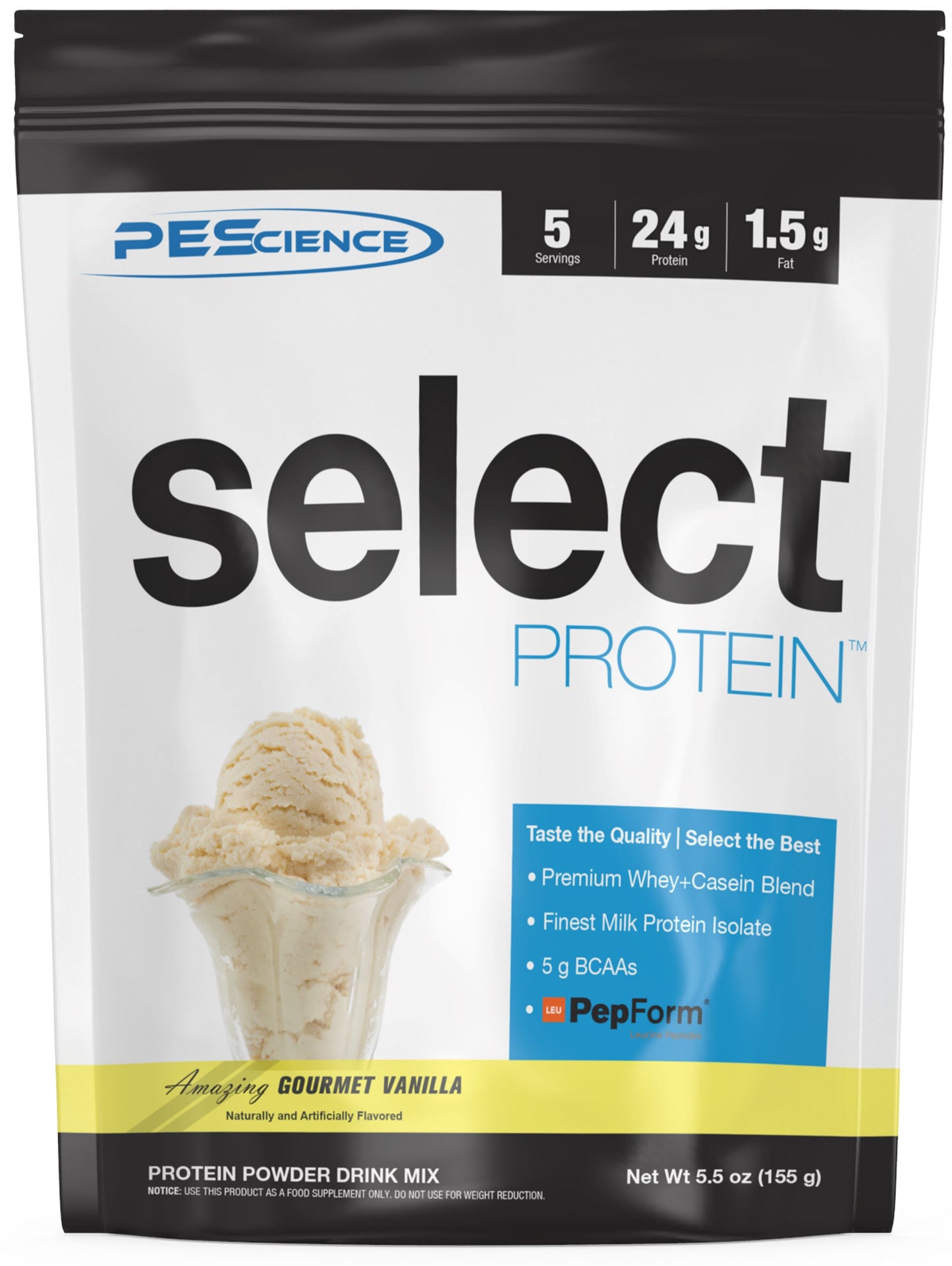
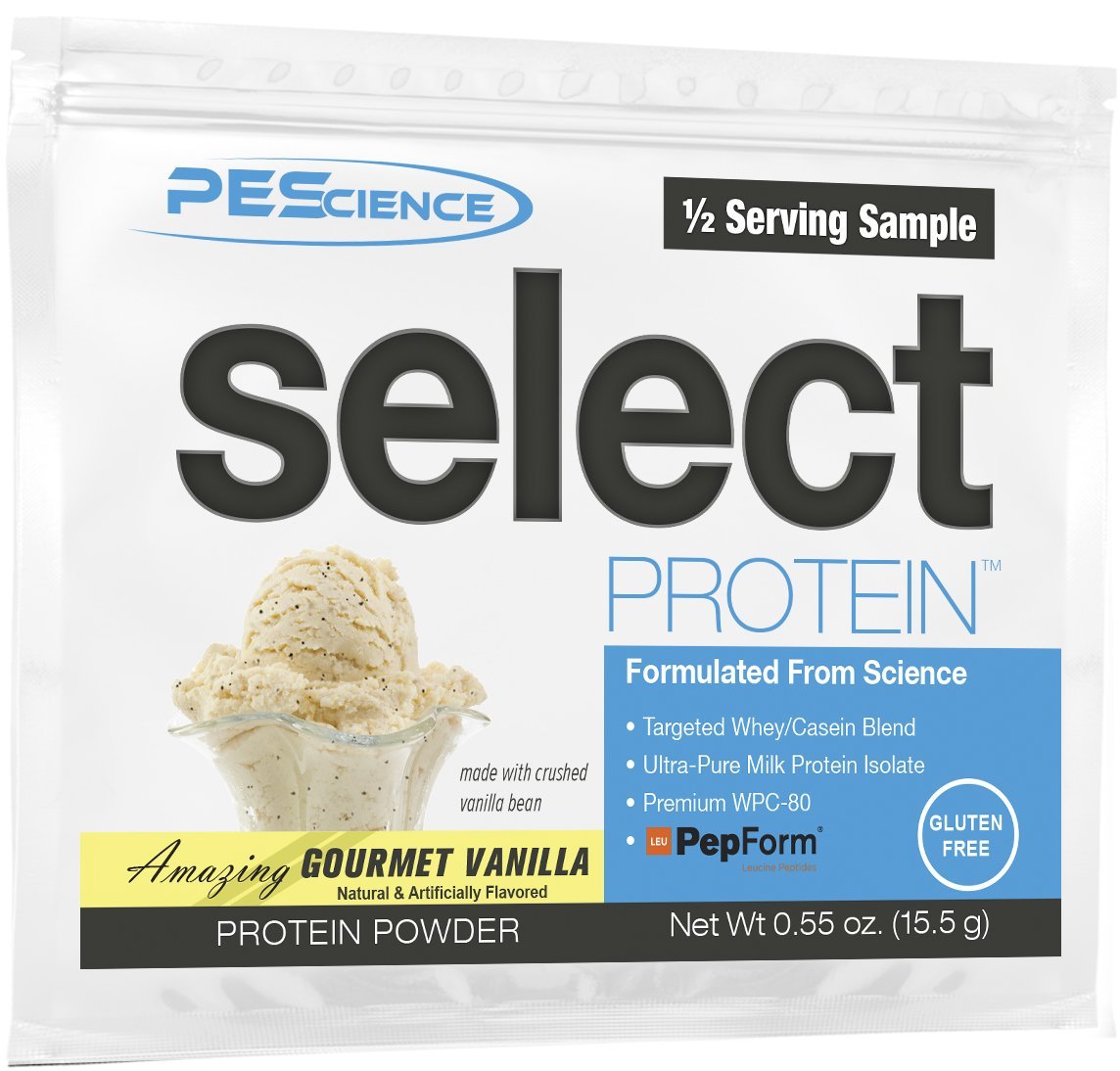
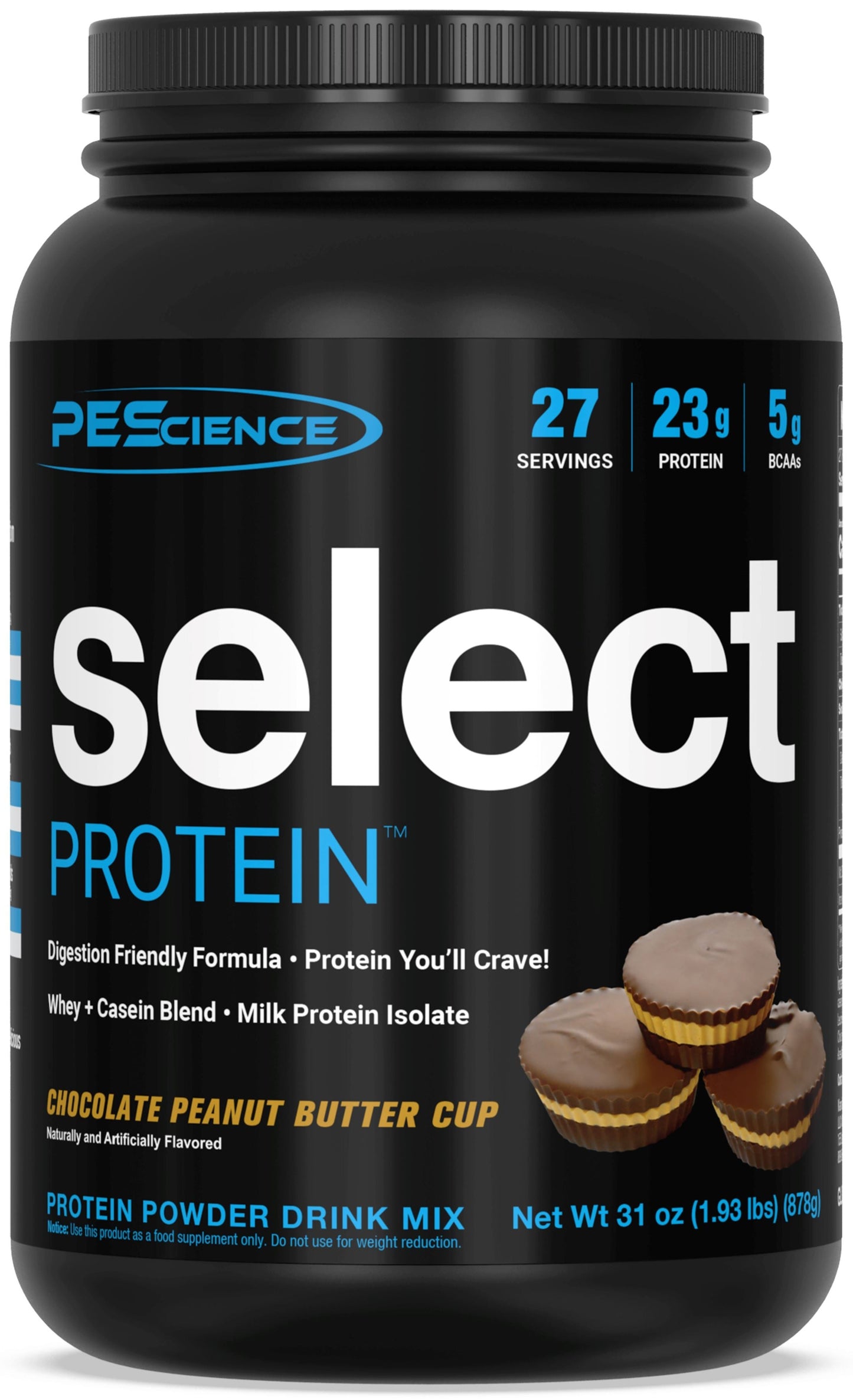
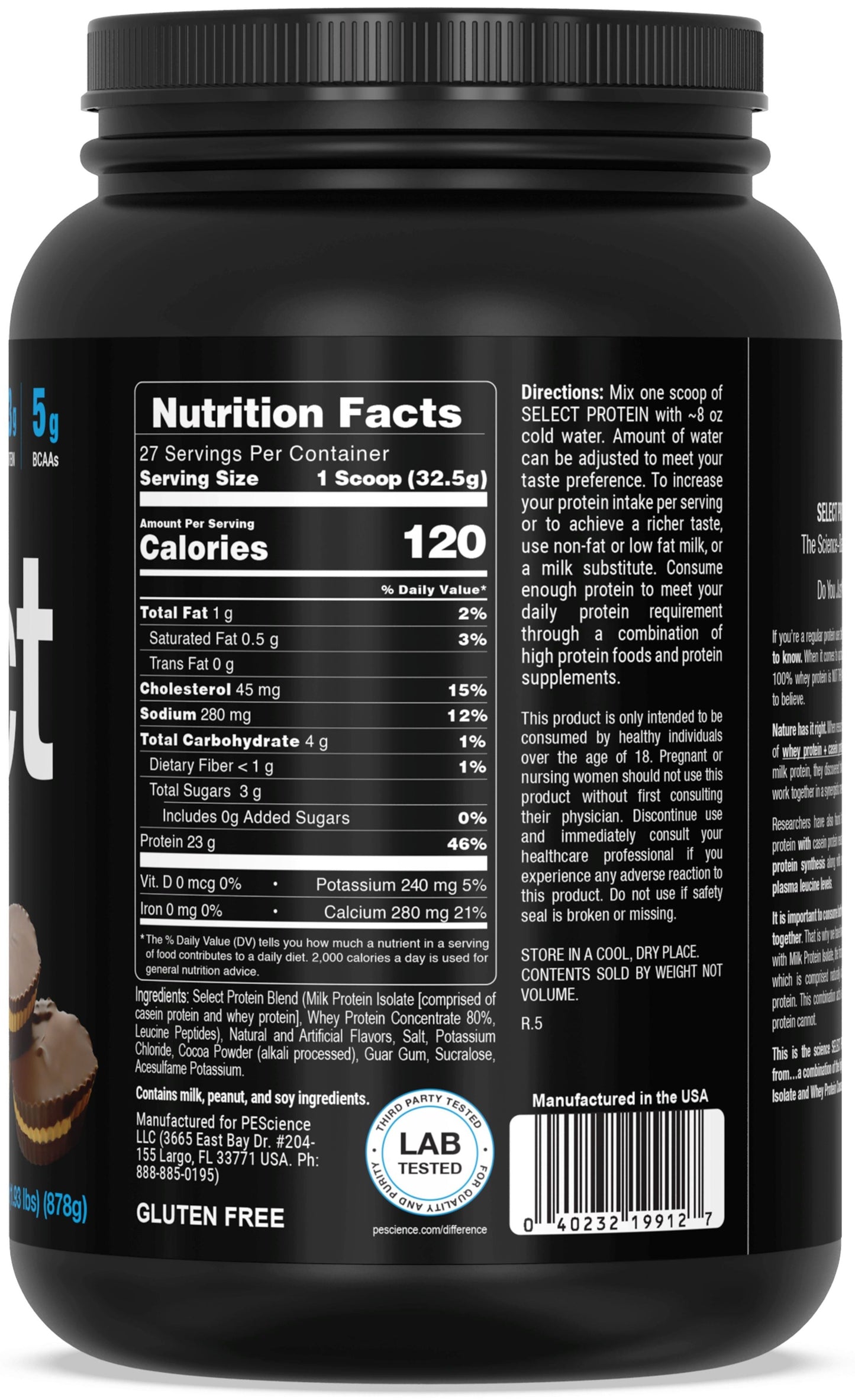
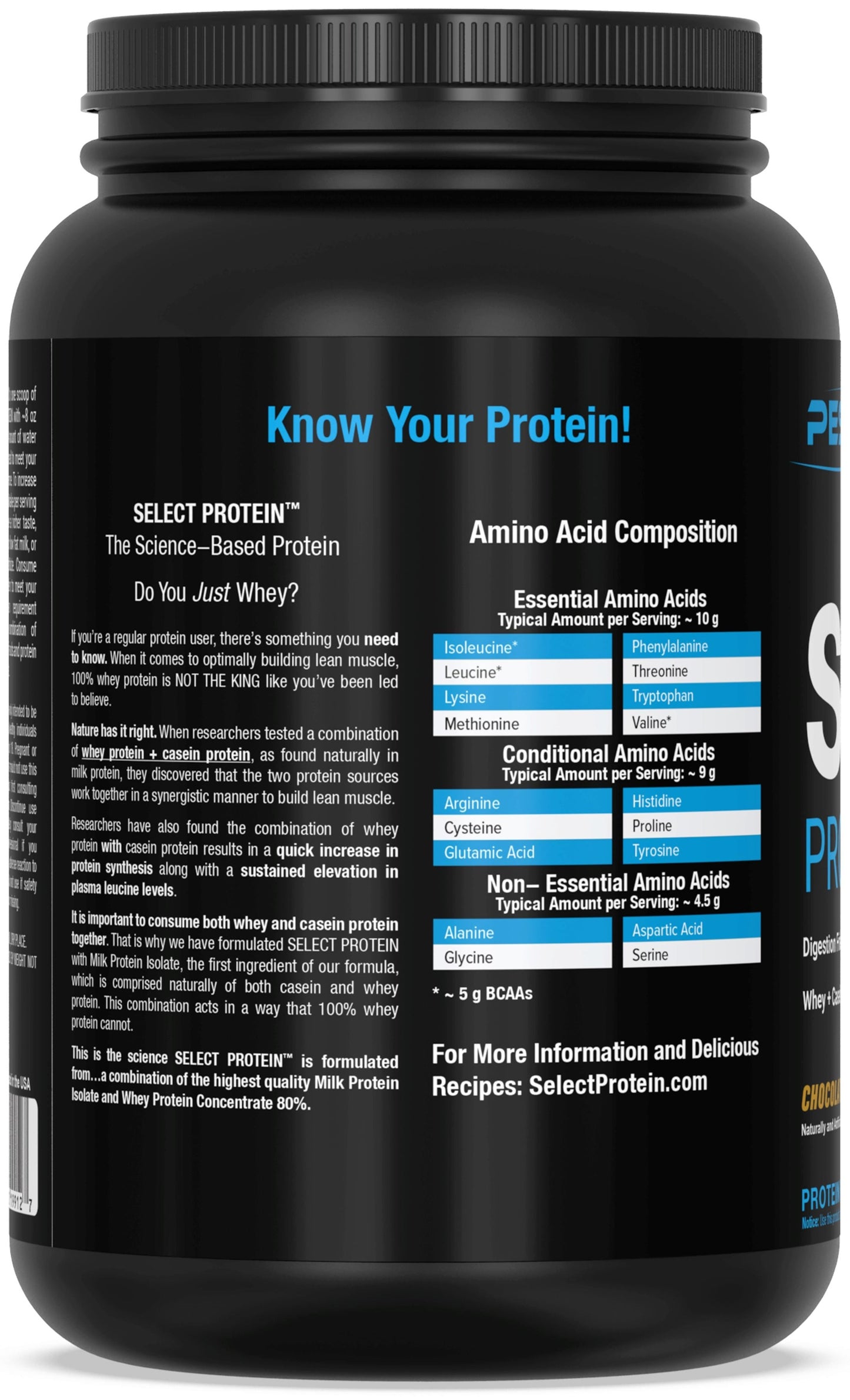
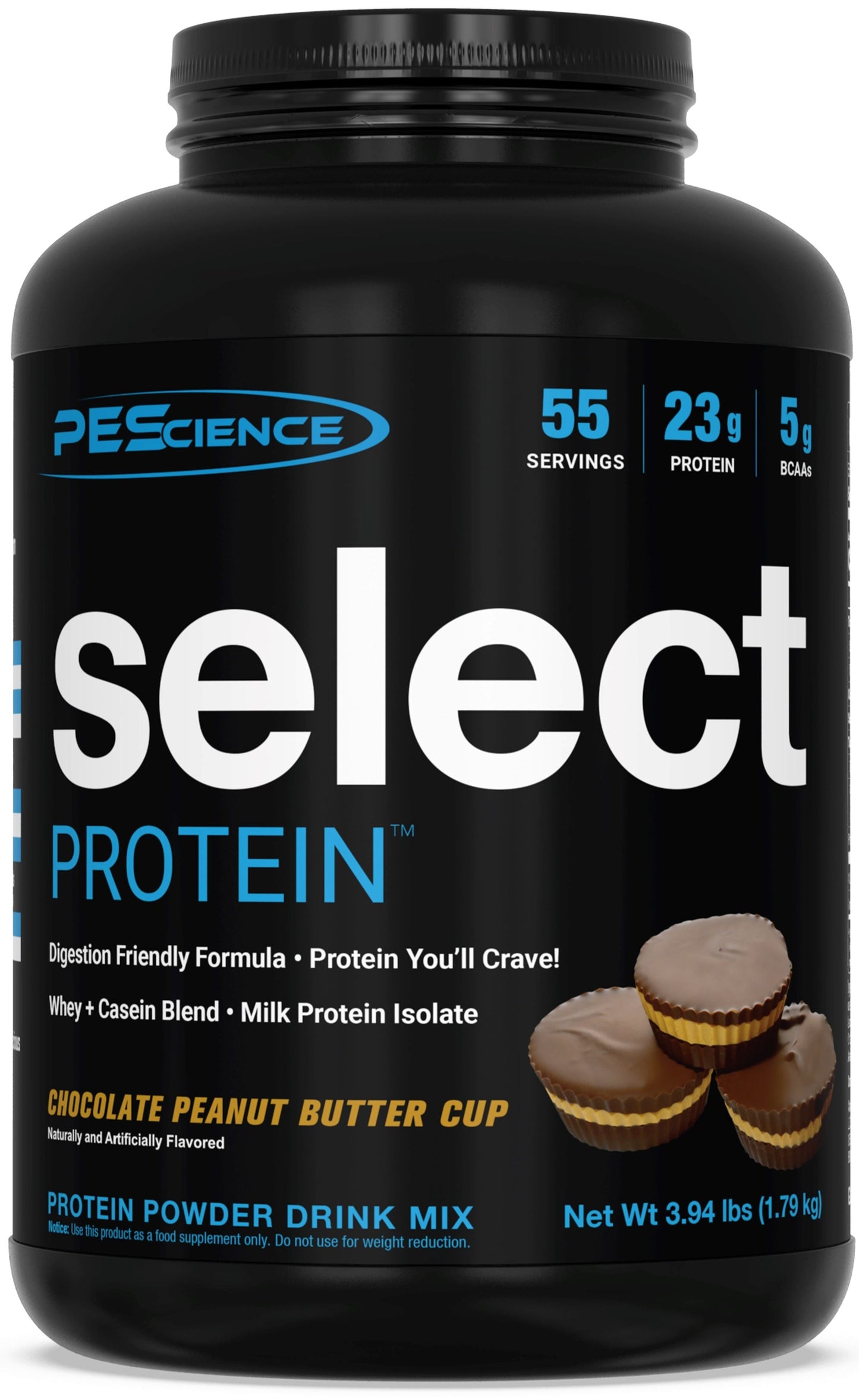
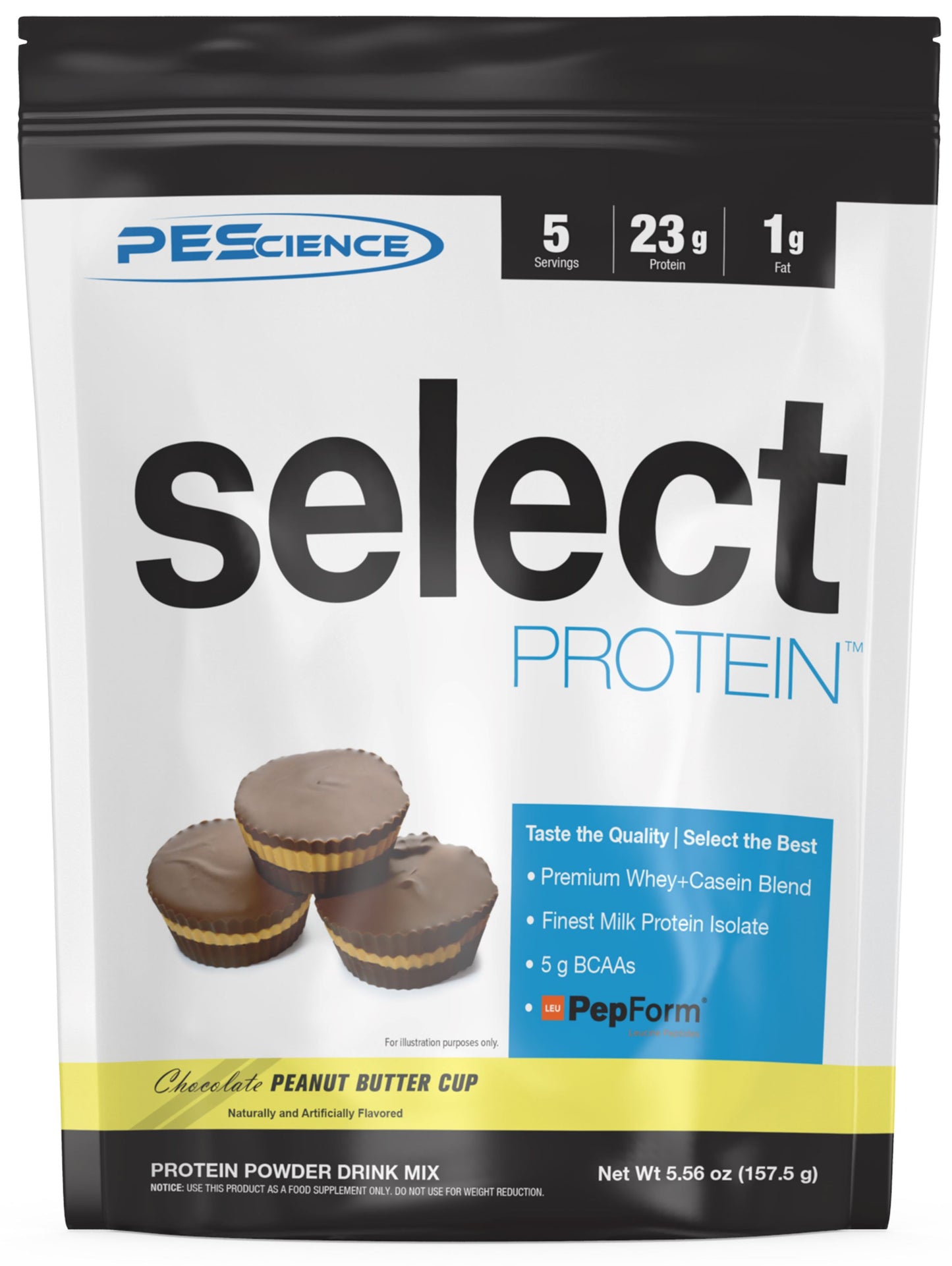
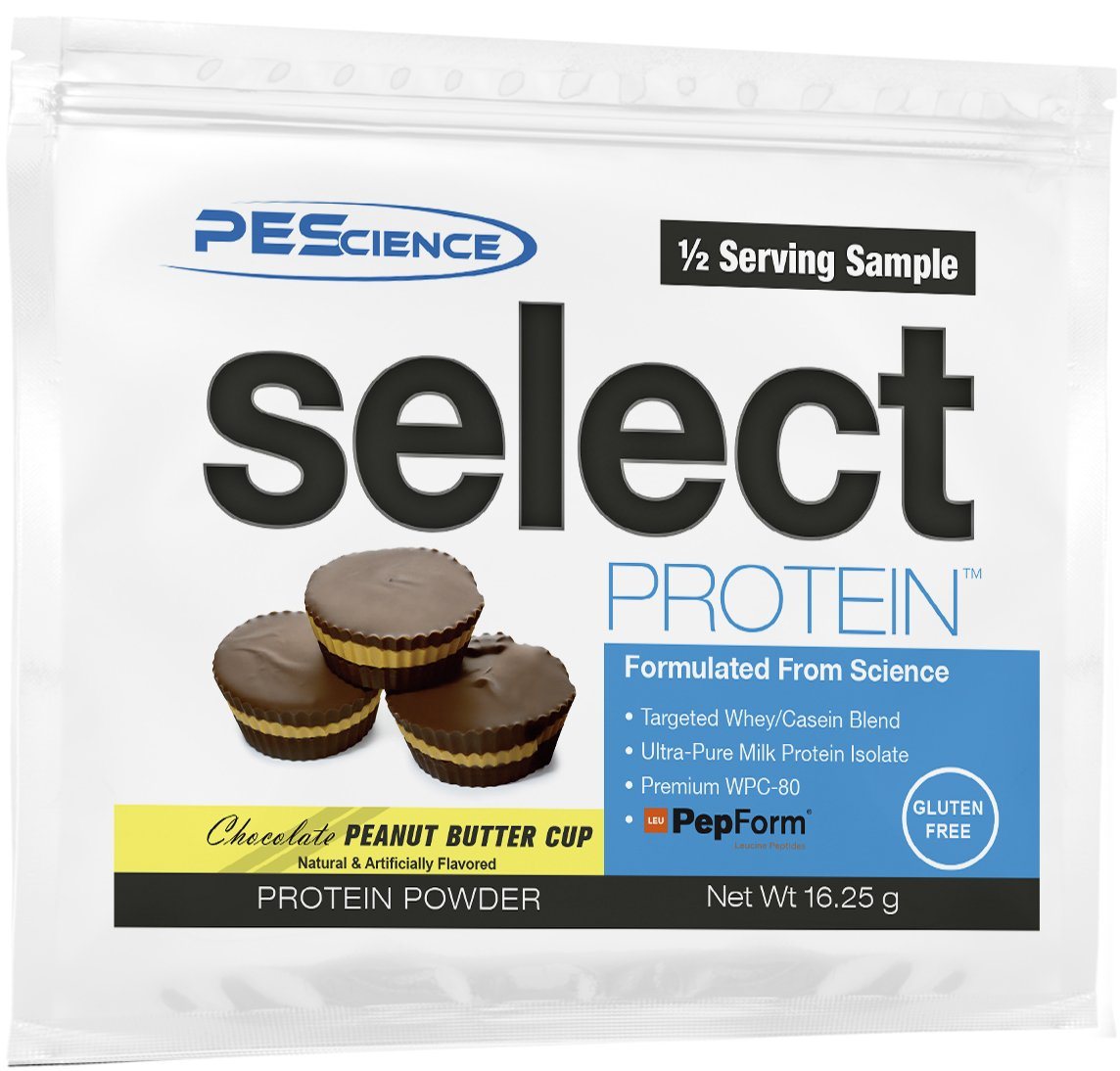
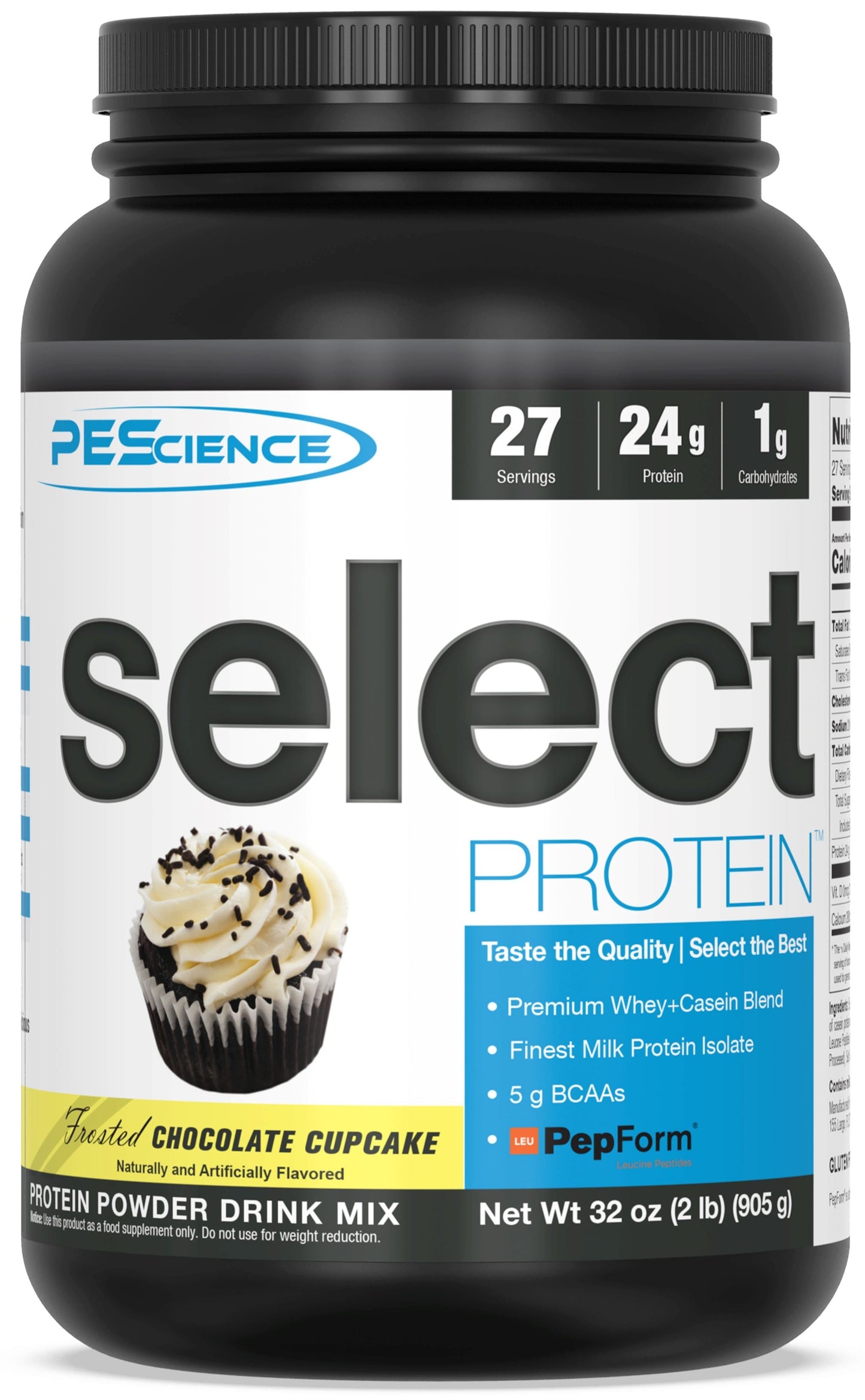
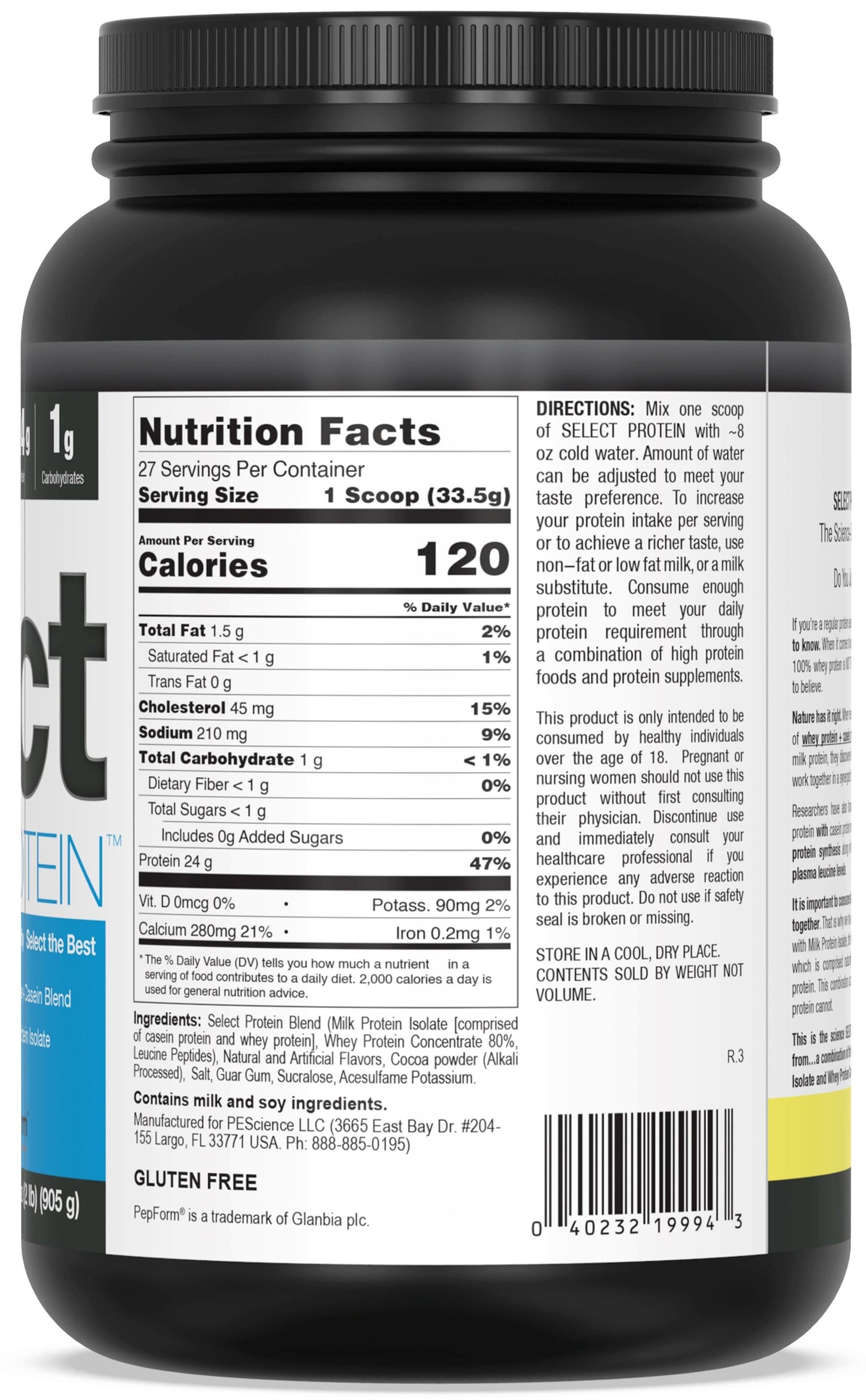
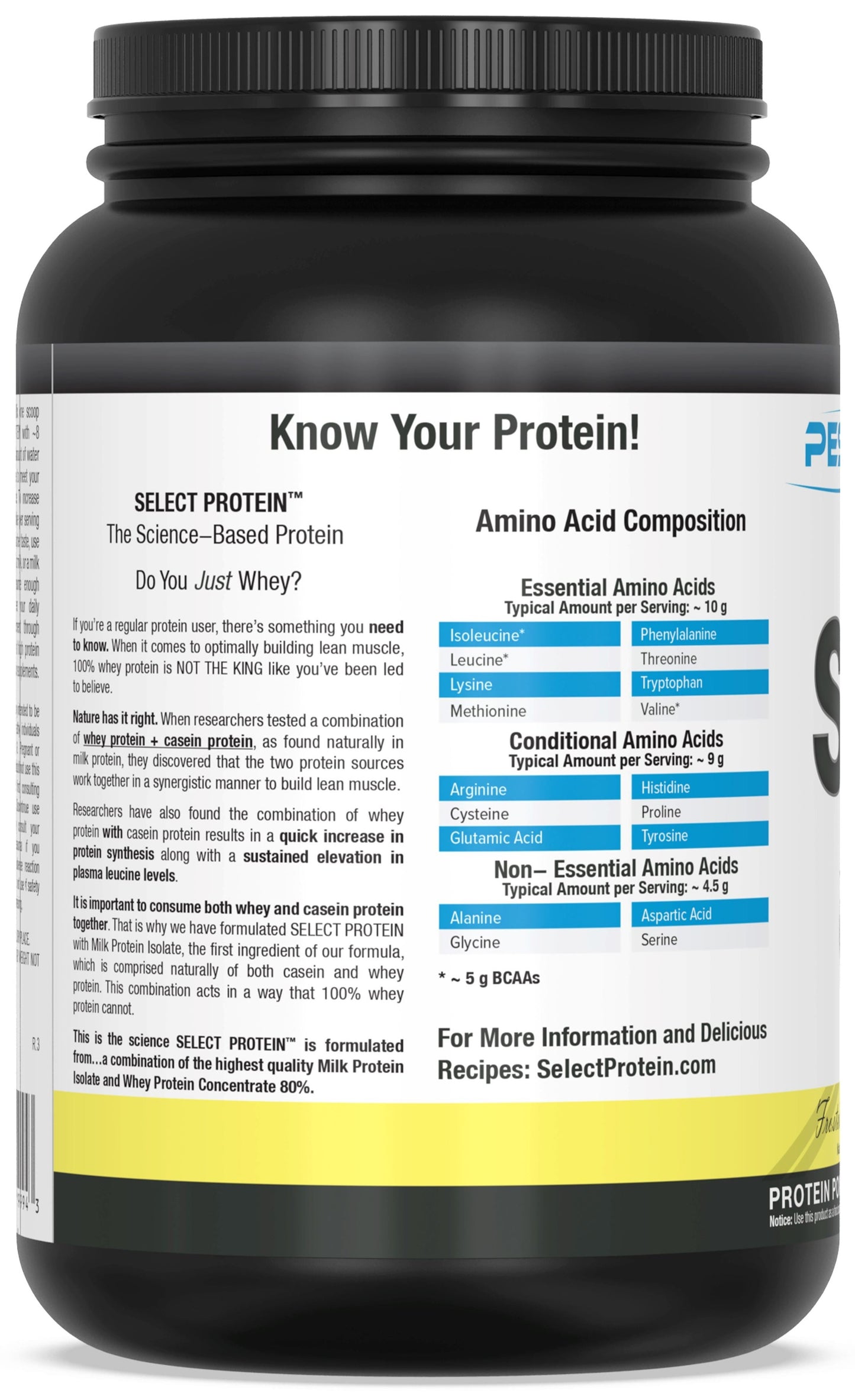
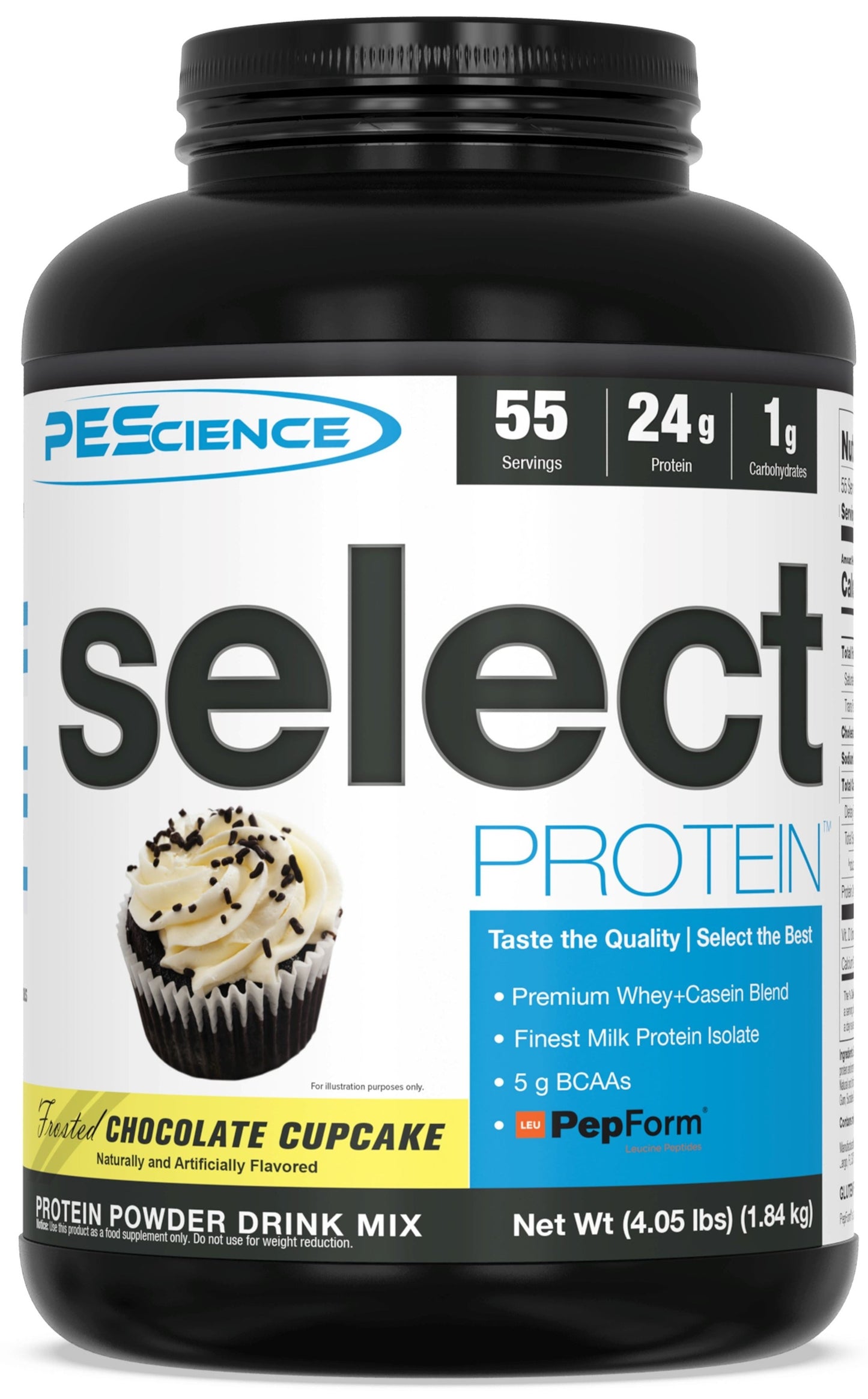
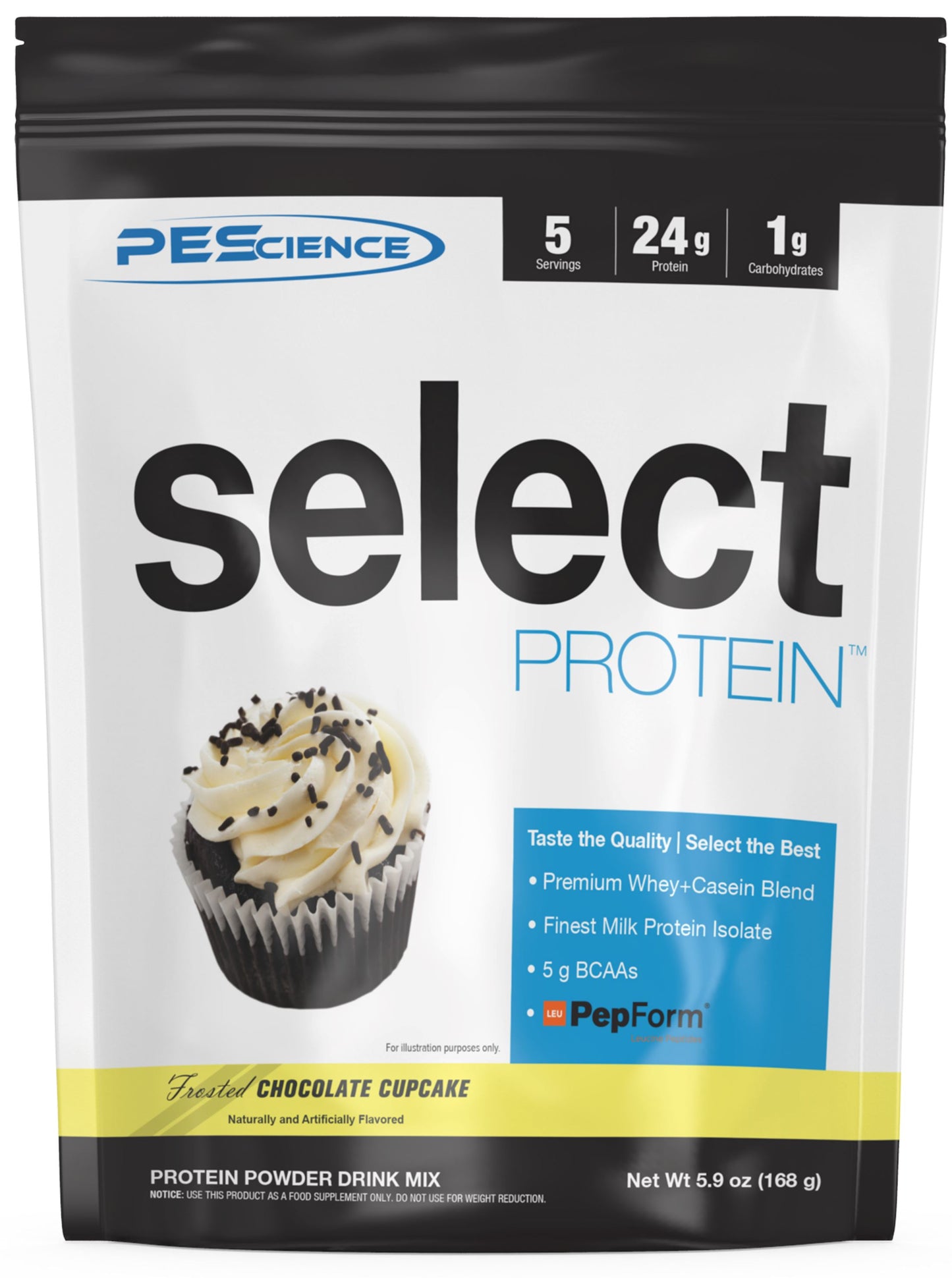
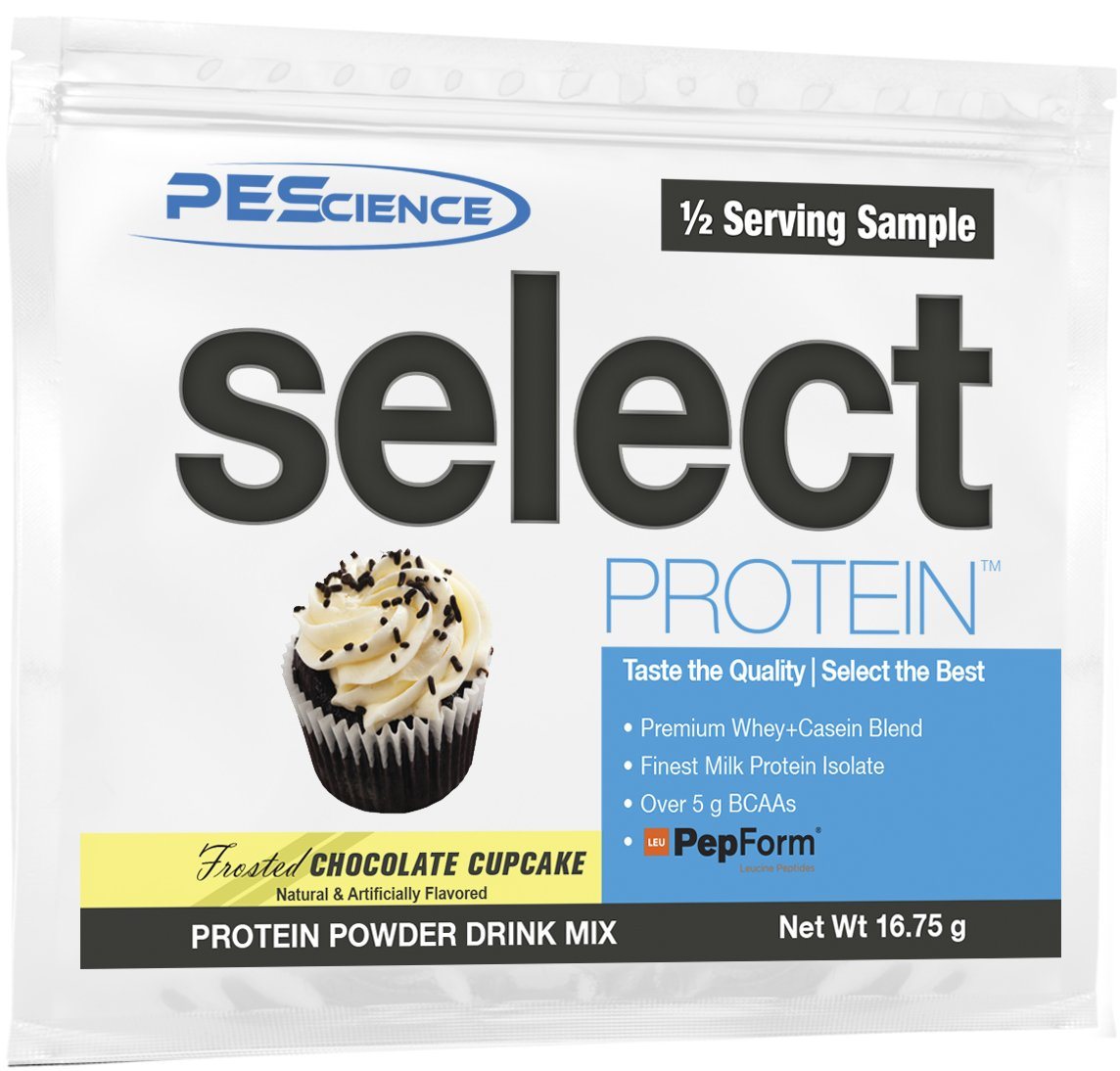
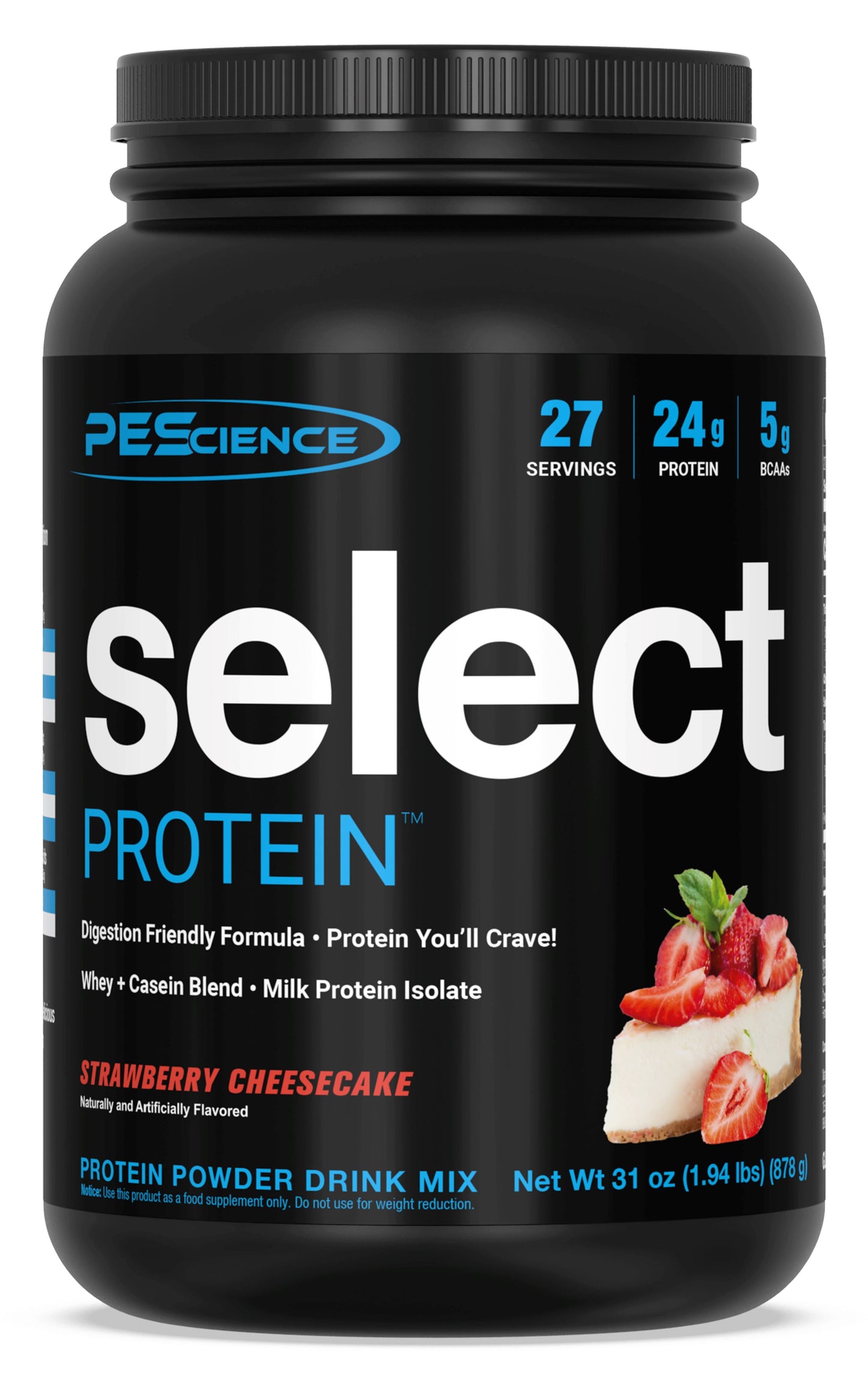
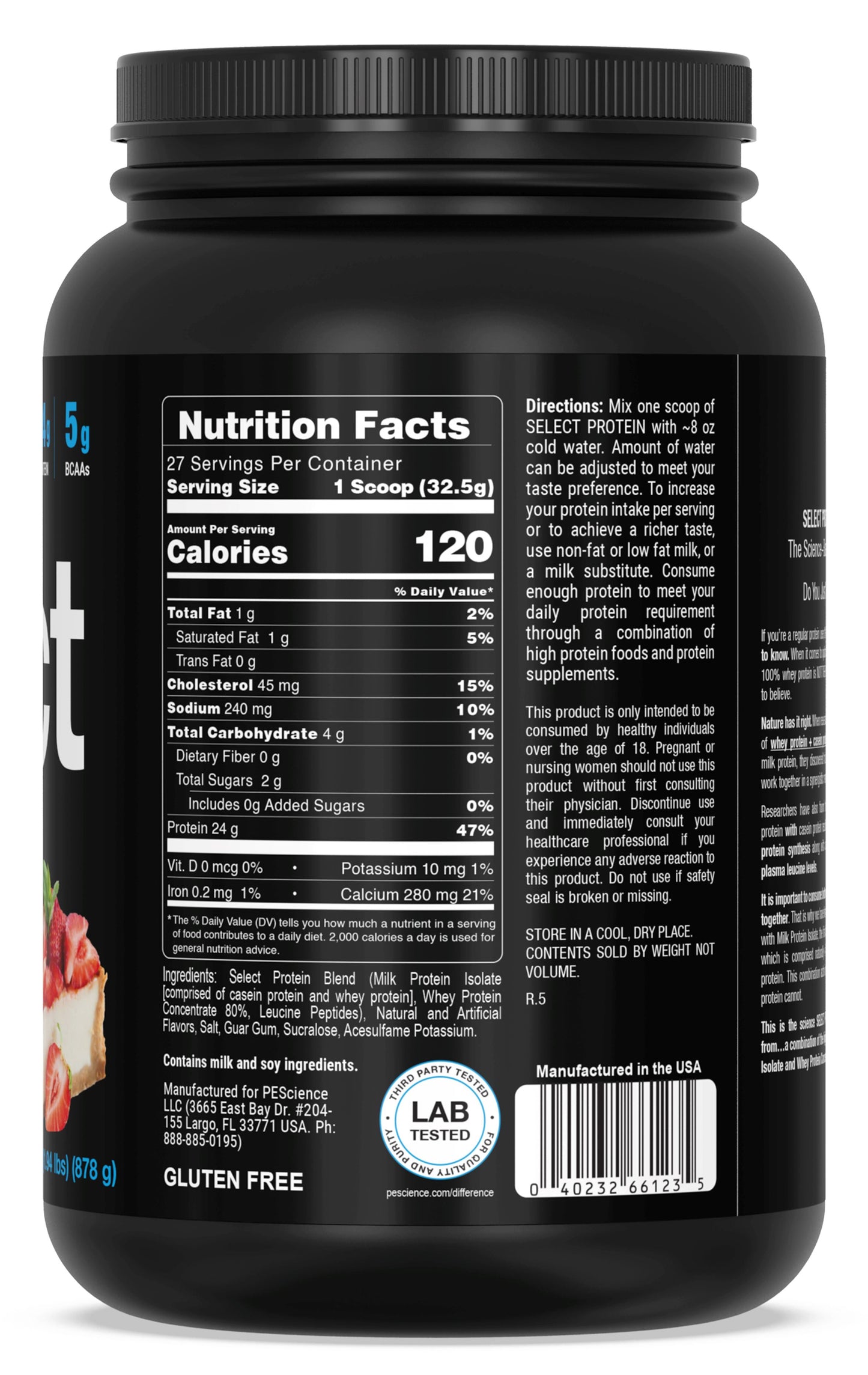
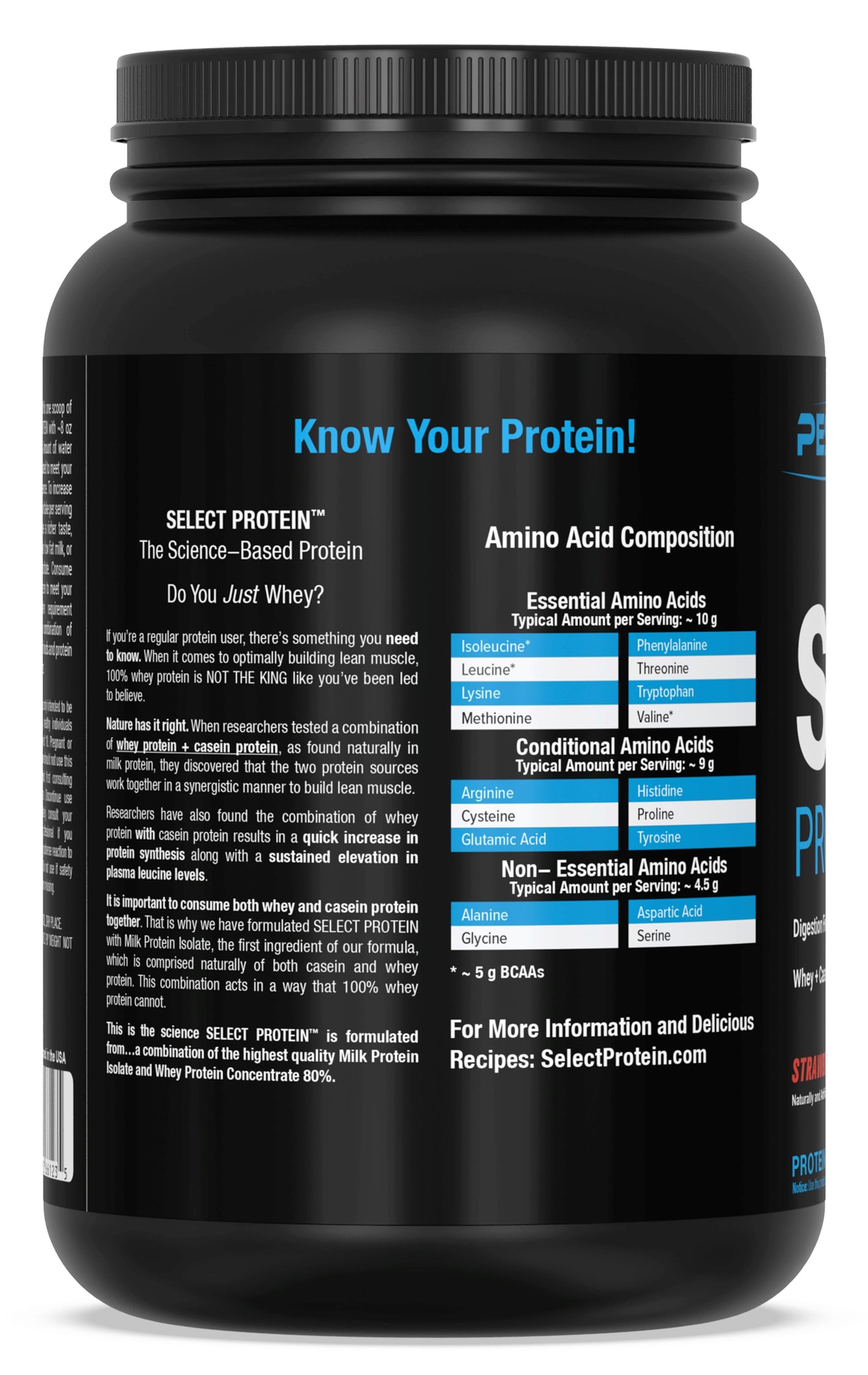
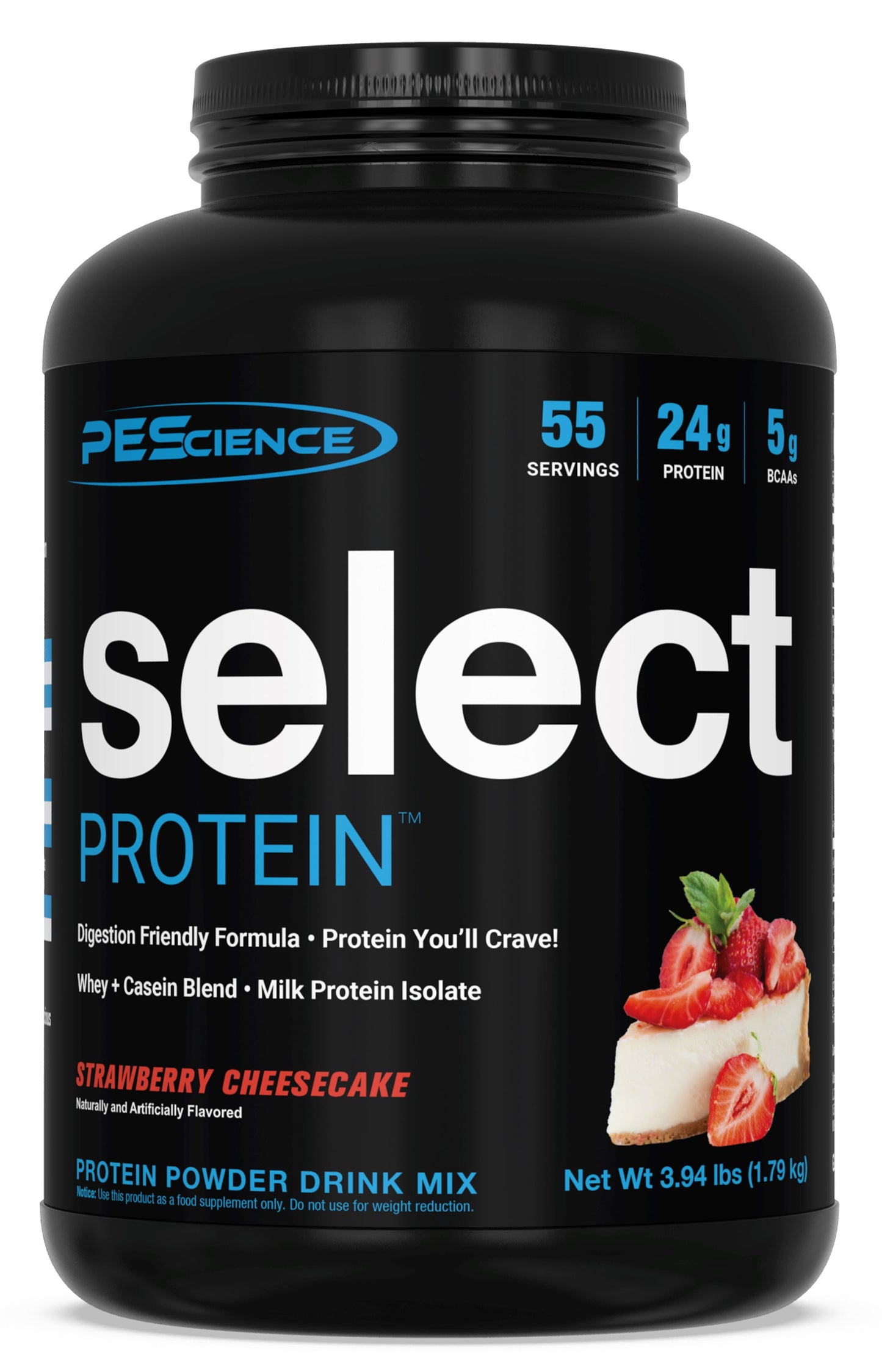
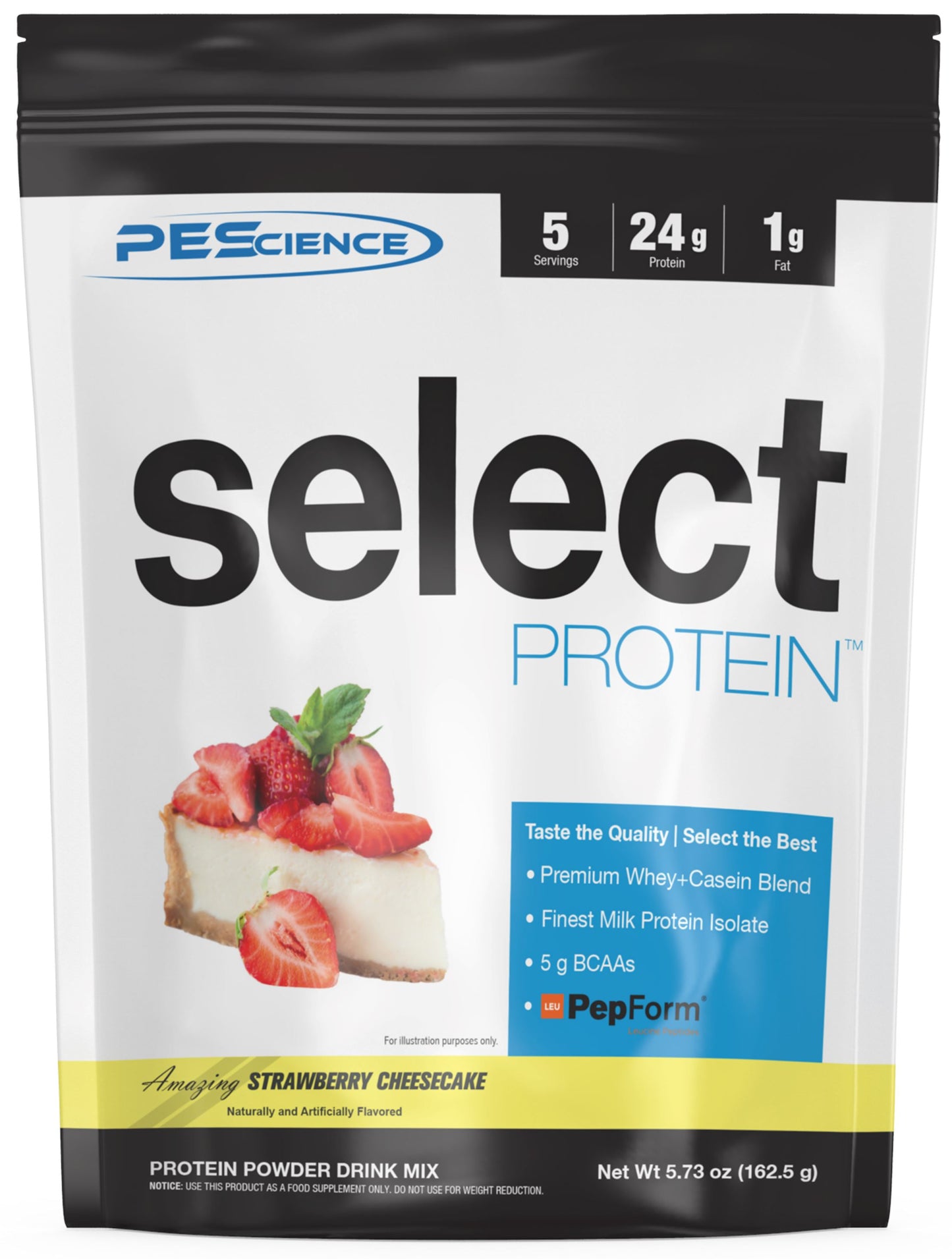
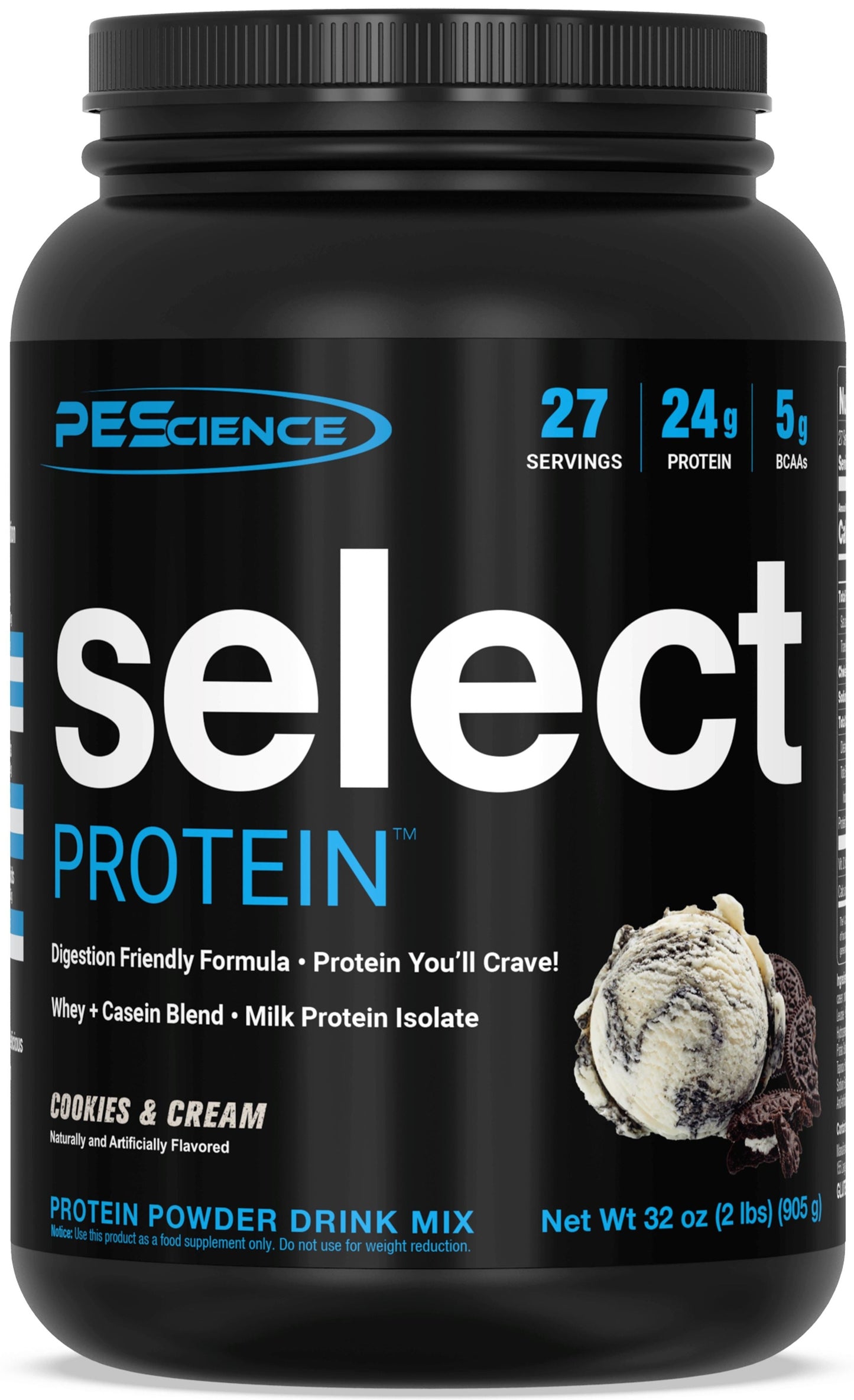
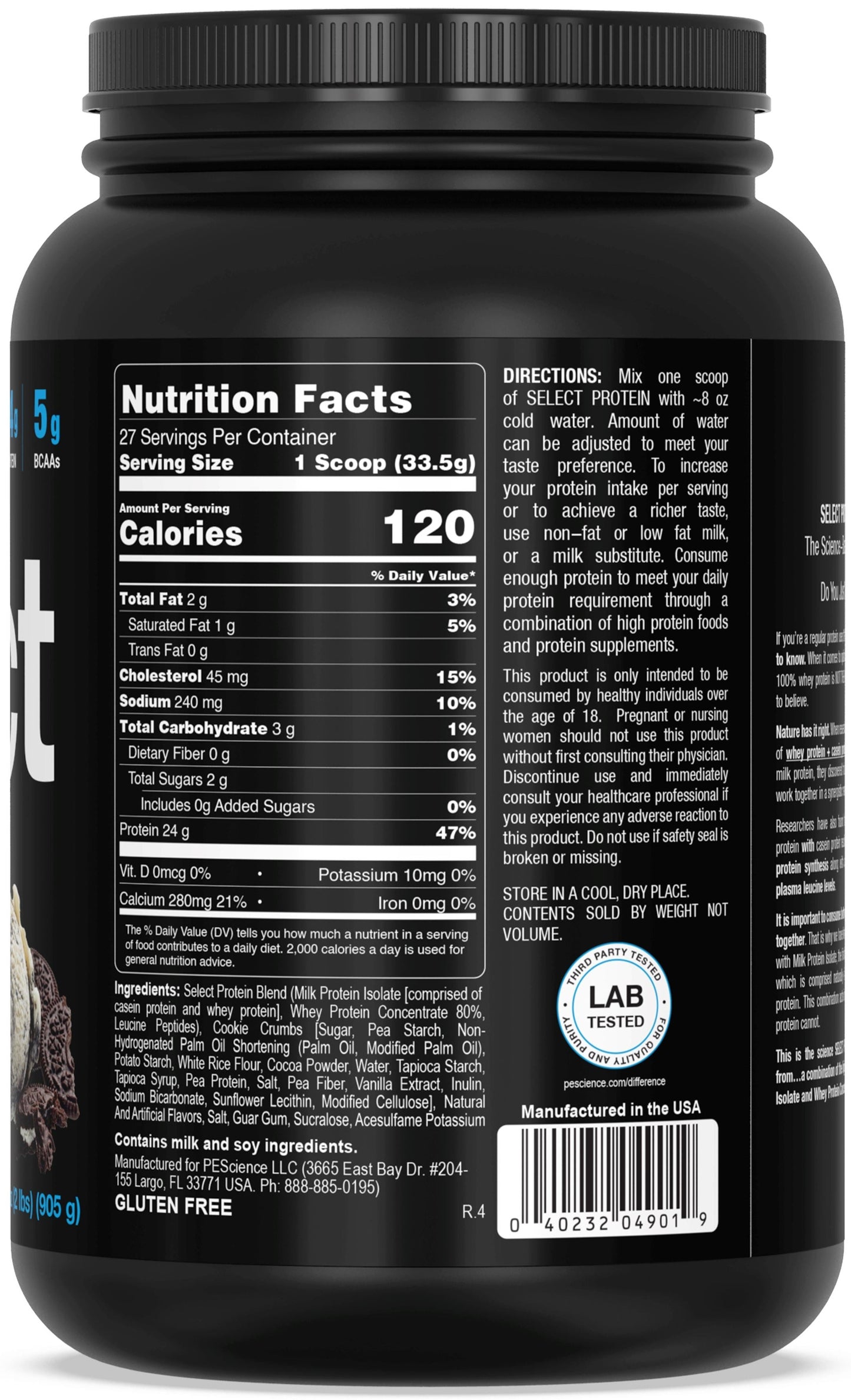
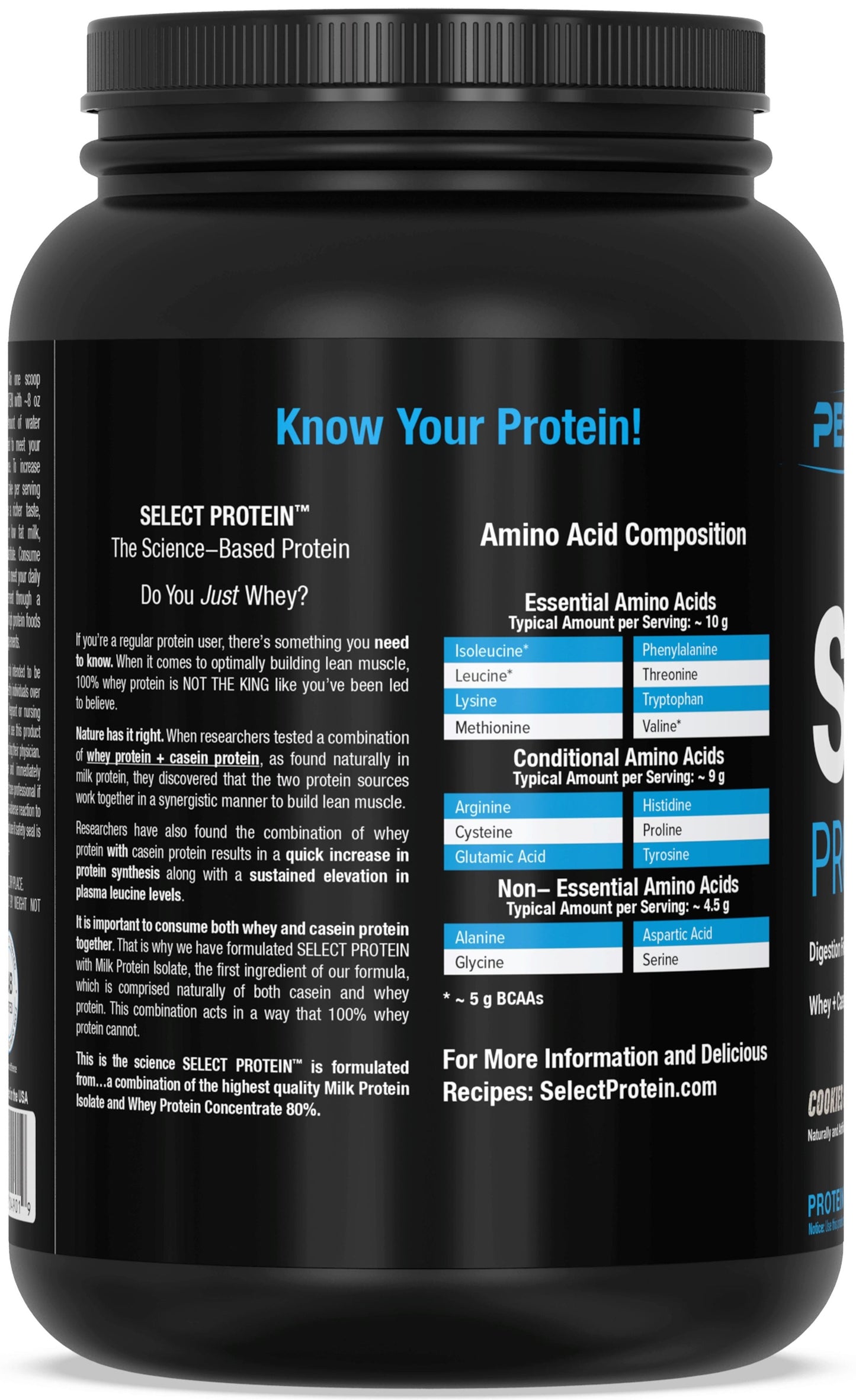
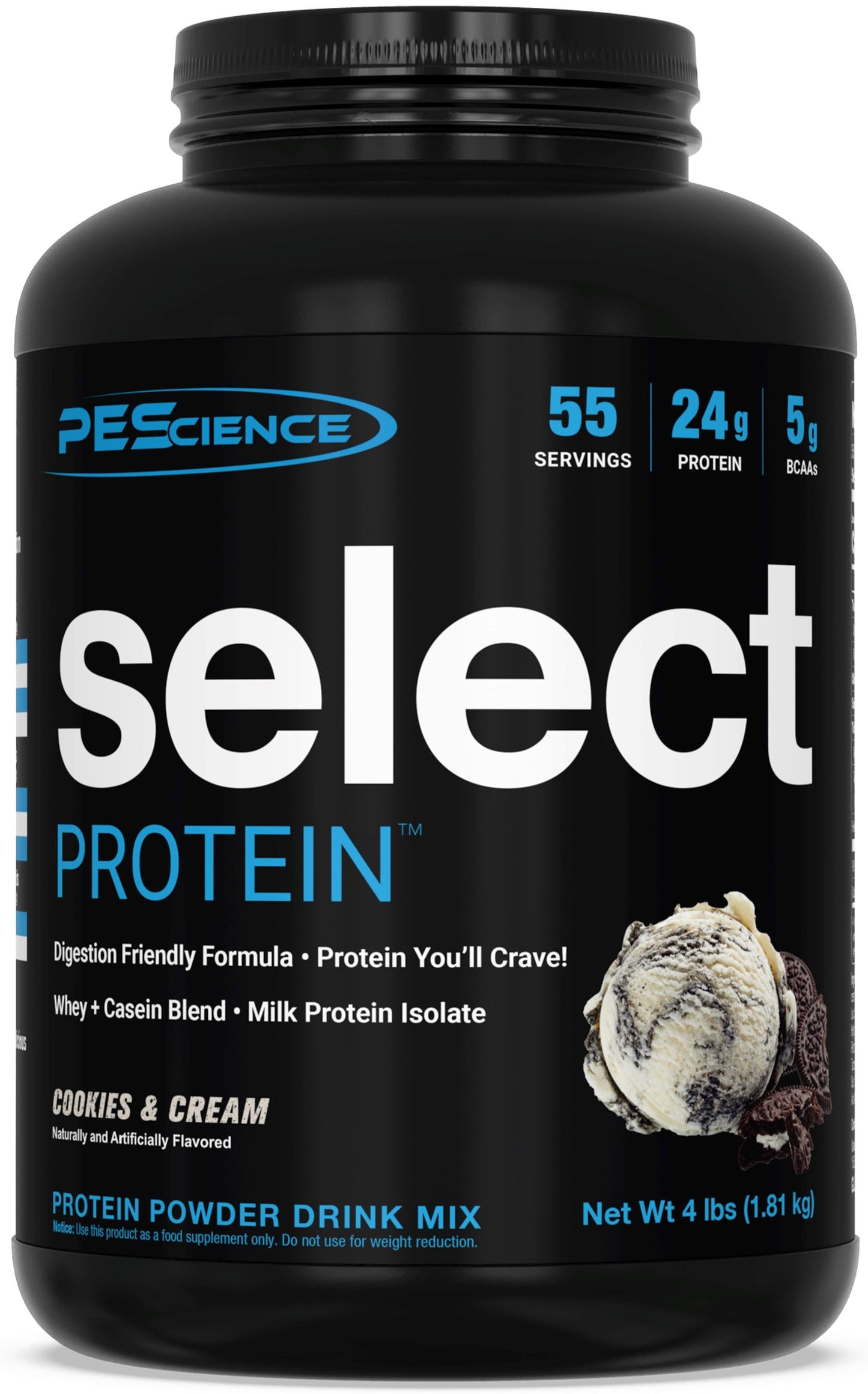
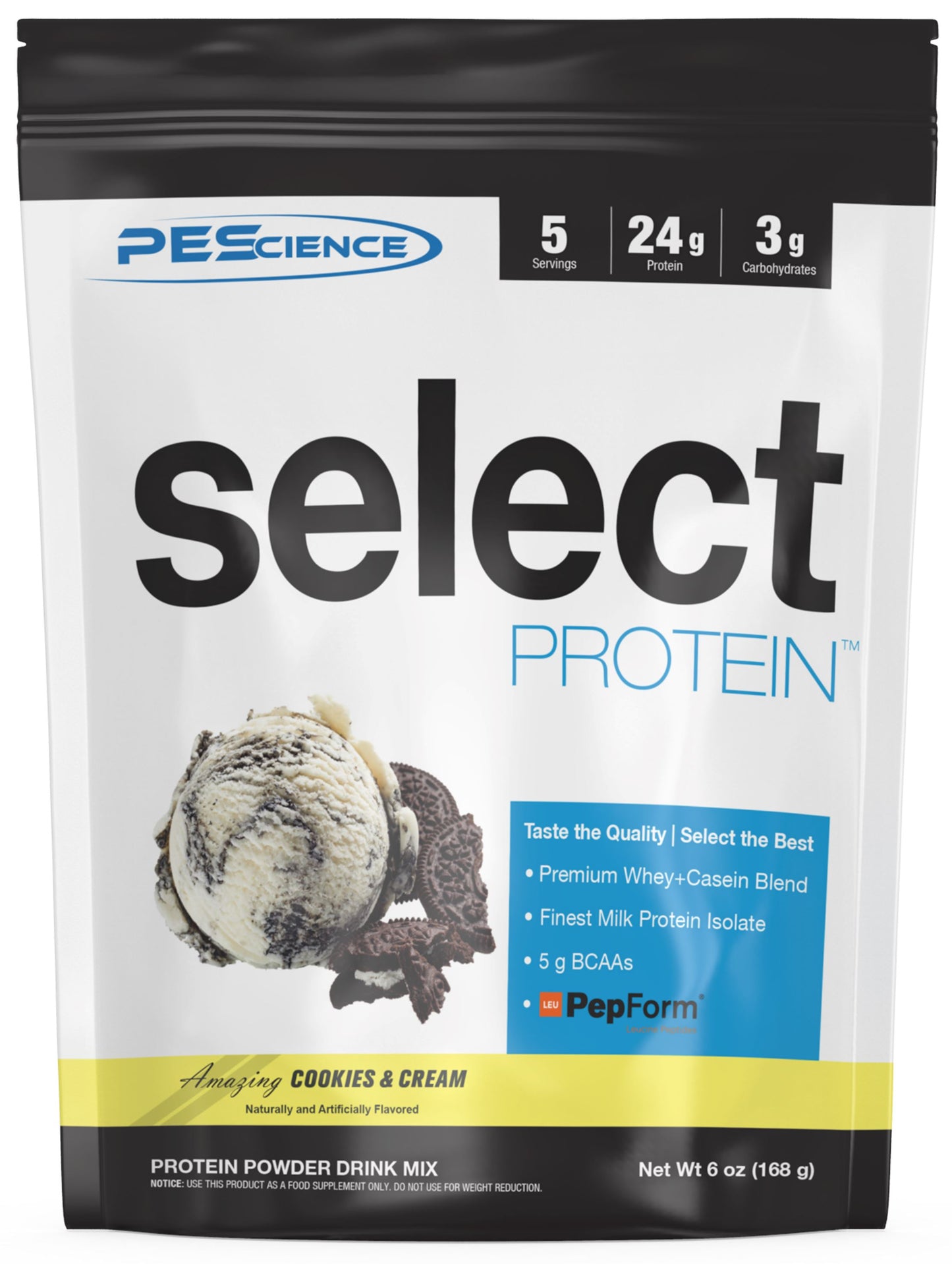
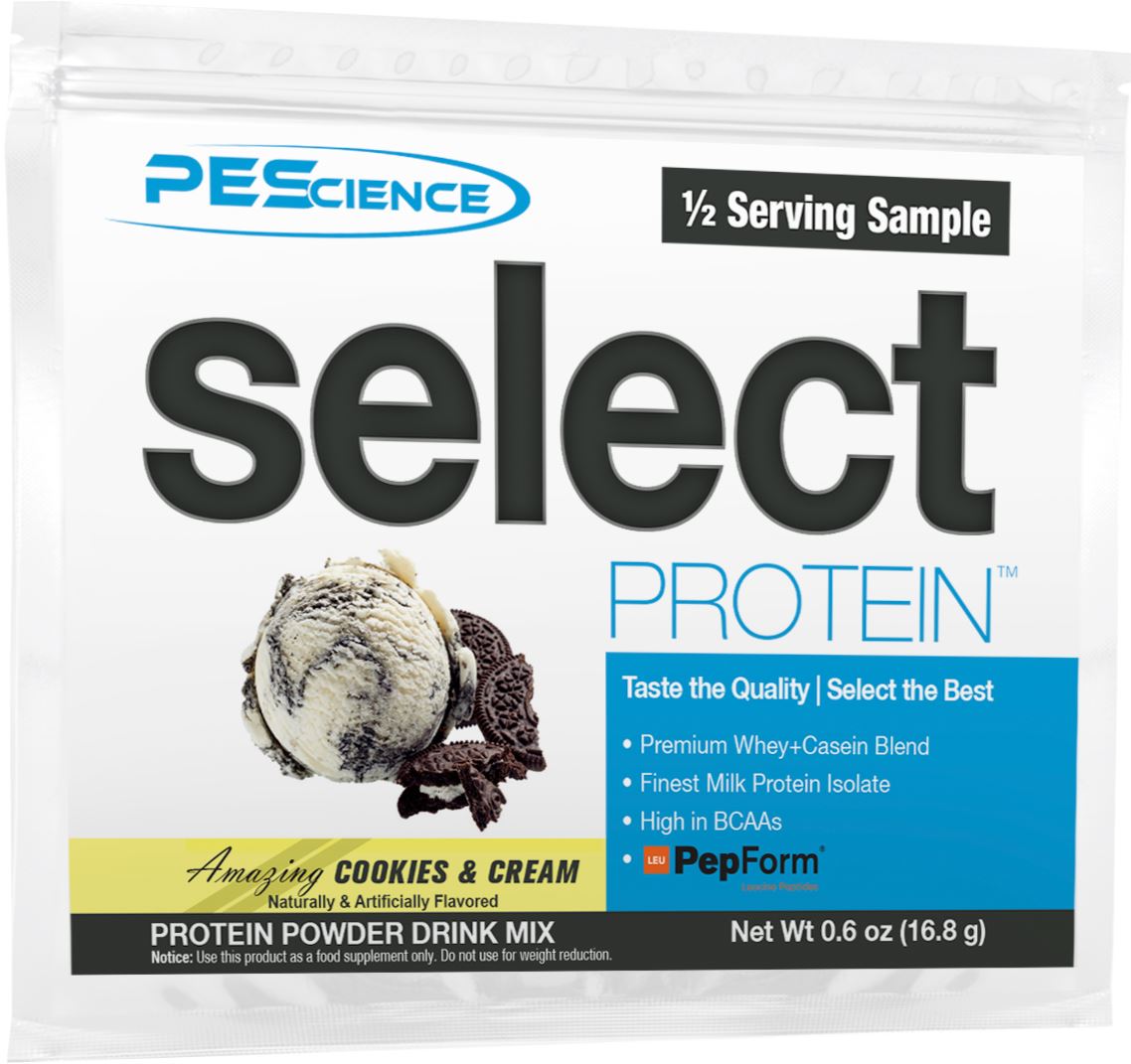
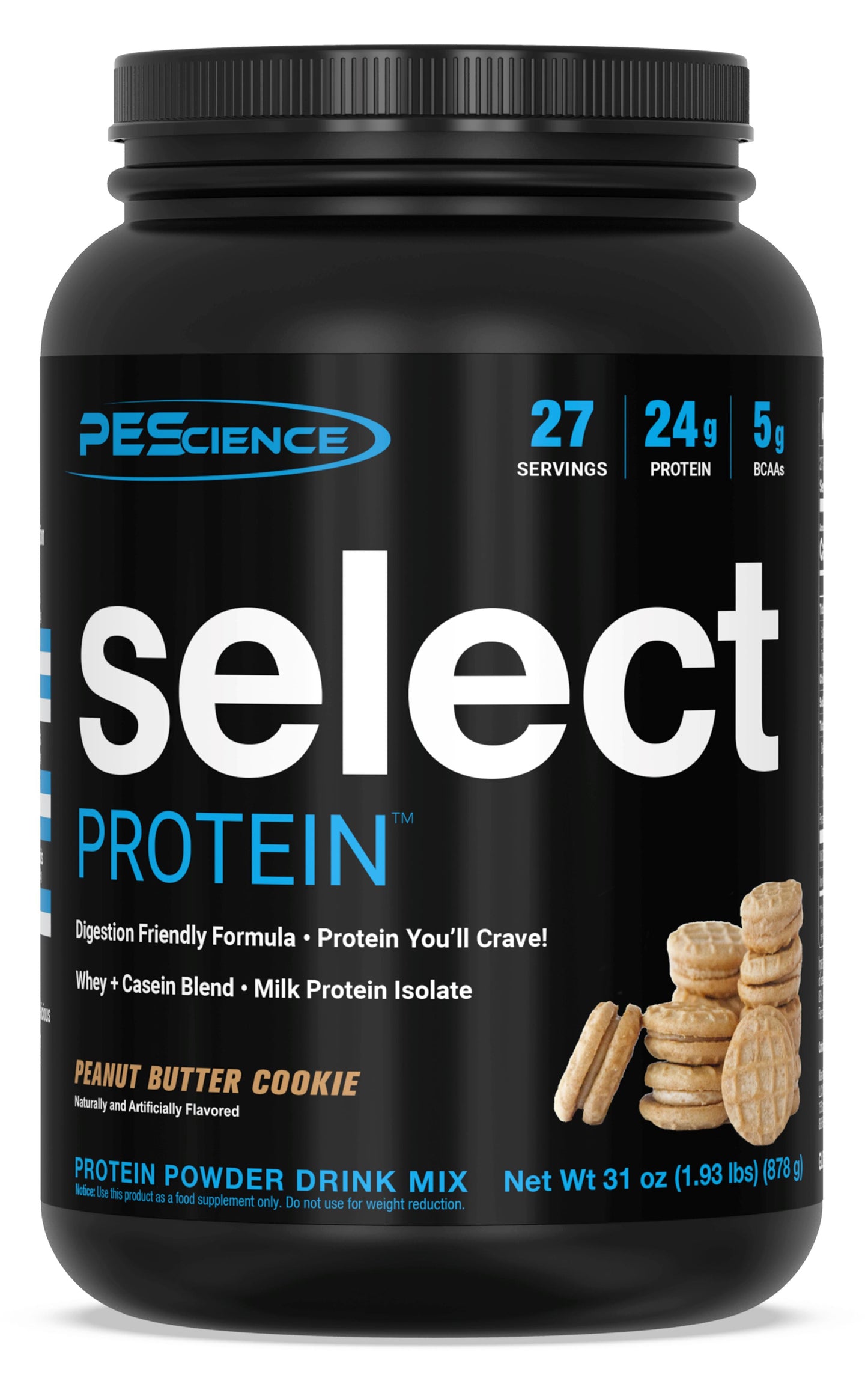
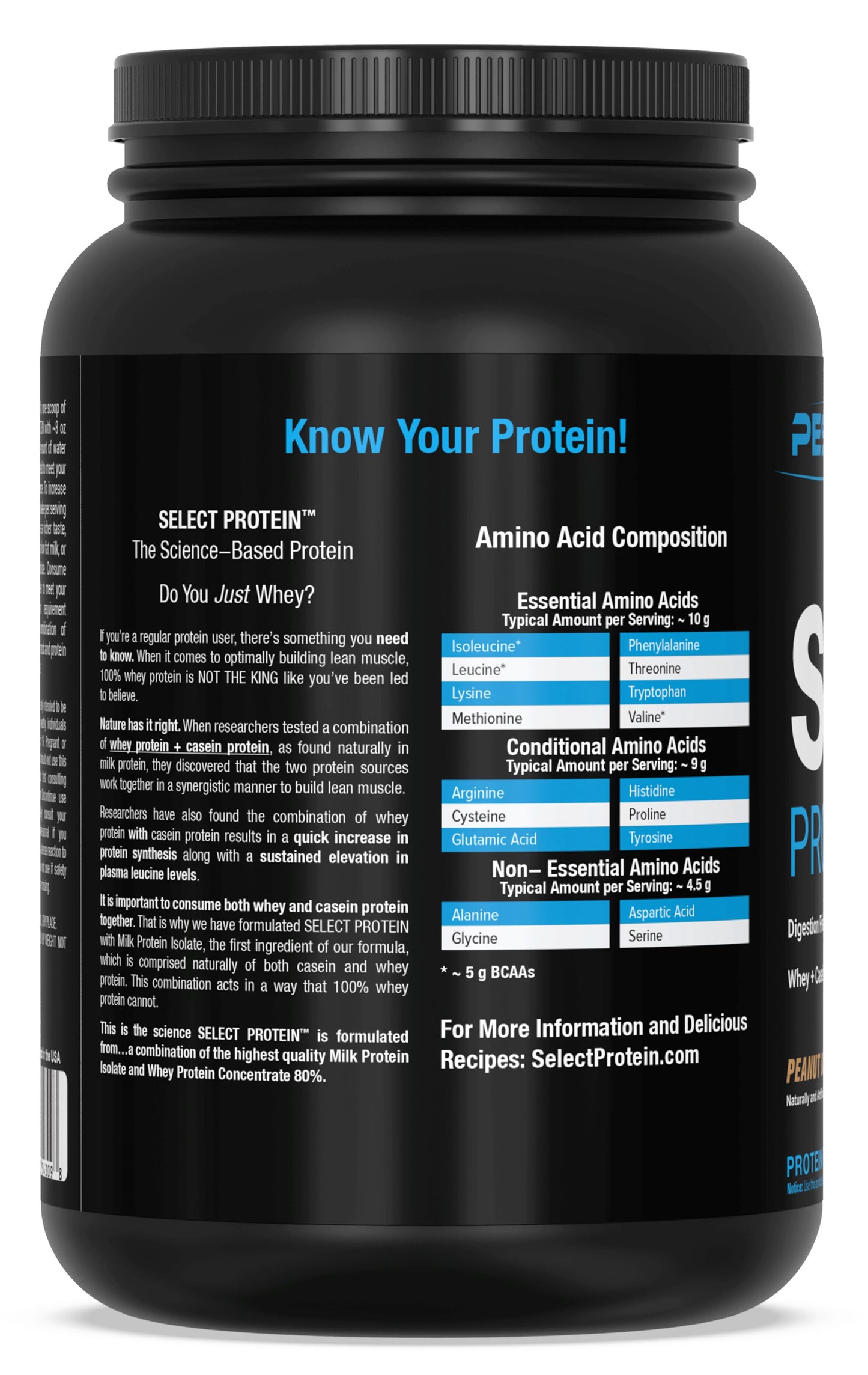
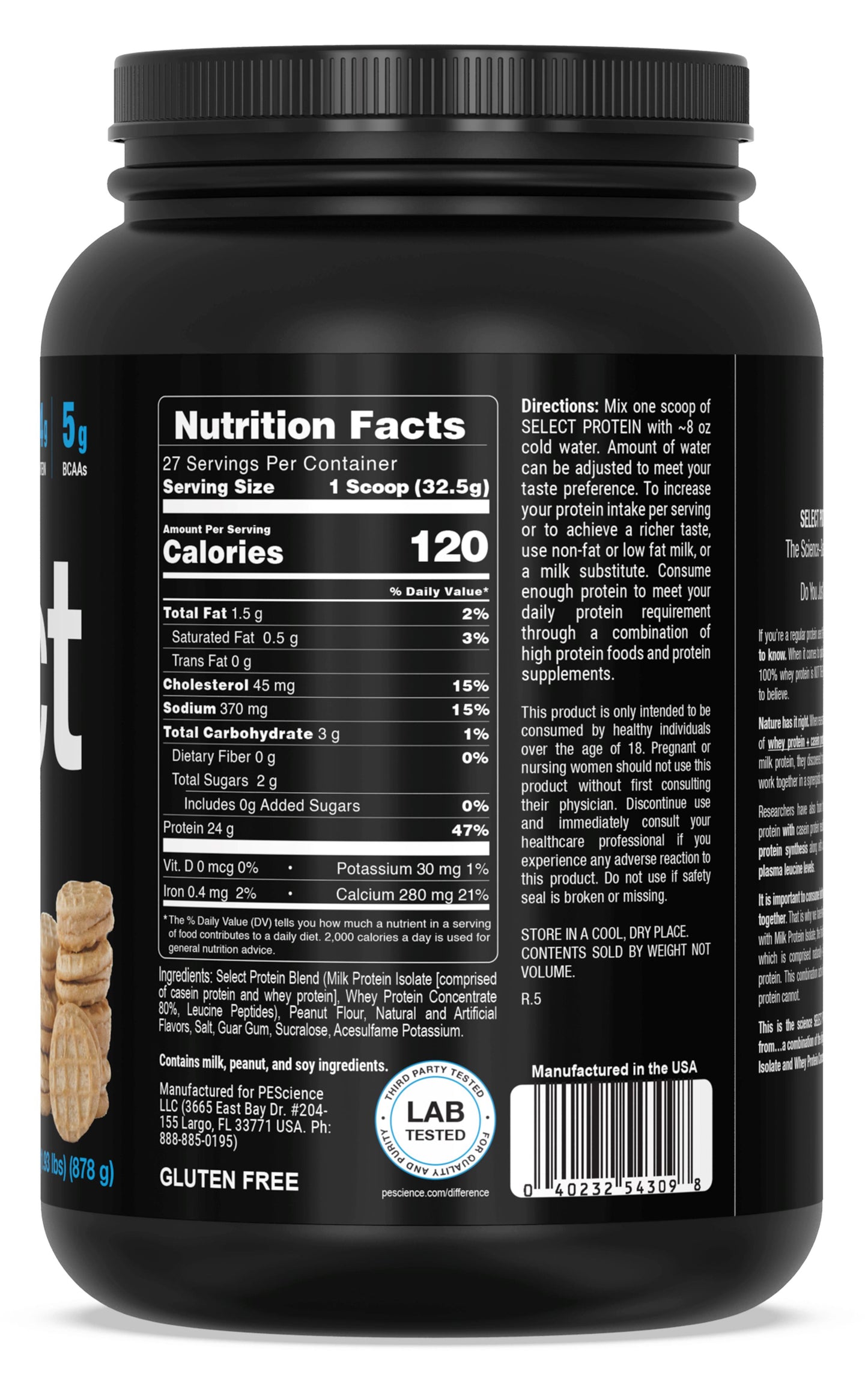
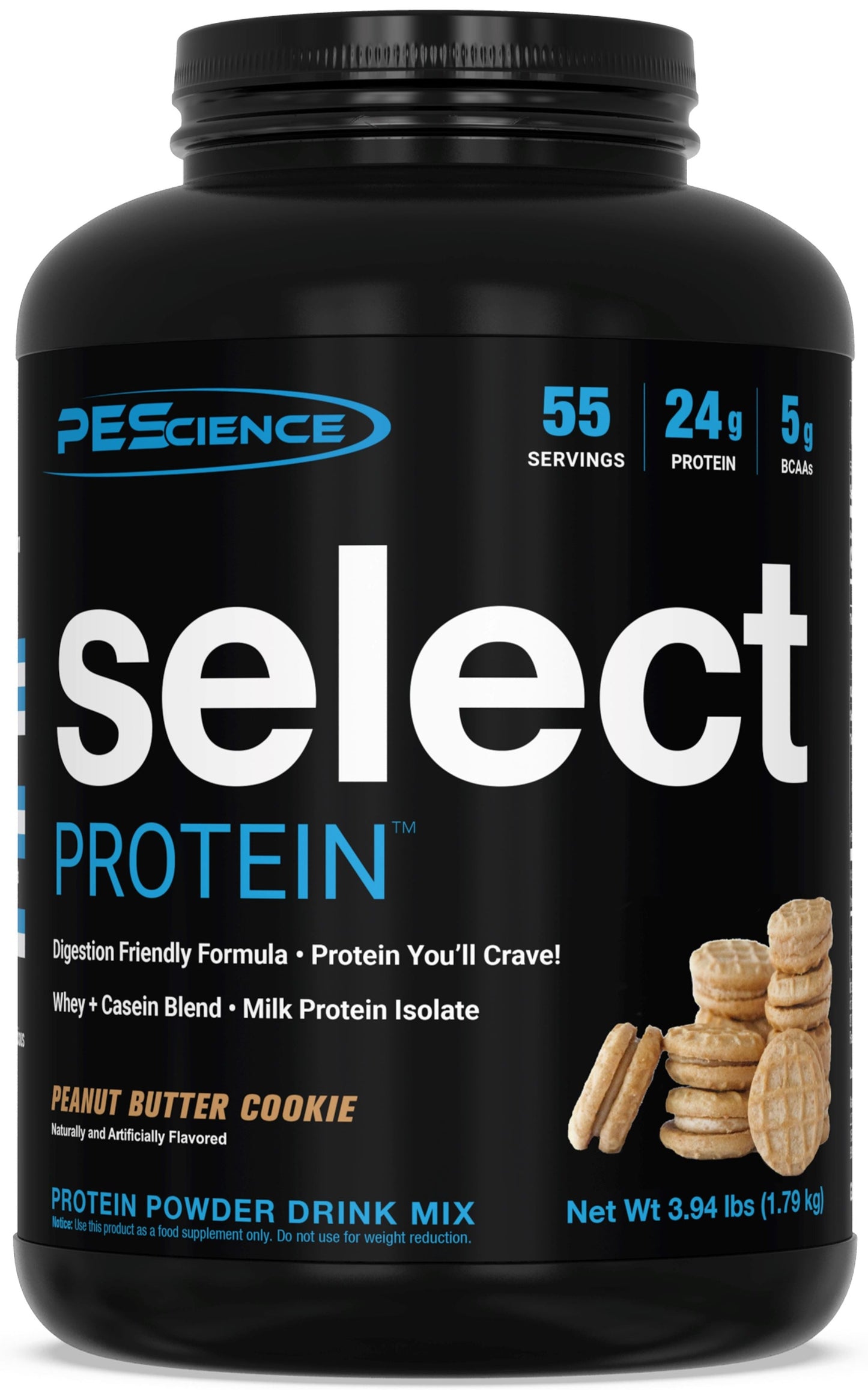
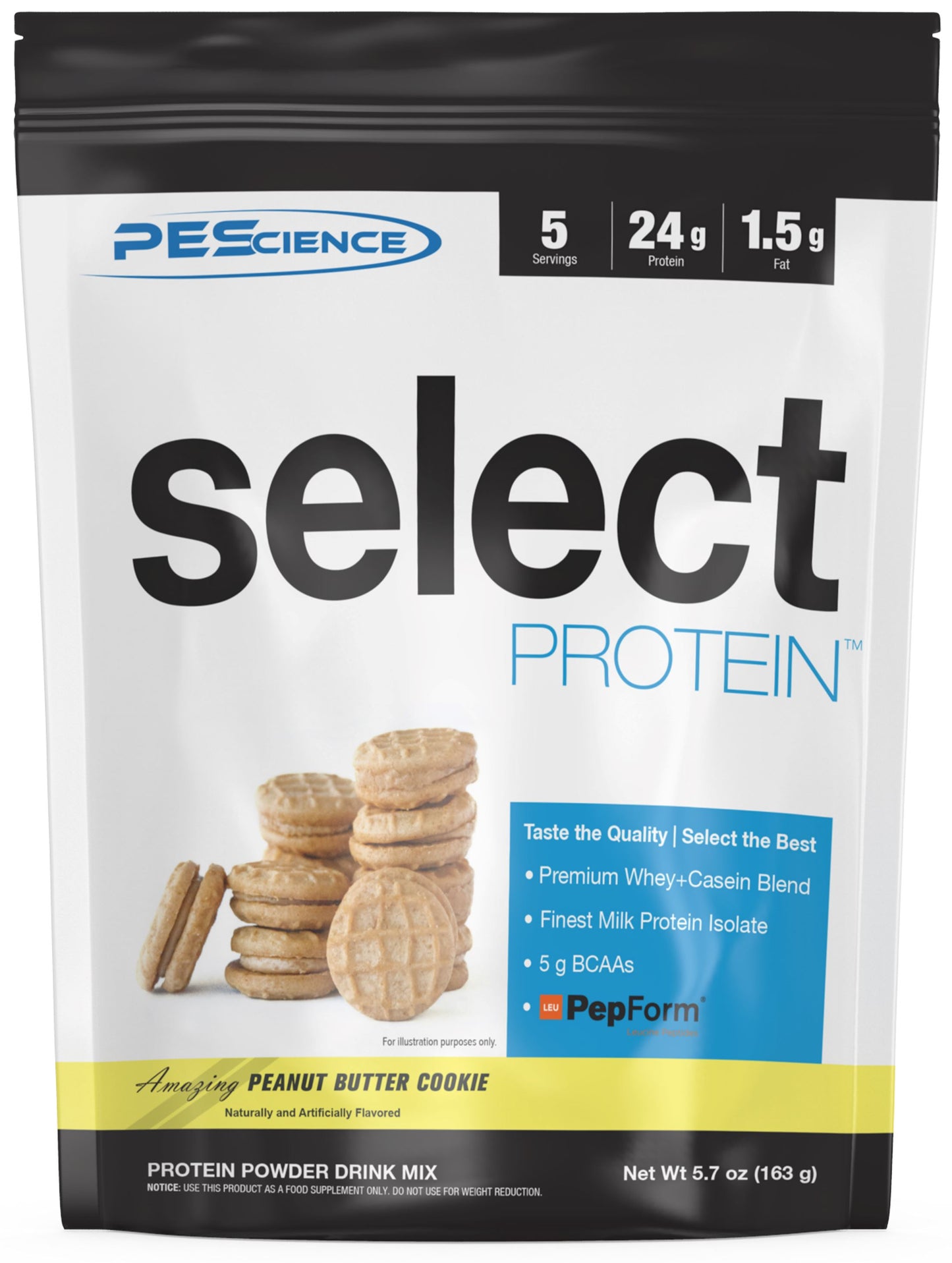
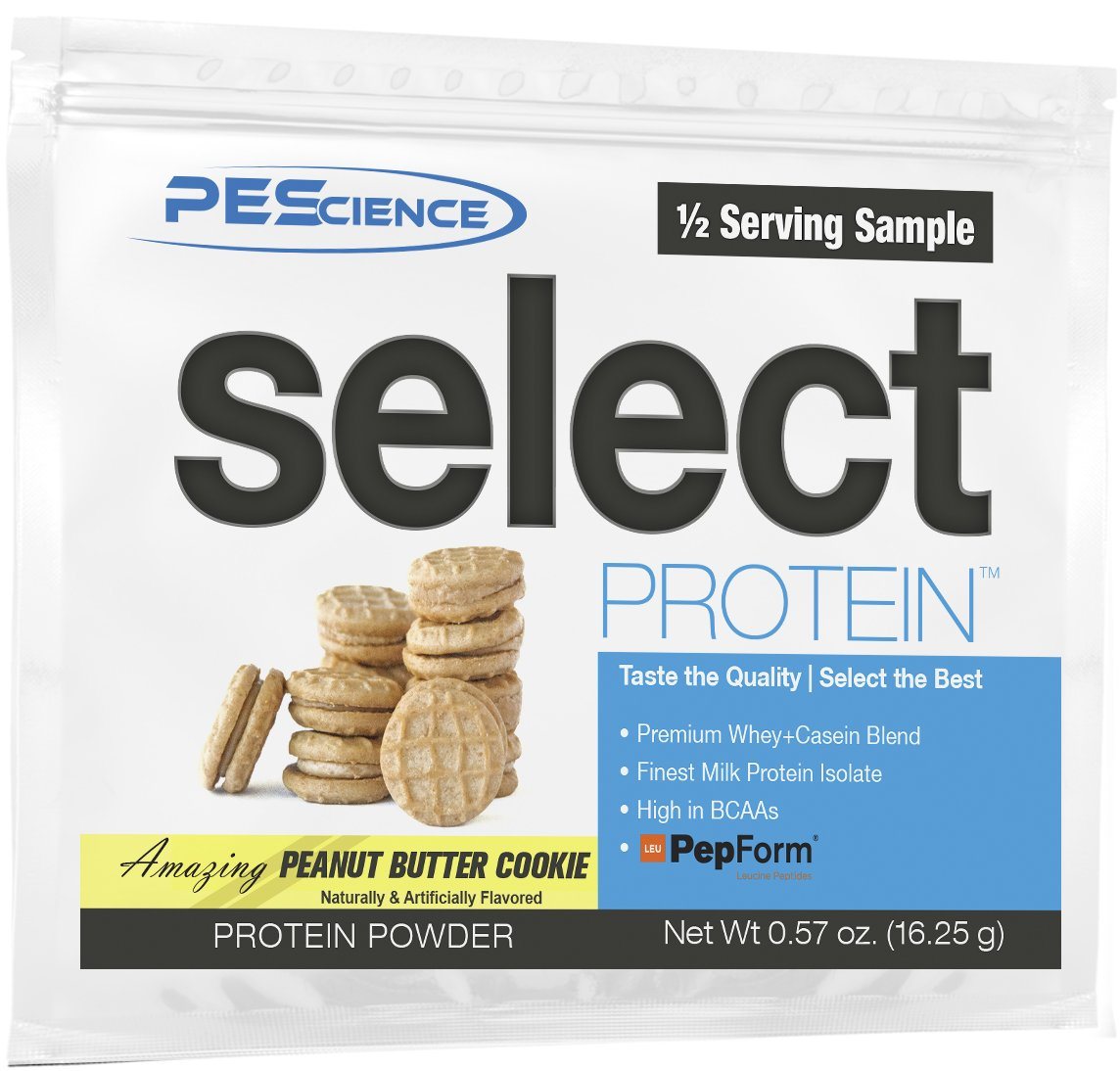
Why Select?
-

Masters of Flavor
Every flavor of Select tastes just like its name. Cake Pop? Not a basic vanilla protein you dread. It's a perfect blend of yellow cake and vanilla icing flavoring that you'll crave. Whether you use Select as a protein shake or for baking, our flavors are unmatched.
-

Digestion Friendly
Unlike most whey proteins you may have tried, our #1 ingredient is milk protein isolate, a very digestion friendly source. In 1 serving of Select there is only ~0.5g of lactose. For reference, a cup of milk contains 13g.
-

Whey + Casein
Research continues to show that a whey + casein blend is superior to 100% whey for stimulating muscle protein synthesis. We provide both whey and casein, from milk protein isolate and whey protein concentrate, so you get the most out of every shake you drink.
-

Third-Party Tested
All of our finished products and ingredients are third-party tested for purity and potency. This practice has been implemented at our company since its foundation in 2010, and is just one of many quality control measures we take every day.
Collapsible content
Nutrition Facts
Quality & Purity Testing
All of our raw materials are tested for purity prior to being used in our manufacturing. After manufacturing is complete, another round third-party testing occurs on the finished product before it is released for sale.
Ask a Question
Technical Product Writeup
Better together: Whey + Casein.
Of the various types of protein, whey and casein are the most common — and popular.
While they both come from milk, they differ in many ways.
This article explores the differences between whey and casein protein, and the benefits of consuming them together for muscle growth and recovery.
The primary milk proteins
Casein and whey are the major proteins of cow’s milk, making up 80% and 20% of milk protein, respectively (1).
Both provide all nine of the essential amino acids, which your body can easily digest, absorb, and use to make other proteins.
They also have higher levels of the branched-chain amino acids (BCAAs) — isoleucine, leucine, and valine — than most other food sources (1).
Diets rich in BCAAs positively affect metabolic health, especially blood sugar and blood pressure, body weight, and muscle protein synthesis — the process of producing new muscle protein (1).
Whey is produced during the cheesemaking process in which enzymes or heat are used to separate it from the curdled milk or casein.
The whey can then be concentrated, purified, and spray-dried into a powder.
The separated curdled milk is usually made into cheese but can also be turned into a casein powder.
Whey and casein forms
Whey undergoes special processing that concentrates or isolates the protein.
Whey protein concentrate provides at least 25% protein, but most protein products provide 80%.
An isolate undergoes even more processing to provide at least 90% protein.
Because whey isolate provides a higher percentage of protein than concentrate, it contains significantly less lactose.
Thus, if you are intolerant or sensitive to lactose, opting for an isolate is a safe bet for preventing any associated digestive symptoms.
However, some people with lactose intolerance or sensitivity can still tolerate whey protein concentrate that is 80% protein.
Casein has a unique structure in that it forms small, spherical structures called micelles, and why you usually see casein labeled as micellar casein on protein products.
Casein provides about 85% of protein by weight, and, like whey isolate, is very low in lactose, providing about 1% by weight.
Some protein products like PEScience’s Select Protein provide both whey and casein protein.
These proteins aren’t produced like whey and casein individually, instead, they are produced by concentrating cow’s milk through filtration processes.
These filtration methods capture most of the casein and whey proteins contained in the cow’s milk, resulting in a casein-to-whey ratio of 80:20.
These blends may be a concentrate or isolate.
Milk protein isolates — the blend used in Select Protein — provides at least 90% protein by weight and less than 0.5 grams of lactose per serving, making it appropriate for lactose intolerant or sensitive individuals (2).
Benefits of whey and casein
Whey and casein each have unique benefits.
Whey protein provides various active proteins called immunoglobulins — antibodies essential in protecting the body against bacteria and other disease-causing organisms.
The protein also provides other bioactive nutrients that possess strong anti-inflammatory, antibacterial, antiviral, and immunological properties.
Cell studies also suggest that one of these nutrients — lactoferrin — improves gut health, blood sugar, and inflammatory markers, and may protect against some types of cancer, such as colon, breast, and prostate (1, 3).
Casein possesses various bioactive peptides — short strings of amino acids — that can benefit immune and metabolic health.
These peptides have been shown to enhance calcium absorption and lower cholesterol and blood pressure (4, 5).
While both proteins can enhance satiety or feelings of fullness — helping to decrease calorie intake and promote weight loss — whey may increase satiety to a greater degree when consumed before a meal (6).
Conversely, casein may be better for promoting satiety between meals or before bed.
Which is better for muscle growth?
When it comes to building muscle, some research suggests that whey protein has the leg up over casein.
In a study of 13 male bodybuilders, those who supplemented with whey protein isolate demonstrated significantly greater gains in lean muscle mass and strength and losses in fat mass than those who supplemented with casein following a 10-week supervised resistance training program (7).
In another study, young men experienced an approximately 122% greater increase in muscle protein synthesis compared with casein protein ingestion after exercise (8).
Whey may be superior to casein for muscle growth in part because it provides more leucine, a BCAA and potent trigger for muscle protein synthesis (8).
The body can also digest and absorb whey protein much faster than casein, which leads to a sharp spike in blood amino acid levels that the muscles can quickly use to initiate repair and growth (8).
To this point, whey has been shown to stimulate muscle protein synthesis to a greater degree than casein.
However, because casein provides a more sustained muscle protein synthesis response, it may offer similar benefits for muscle growth as whey.
To this point, a study involving collegiate female athletes found no differences between whey and casein for changes in muscle strength, performance, or body composition when supplemented pre- and post-workout for eight weeks (9).
Another study found similar results suggesting no significant differences between whey and casein for increasing muscle protein synthesis (10).
These conflicting results suggest that differences in gender and training goals and status may influence whether one is better than the other.
Other factors such as age and total protein daily intake also come into play as important determining factors.
The benefits of whey and casein blends
It’s unclear whether supplementing with whey or casein alone offers greater muscle-building benefits.
What is known, however, is that supplementing with both — as with a milk protein isolate — offers greater benefits than either one alone.
Perhaps the greatest difference between whey and casein is how quickly your body absorbs them.
Your body digests protein into amino acids, which circulate in your bloodstream until they can be absorbed.
Levels of these amino acids remain elevated for about 90 minutes before sharply declining after you consume whey but remain elevated for four to five hours after you consume casein (11).
For this reason, whey is characterized as a “fast” protein, and casein as a “slow” protein.
Casein tends to congeal and form a gel-like structure when digested and exposed to stomach acid, which your body slowly chips away at for several hours.
So by consuming both, you can enjoy the advantage of fast amino acid availability from whey for prompt muscle recovery and growth, while also benefiting from the sustained presence of these amino acids in the bloodstream due to casein, resulting in a prolonged anabolic effect (12).
This combined effect may promote greater gains in muscle mass than either whey or casein alone (13, 14).
With a milk protein isolate, you also benefit from the various bioactive nutrients and peptides that both milk proteins offer.
When is the best time to take protein?
The best time to supplement with protein to promote muscle growth is generally around your workouts (15).
It’s widely believed that you need to drink a protein shake within 30 minutes of exercise for your muscles to effectively utilize it.
However, research suggests that this 30-minute window — often called the “anabolic window” — is much longer (16).
In fact, drinking a protein shake before your workout has been shown to be just as effective as drinking it after in increasing muscle size and strength (17).
And while it’s always wise to have protein around your workouts to maximize muscle and strength gains, you should make meeting your daily protein targets the priority (18).
Ideally, you should evenly distribute your protein intake throughout the day, consuming 20-40 grams over at least three to four meals.
It’s also beneficial to supplement protein before bed since the majority of muscle repair and growth occurs during sleep.
The slow-digesting nature of casein protein or a whey-casein blend makes it especially beneficial to take before bed to keep your muscles fed throughout the night (19).
The bottom line
Whey and casein – the main proteins in milk — offer distinct advantages.
Whey provides a rapid amino acid release, promoting quick muscle recovery, while casein ensures a sustained release, supporting prolonged muscle protein synthesis.
Despite some research suggesting whey’s superiority in promoting muscle growth, consuming both milk proteins, as with a milk protein isolate, offers combined benefits, and potentially greater muscle-building effects.
Consistent protein intake throughout the day, after workouts, and/or consuming a milk protein isolate supplement before bed, supports optimal muscle repair and growth.
-
Gavin Van De Walle, MS, RD
Gavin Van De Walle holds a master’s degree in human nutrition and exercise physiology. He is also a registered dietitian. Gavin has a bias for the truth and aims to provide the public with the information they need to make educated and informed health decisions. His work has appeared in a variety of publications, including Healthline, Livestrong, the American Botanical Council, Underwriter Laboratories, Verywell Health, and many more.

#1 vanilla-based flavor
Cake Pop
Yellow cake with vanilla icing. Far from "just vanilla", this flavor tastes exactly as the photo looks. If you've never tried Select before, this is a great introduction into how superior our flavoring is.

Snickerdoodle
Perfect balance of buttery sugar cookie base, with a cinnamon sugar topping. If you love cinnamon, this could be your #1 Select flavor.

Frosted Sugar Cookie
A sweet and balanced buttery sugar cookie base, with vanilla frosting notes to finish. Tastes like your favorite frosted sugar cookie from the grocery store, and is easy to drink every day.
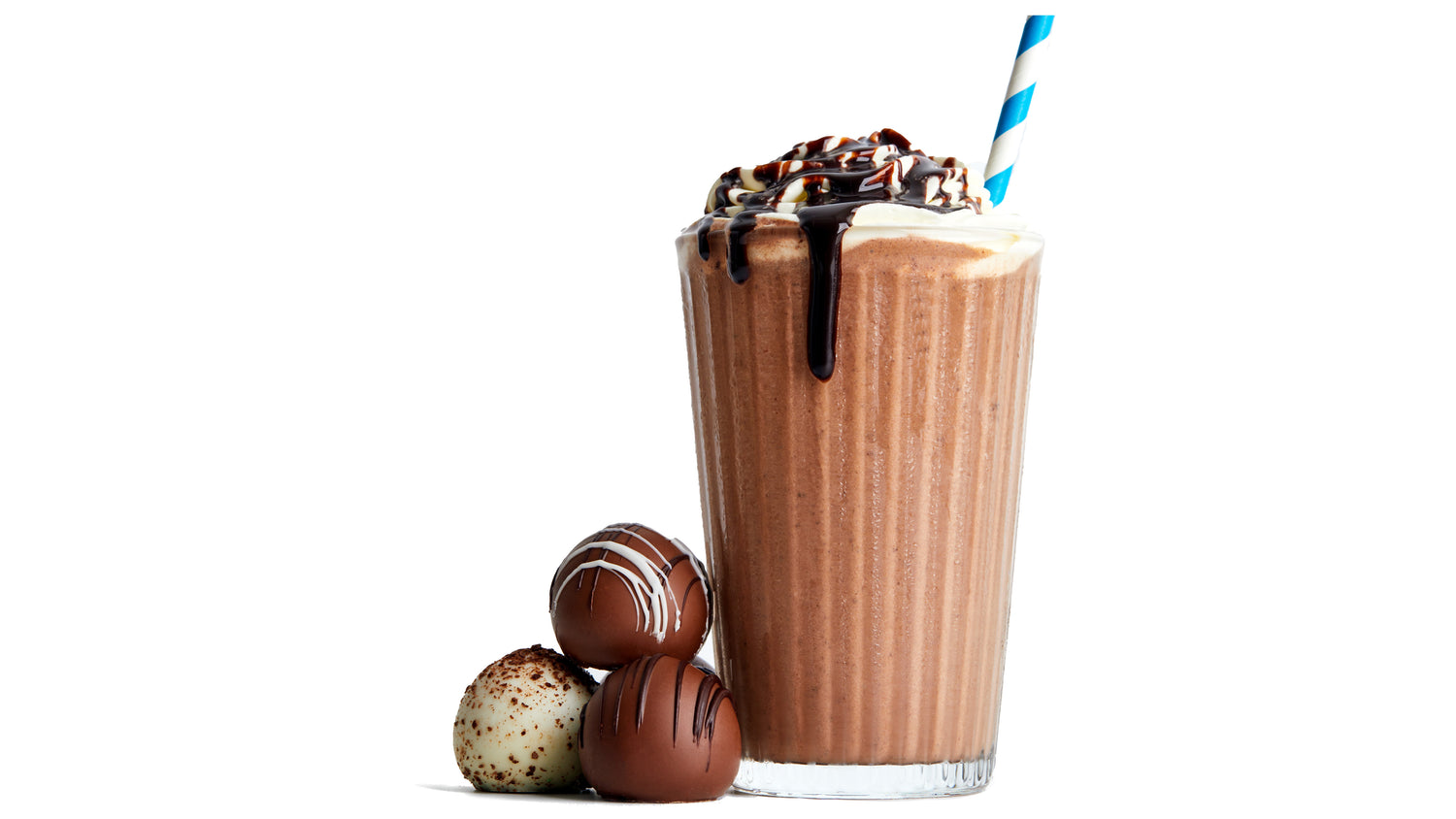
#1 chocolate flavor
Chocolate Truffle
A combination of milk chocolate and dark chocolate that is perfectly balanced, with finishing notes of white chocolate. A smooth chocolate flavor that you will crave every day without ever getting burnt out.
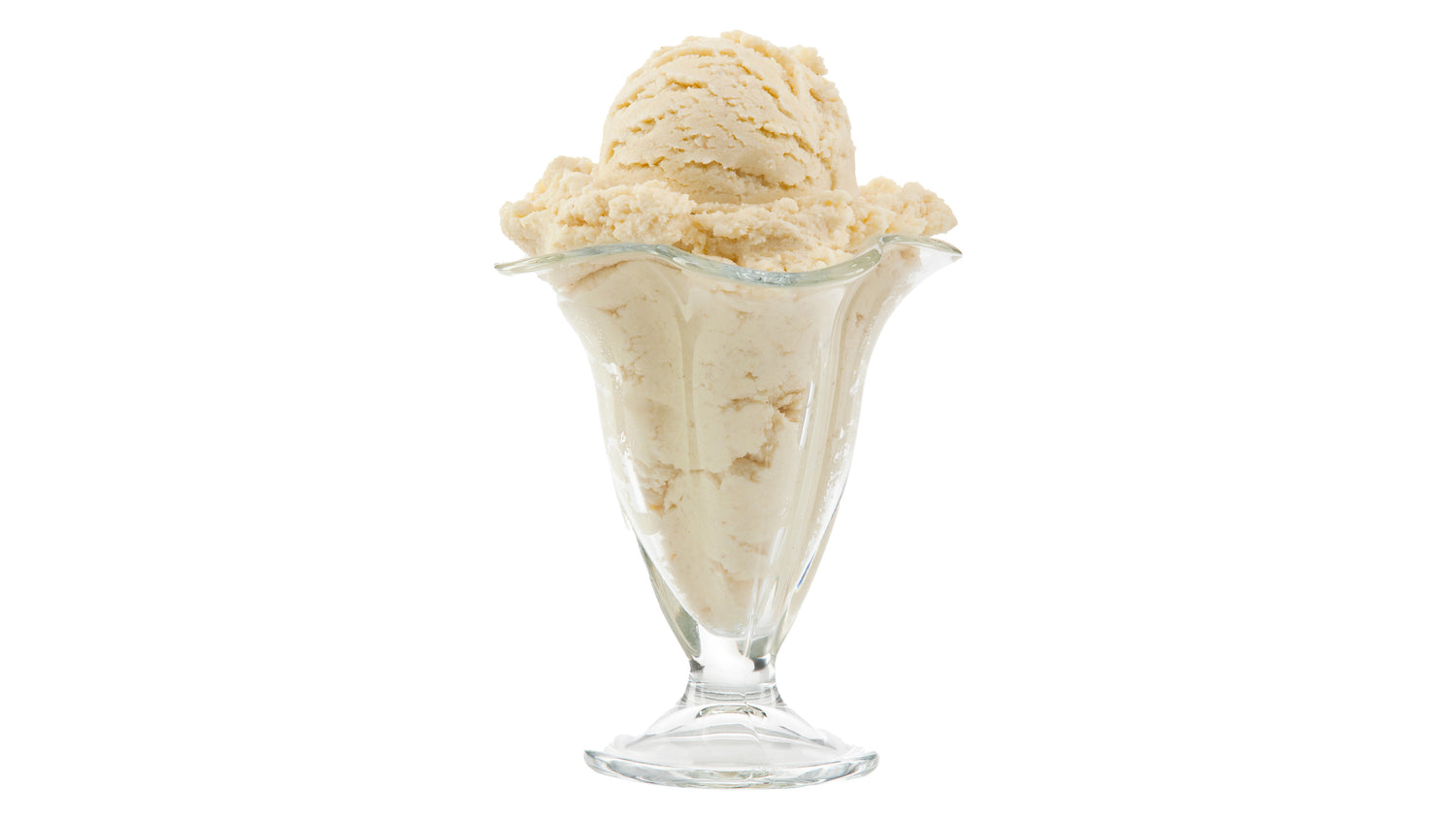
Gourmet Vanilla
If you like a smooth, rich vanilla, this flavor will be your #1. You'll never get tired of it! Popular for those who don't want the cake notes of our Cake Pop, and look for a delicious & versatile vanilla. Bonus: if you like making protein smoothies, this is a must-have as your smoothie base.
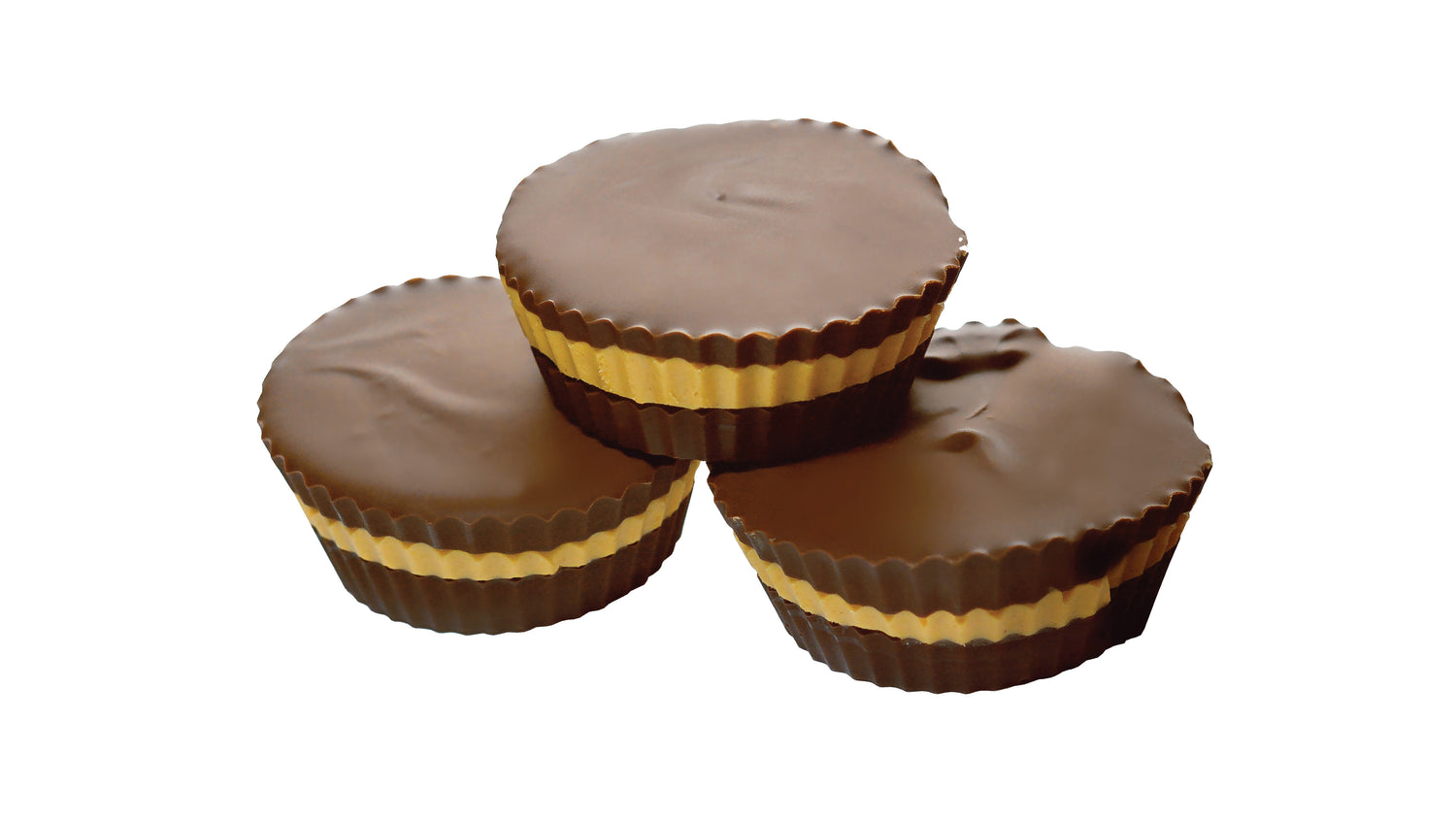
Chocolate Peanut Butter Cup
Need we say more? This isn't a boring combination of some chocolate and peanut butter flavoring. This actually tastes like a peanut butter cup! You'll know what we mean as soon as you try it. This is a great way to fix those chocolate candy cravings.
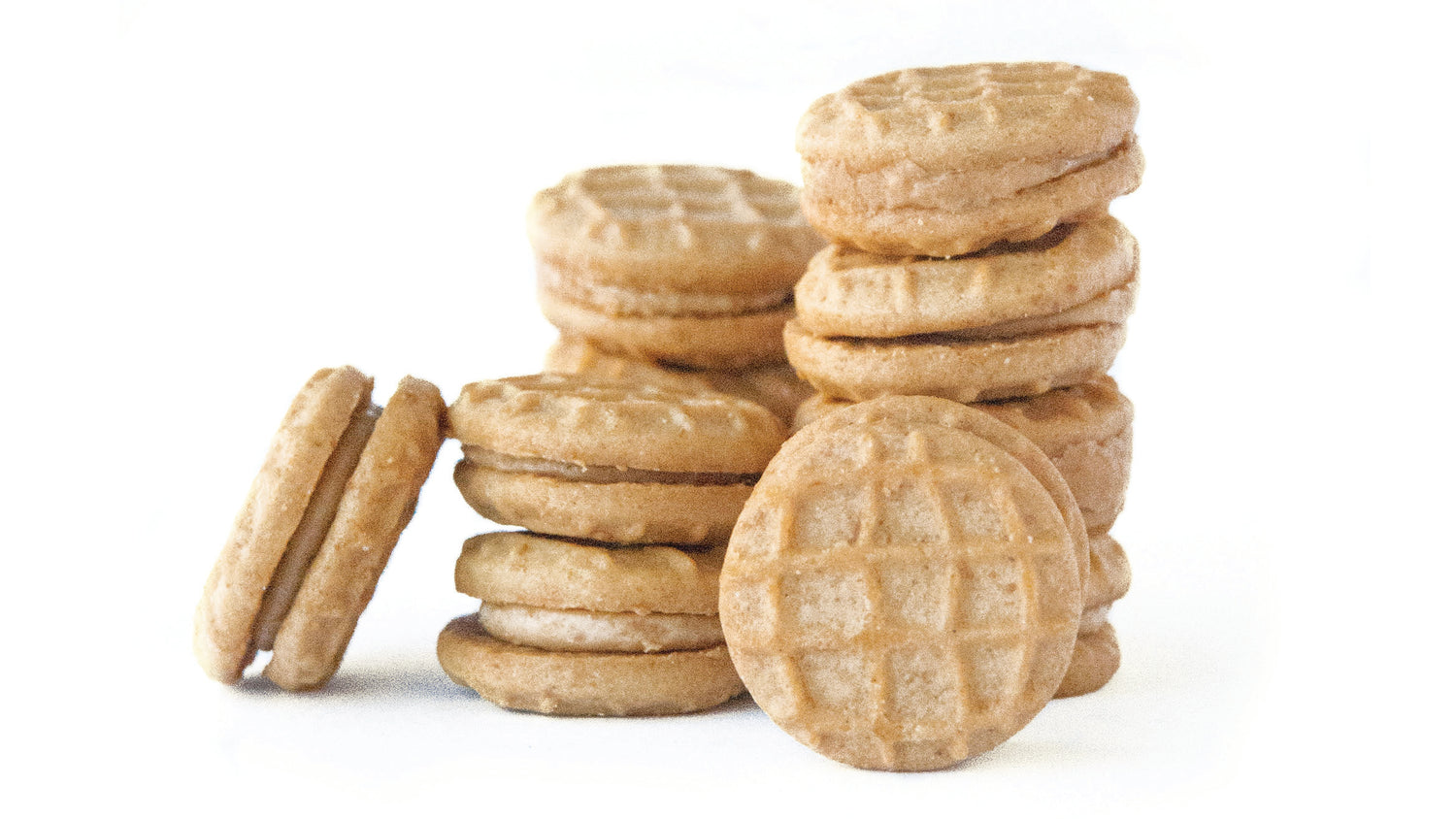
Peanut Butter Cookie
A combination of sweet peanut butter with notes of cookie and a pinch of salt. If you've ever had these peanut butter cookies as a child, prepare for nostalgia in your shaker cup.
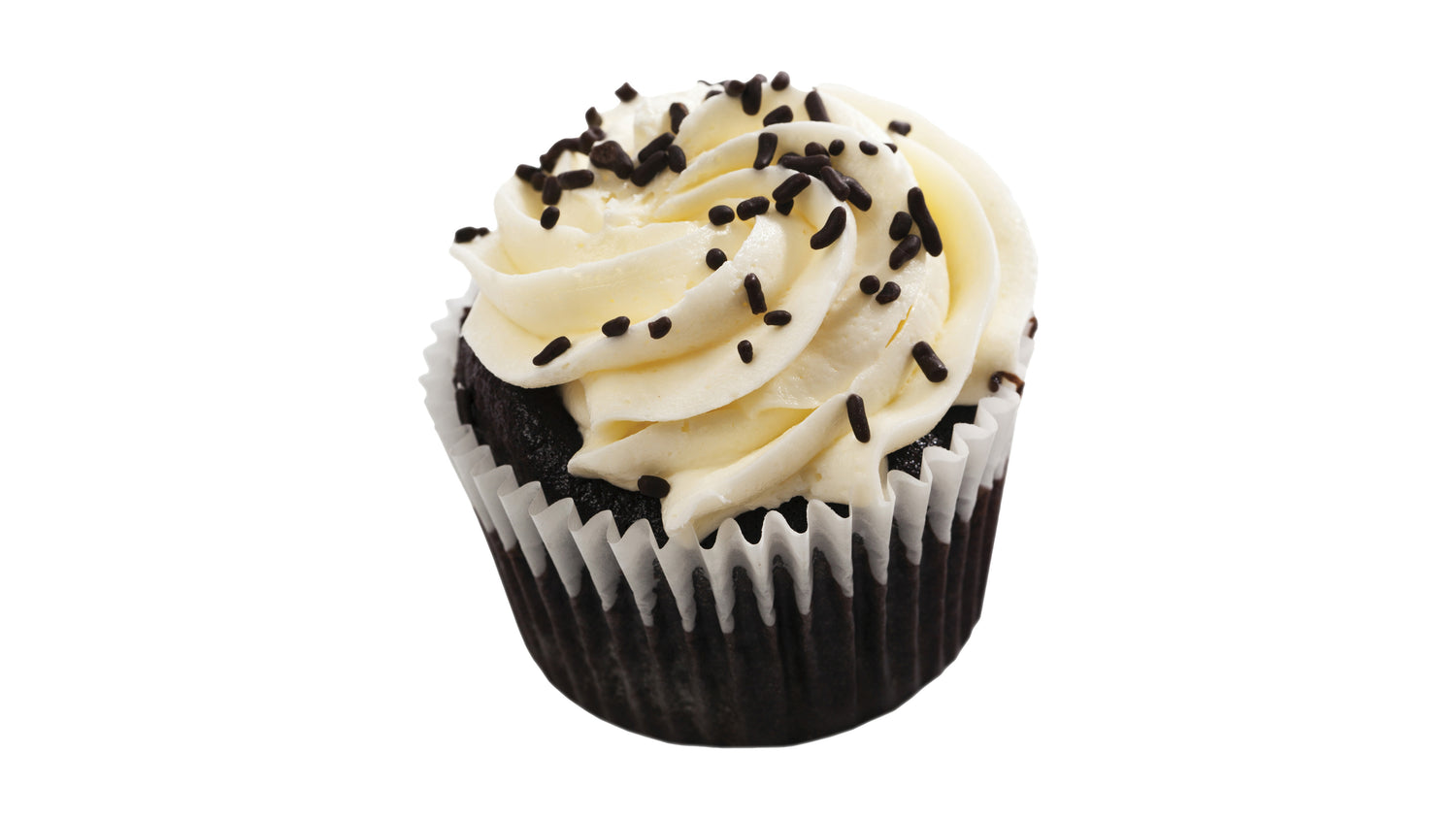
Frosted Chocolate Cupcake
A chocolate cake base, with finishing notes of a sweet vanilla frosting. Sweeter and richer than our Chocolate Truffle flavor, with distictive notes of both chocolate cake and vanilla frosting.
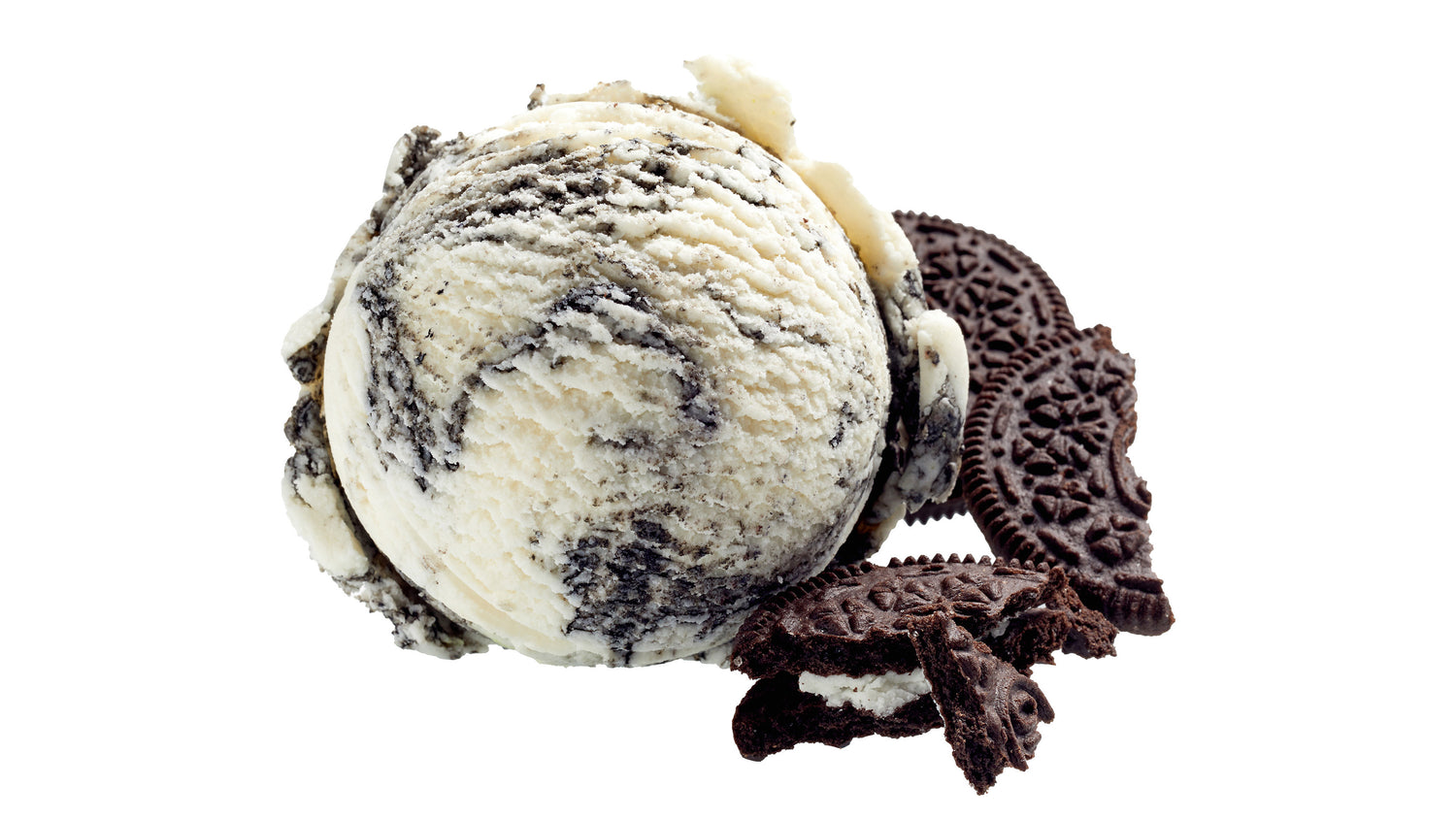
Cookies N Cream
Vanilla ice cream base with notes of dark chocolate cookie and vanilla icing. One of the toughest flavors to master, we've captured every note of flavor you taste in a real cookies & cream scoop of ice cream. With real cookie crumbles!
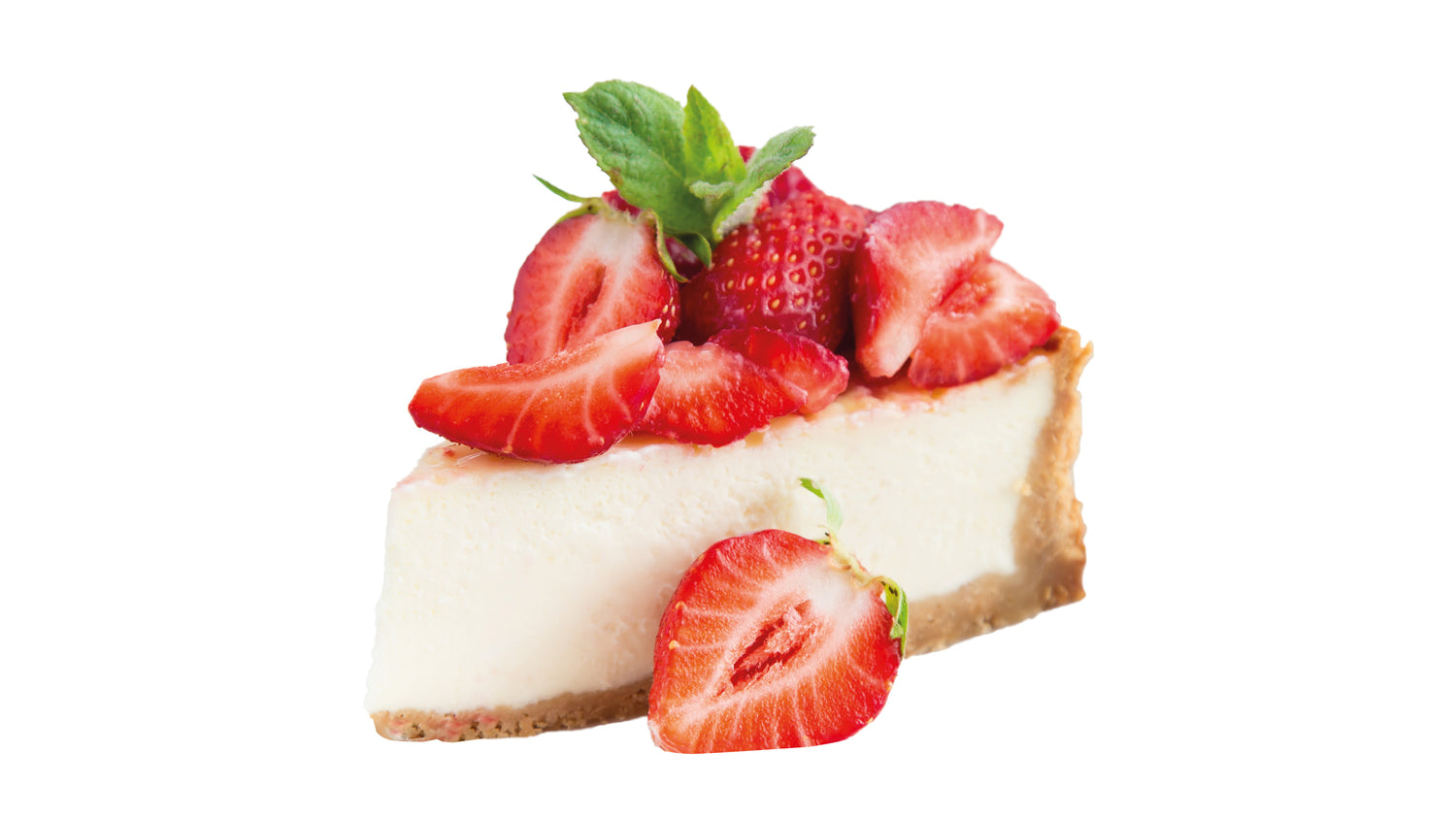
Strawberry Cheesecake
Smooth cheesecake base with balanced strawberry notes. It was important to us that this actually taste like a strawberry cheesecake dessert, and nothing like the bland strawberry proteins on the market.
Our Flavor Process
If you've never tried a Select flavor, you are in for a real treat. What sets our flavors apart from the rest is simple: our flavors actually taste like their name.
What do we mean? Well, it's common in the industry to make a basic "chocolate" or "vanilla" flavor, but then give it a name that sounds really exciting. That's not our jam.
One of the most common questions we get from customers who have shopped other brands is, what's the difference between your Chocolate Truffle and Frosted Chocolate Cupcake? Aren't they both "just chocolate flavor"?
Actually, neither of them are just chocolate flavor. They taste distinctly different!
Many of our flavors carry a taste experience. You aren't hit with one flavor at once. Different notes of the flavor are preset at different moments of every sip you take.
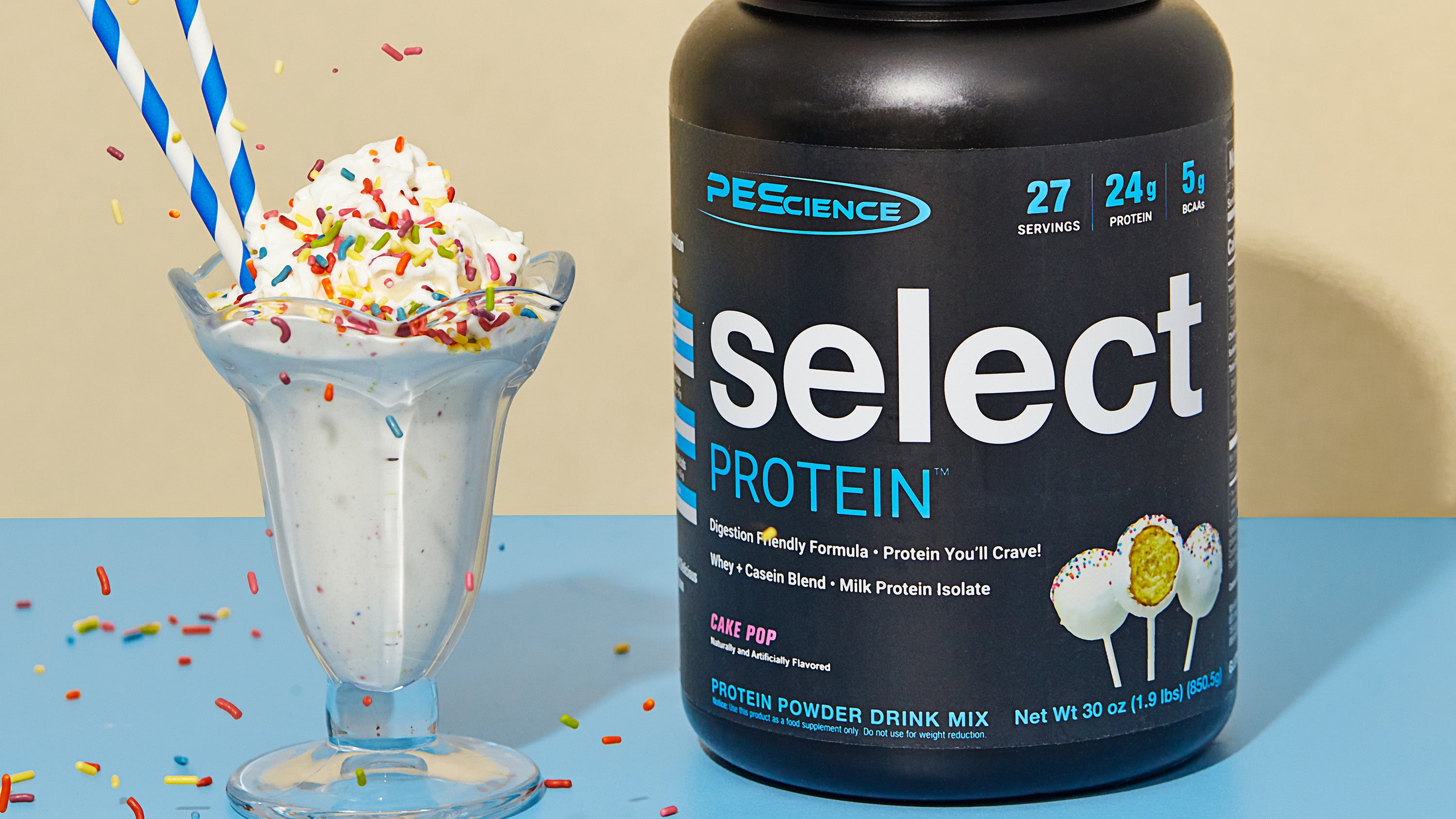
Want new flavor notifications?
Be the first to know.

